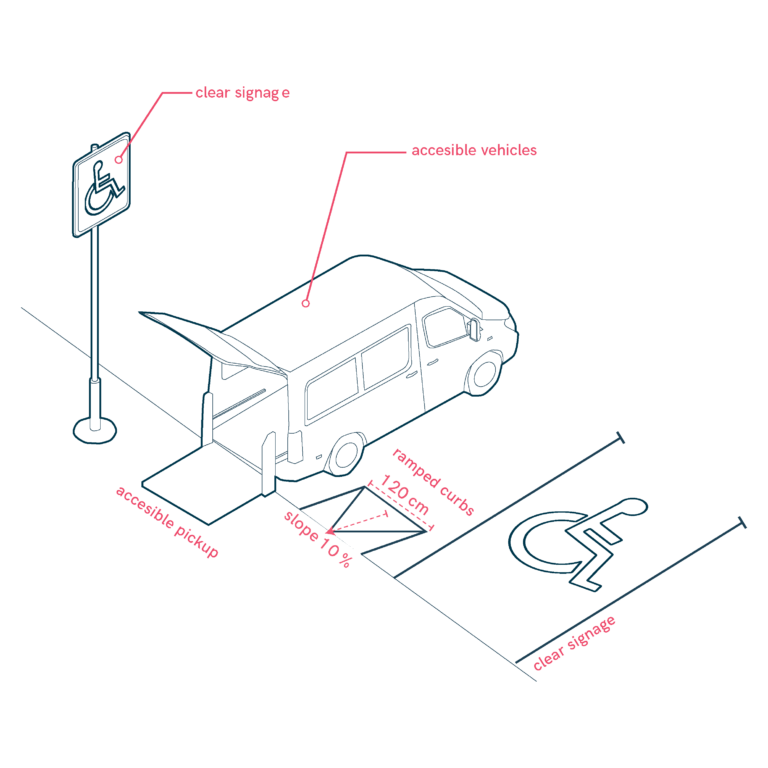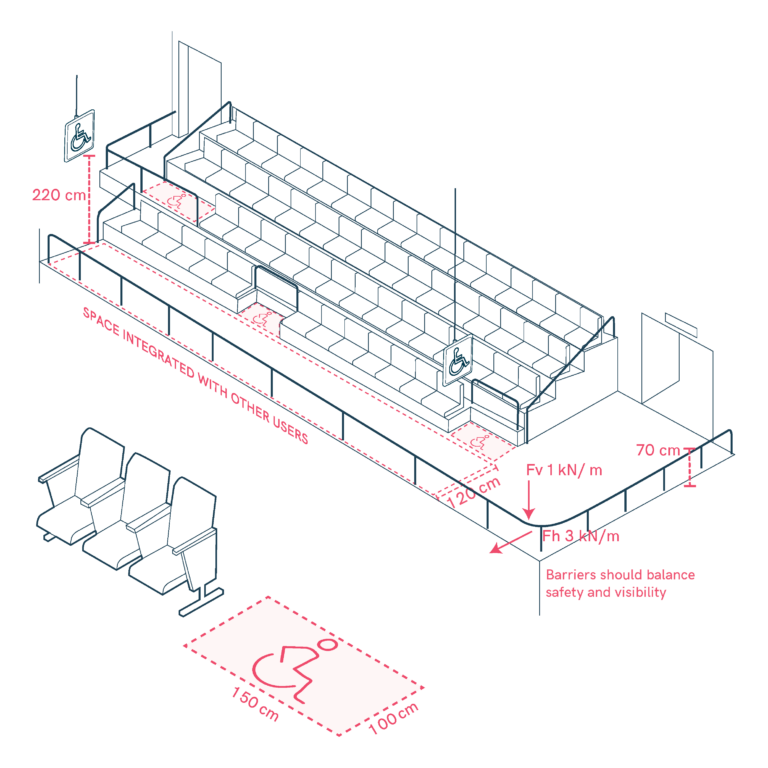
Carers
Spectrum of abilities
Caregivers play a vital role in providing physical, emotional, and social support to individuals with disabilities, young children, and older adults. Their responsibilities range from assisting with daily activities and managing physical, mental, and emotional health, to offering social companionship to prevent unwanted loneliness. Additionally, in some cases, the use of service animals contributes to improving the quality of life for those being cared for. Caregivers develop skills such as effective communication, problem-solving, and stress management, adapting to the specific needs of each person under their care. It is important to recognize that caregiving often falls disproportionately on women, particularly migrant women. Care work is largely unpaid and undervalued, and caregivers may face structural barriers that limit their access to appropriate resources.
Accesibility and inclusion actions
The experiences of caregivers vary depending on the group to whom the person being cared for belongs and the context in which care is provided. Those caring for individuals with disabilities must adapt to specific accessibility and well-being needs, while caregivers of young children face challenges related to education and emotional development. To improve the conditions for caregivers, it is essential to ensure accessible environments both in the physical and digital spheres. This includes creating an accessible environment for those they care for, as well as providing access to support services and legislation that protects their labor rights.
Key beneficiary users
Improvements in accessibility benefit both caregivers and those under their care, enhancing the quality of care and reducing the burden on those performing this work. Moreover, these measures positively impact families, communities, and the health and social assistance sectors, promoting a more equitable distribution of caregiving work and fostering greater inclusion and well-being for all involved.

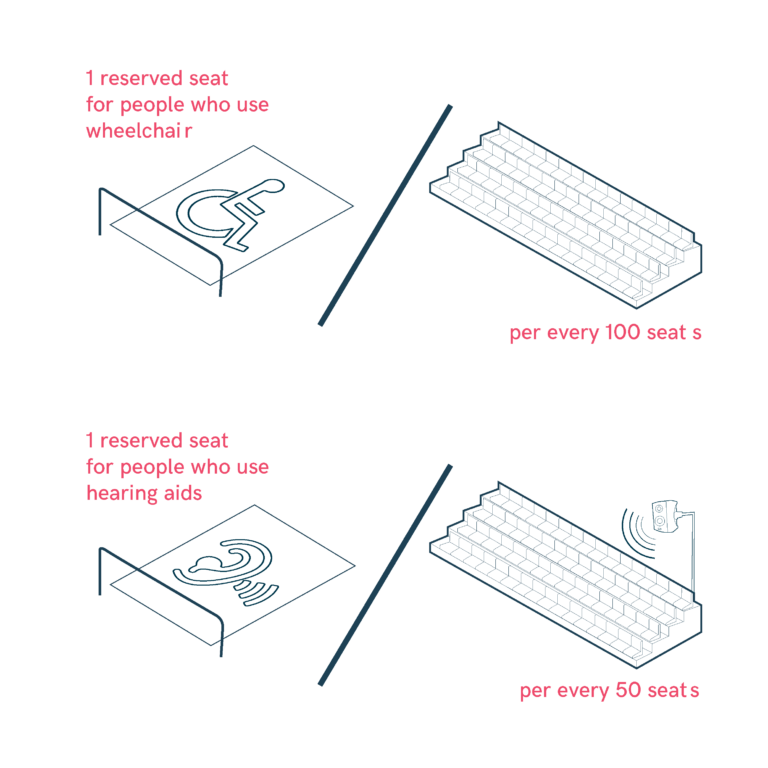
Accesible leisure
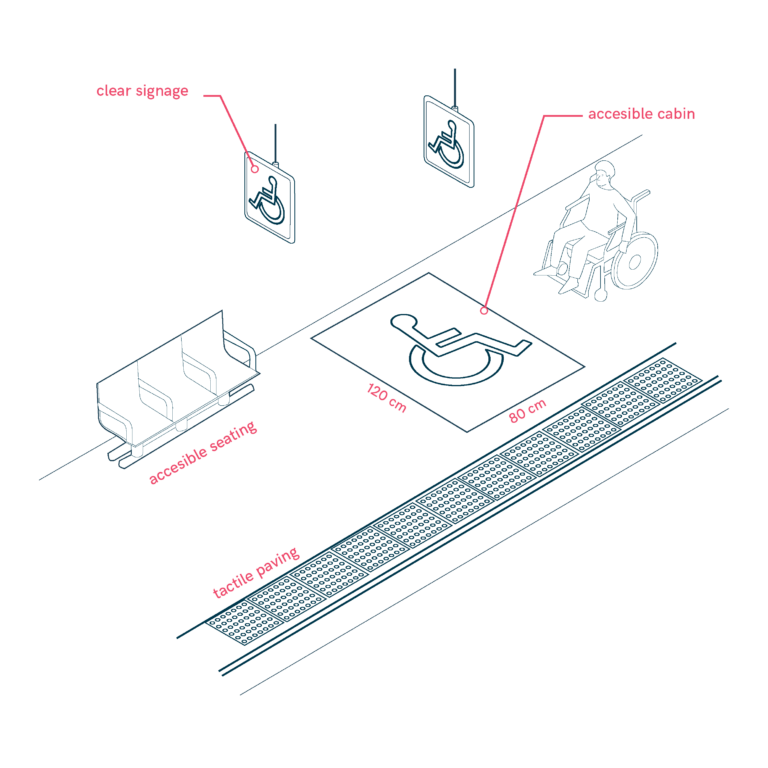
Accesible train platforms
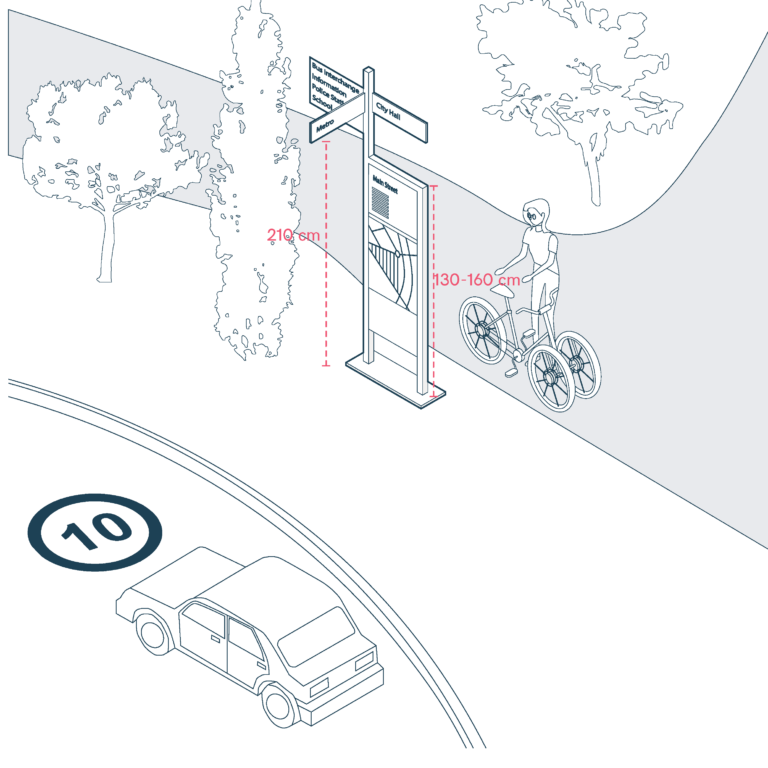
Access and Connectivity
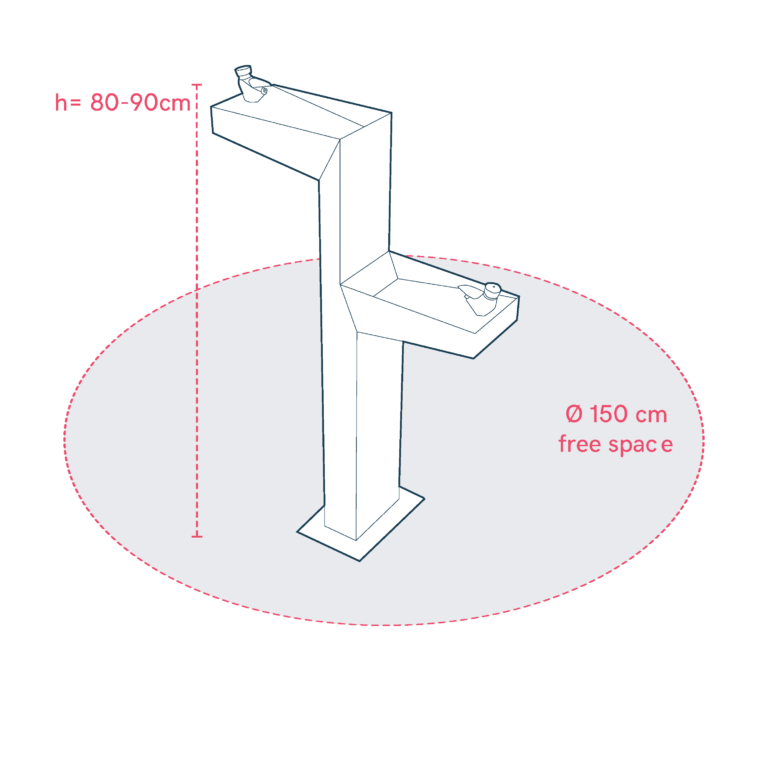
Accessible and Inclusive Drinking Fountains
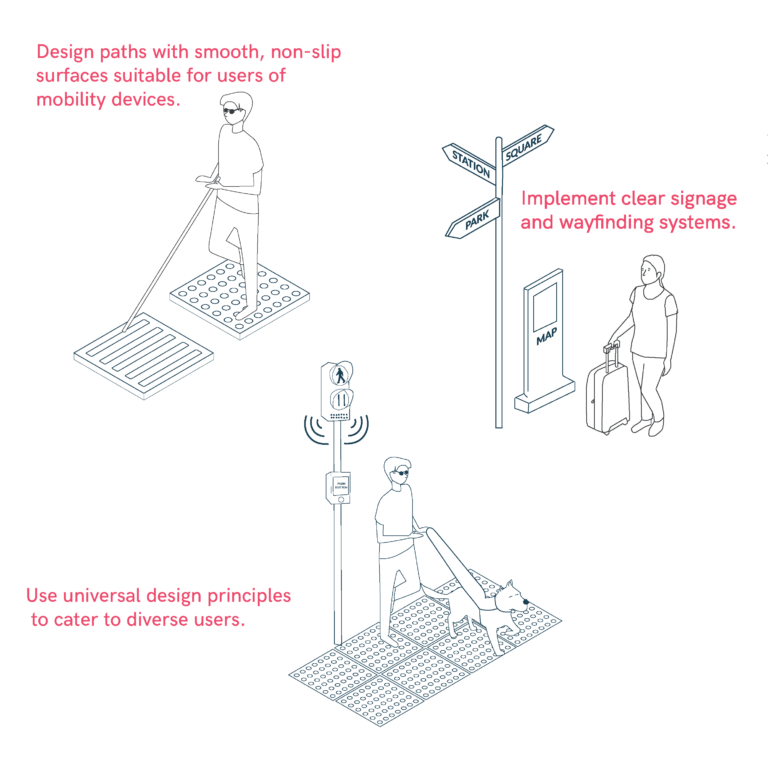
Accessible and Well-Maintained Public Spaces

Accessible Colors and Contrast
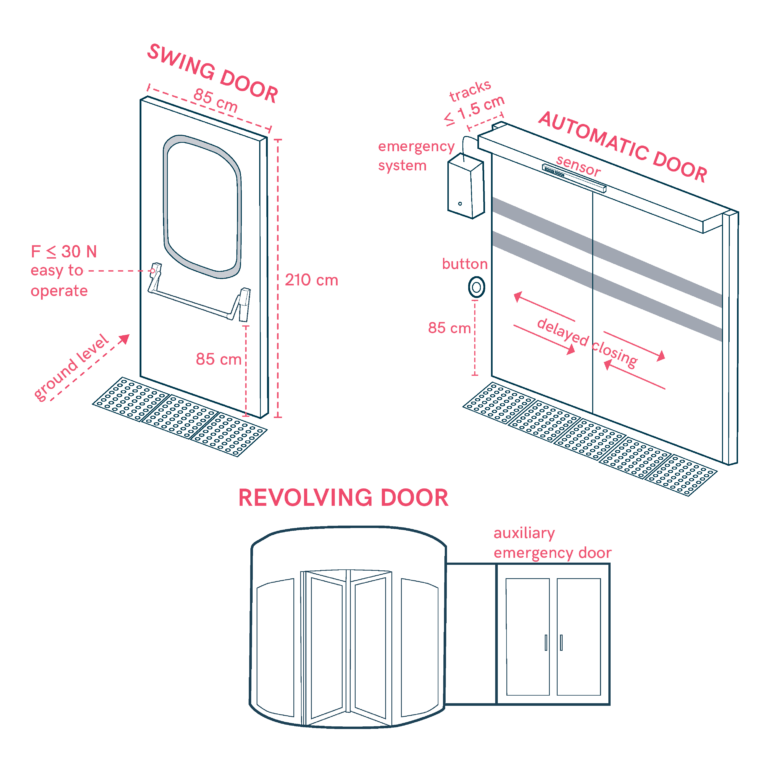
Accessible Doors for Inclusive Mobility
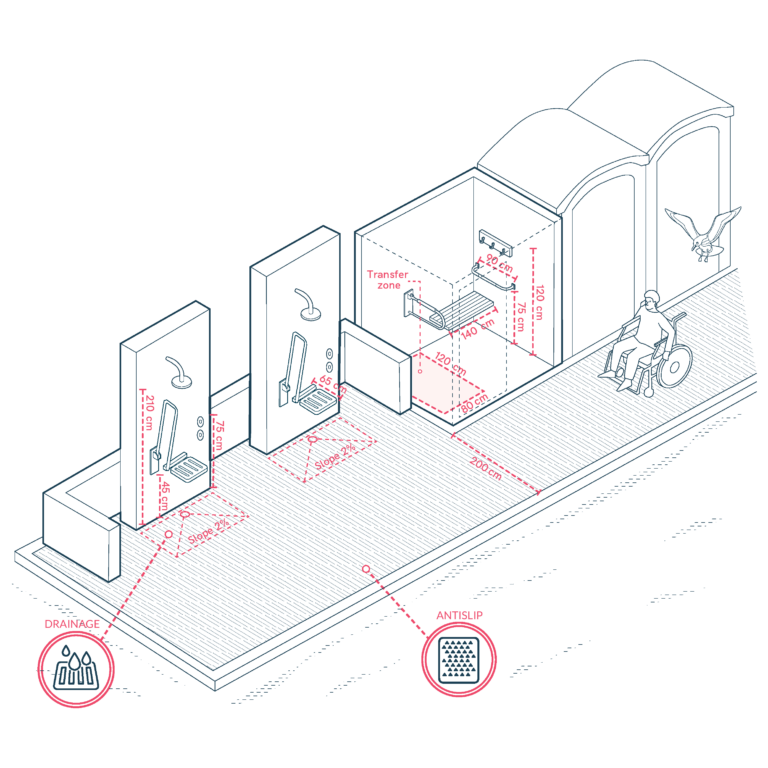
Accessible Dressing Rooms and Showers
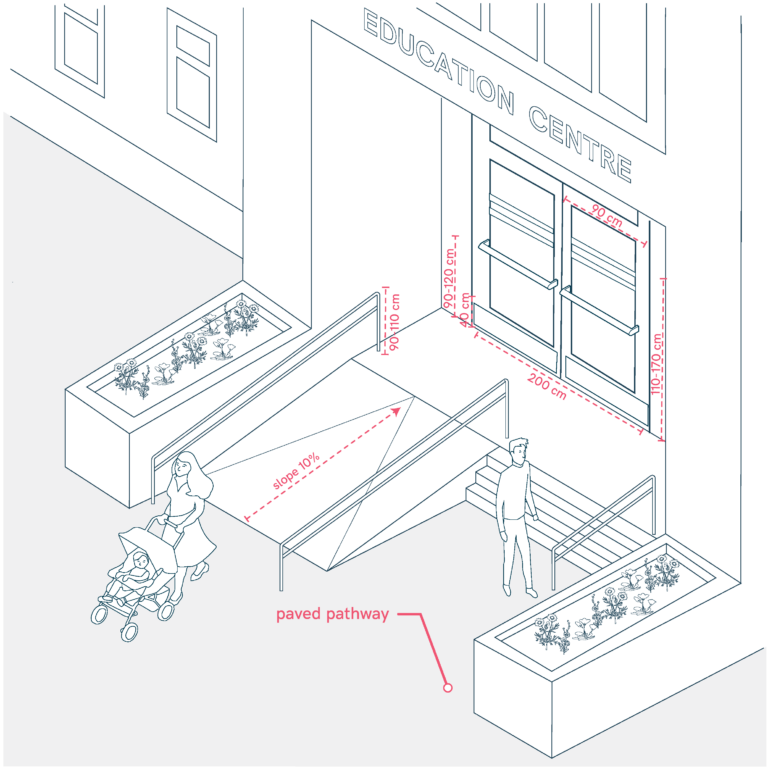
Accessible Entrance and Gates
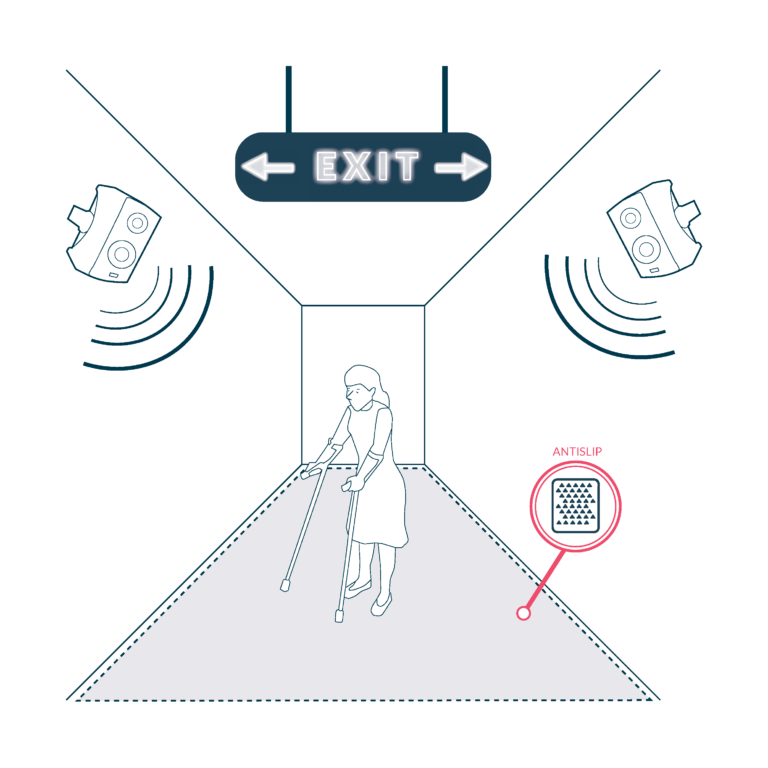
Accessible Gangways for Vessel Access

Accessible Lunch Counters and Tables
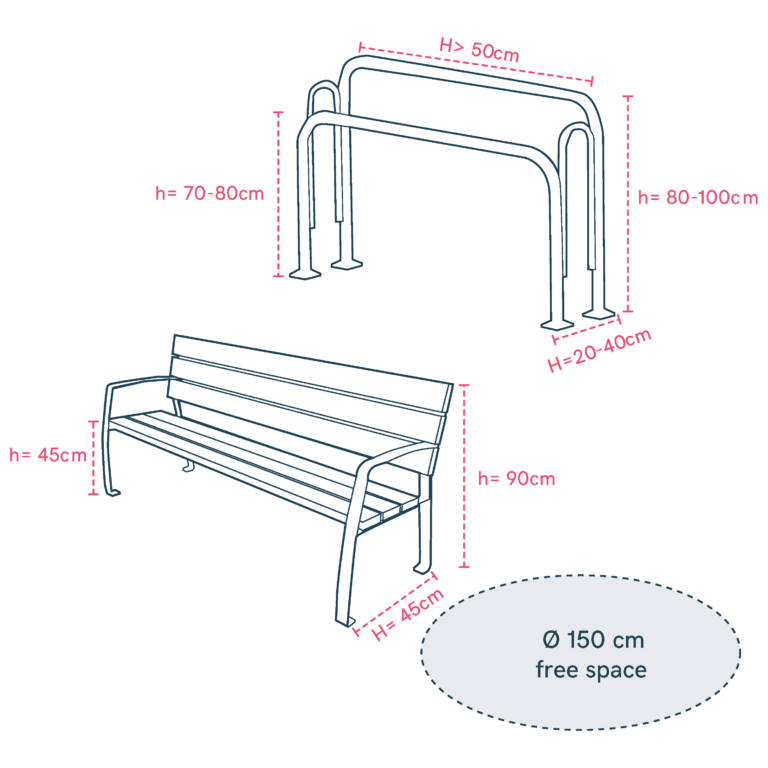
Accessible Seating Dimensions
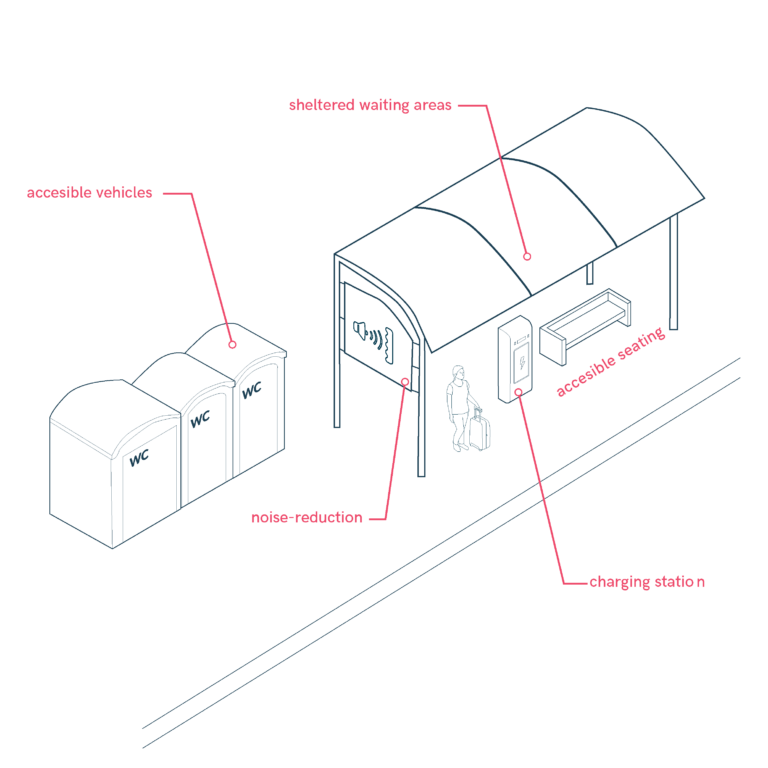
Accessible Waiting Areas and Station Facilities at Mobility Hubs
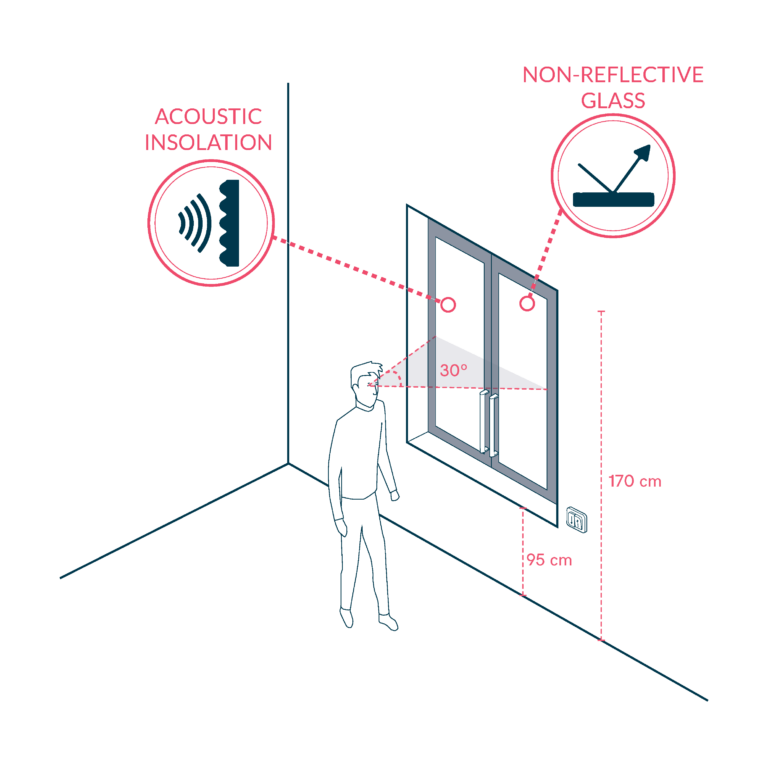
Accessible Windows

Adapt Motor Stimulation Play Opportunities
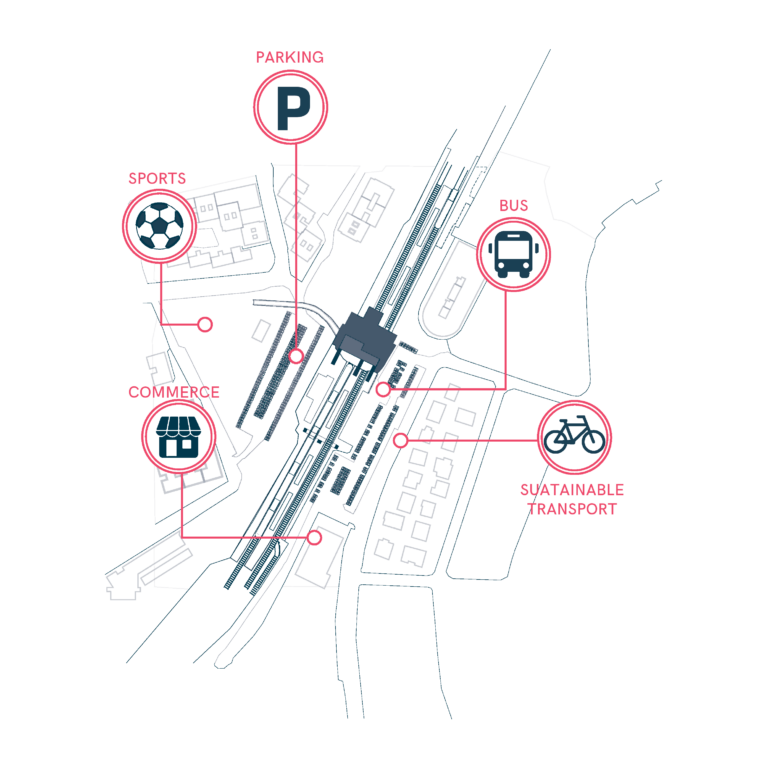
Approach to the station: Welcoming and Accessible Entrances
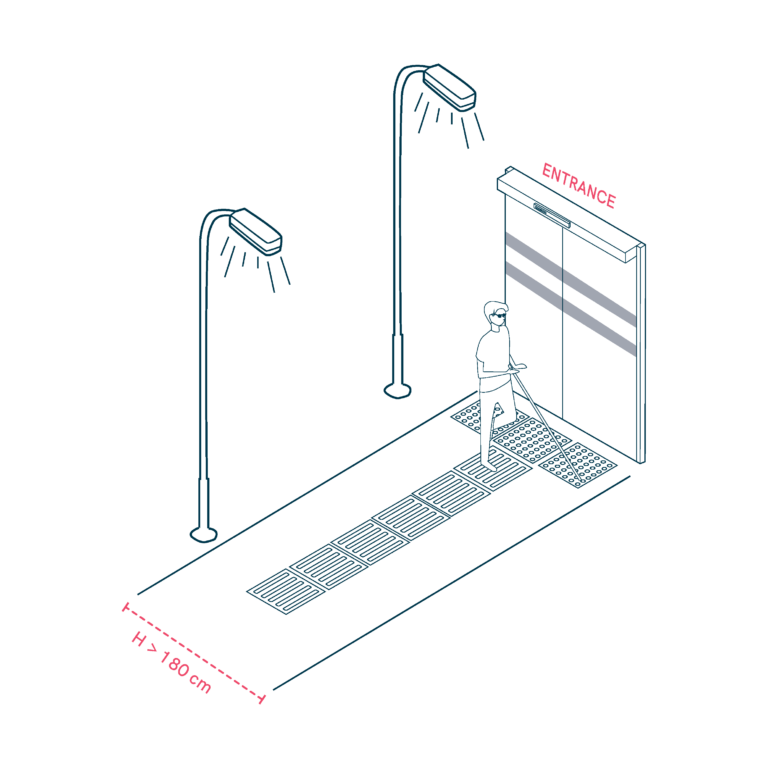
Around the Mobility Hub
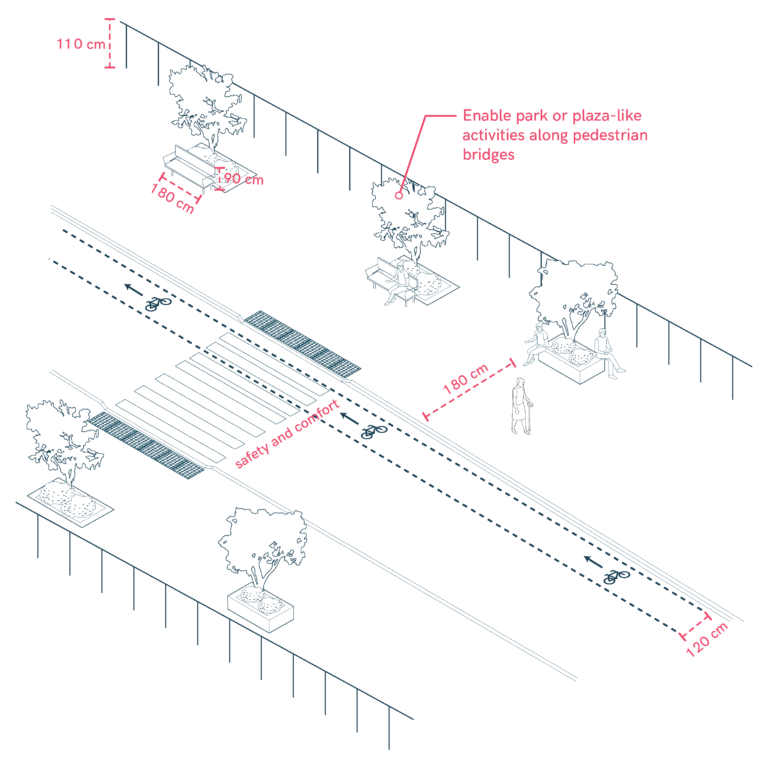
Bridges and Crosswalks for Safety
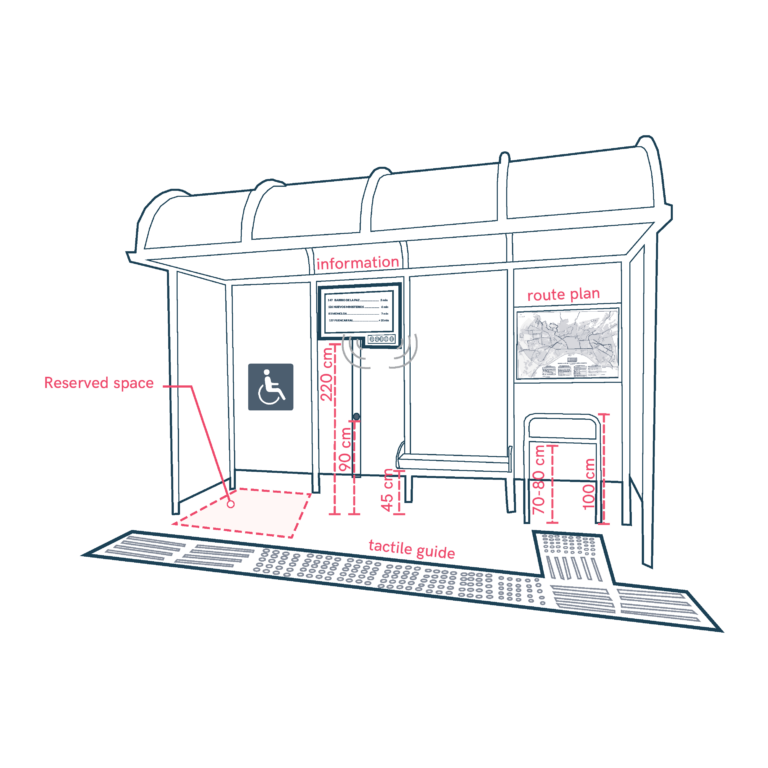
Bus Stop Design
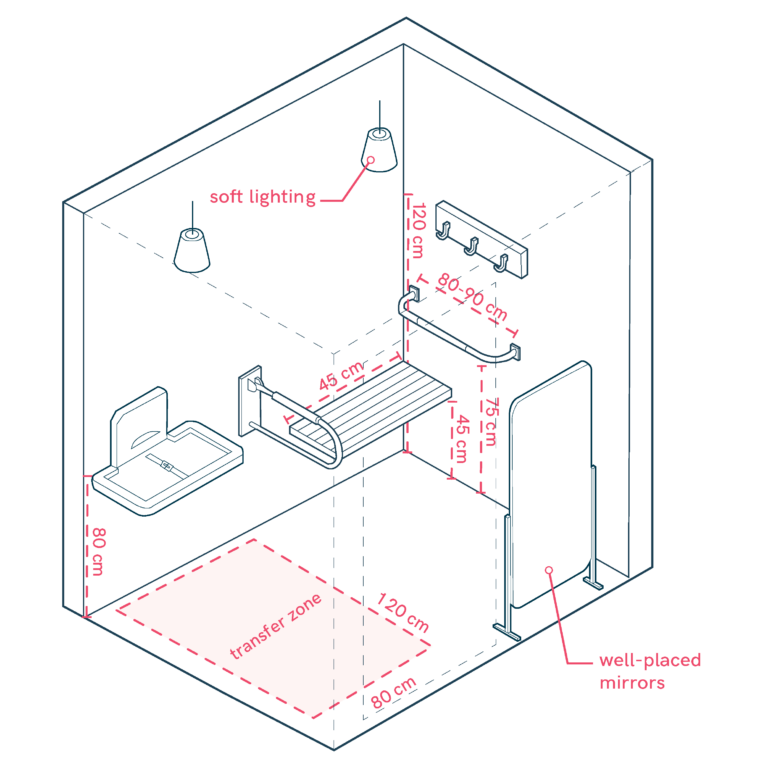
Changing Areas for Various Users
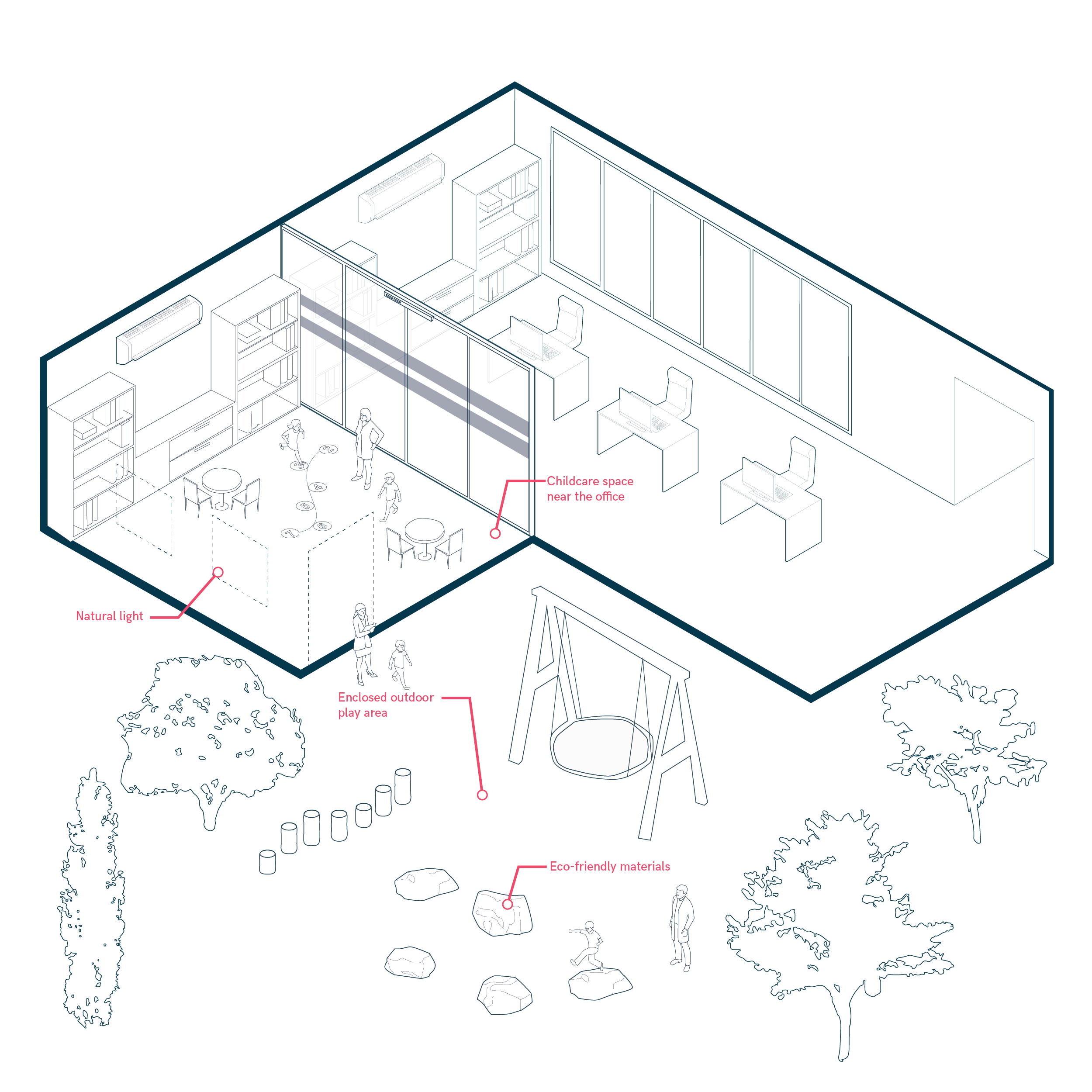
Childcare Facilities for Work-Life Balance
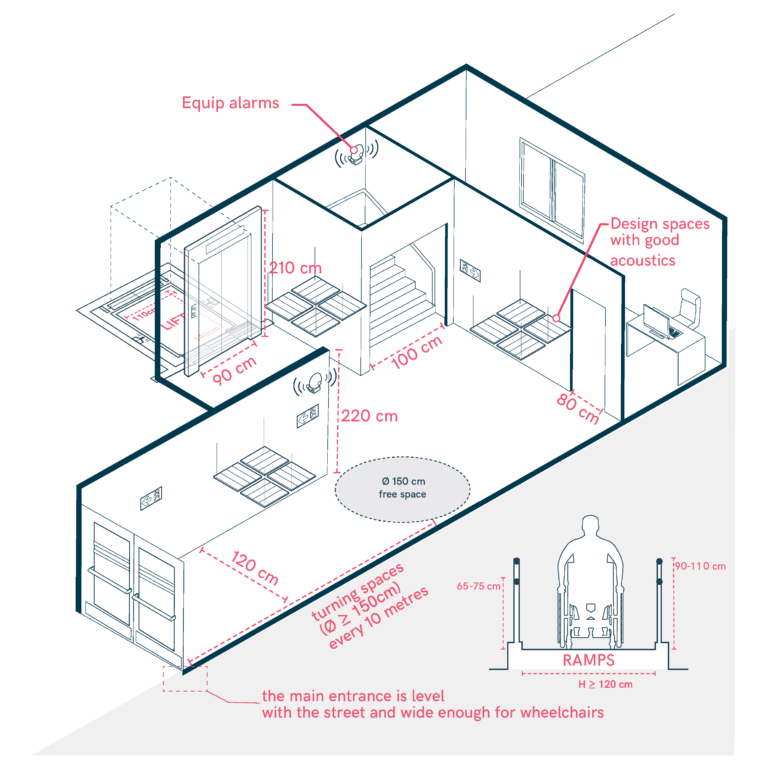
Circulation Within Educational Centers
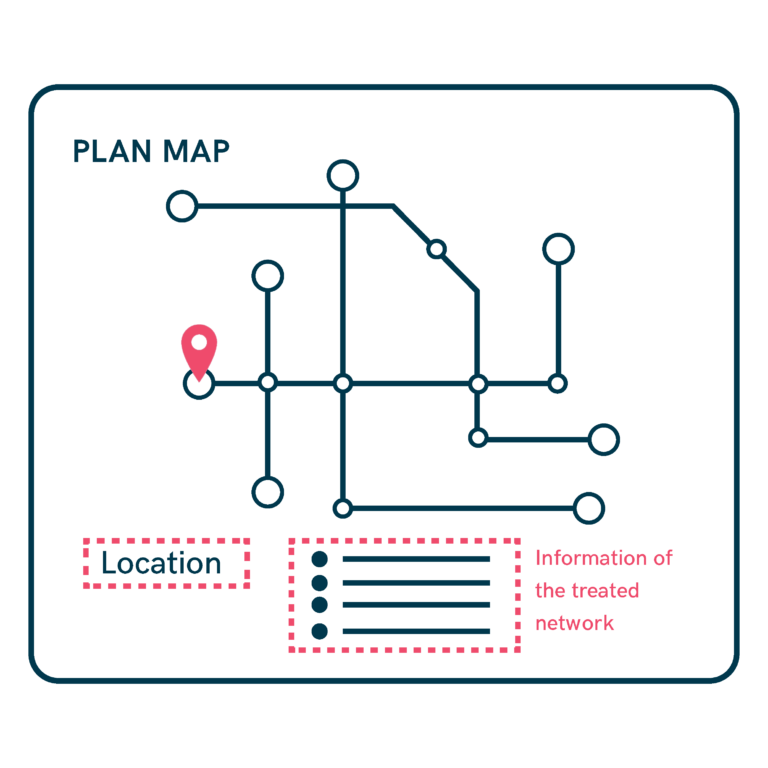
Clear Maps and Plans
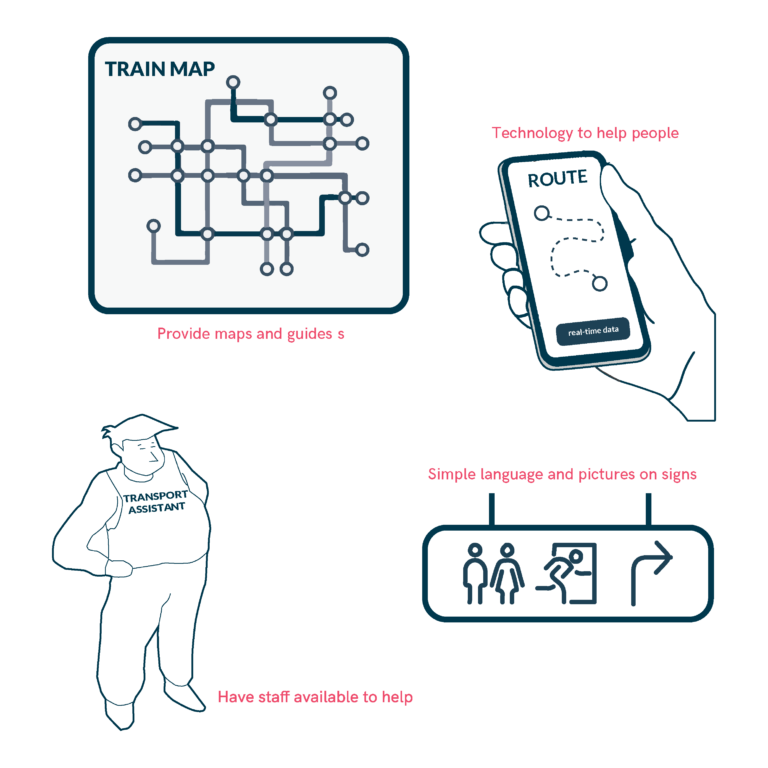
Cognitive-Friendly Design

Comfort and Safety Enhancements
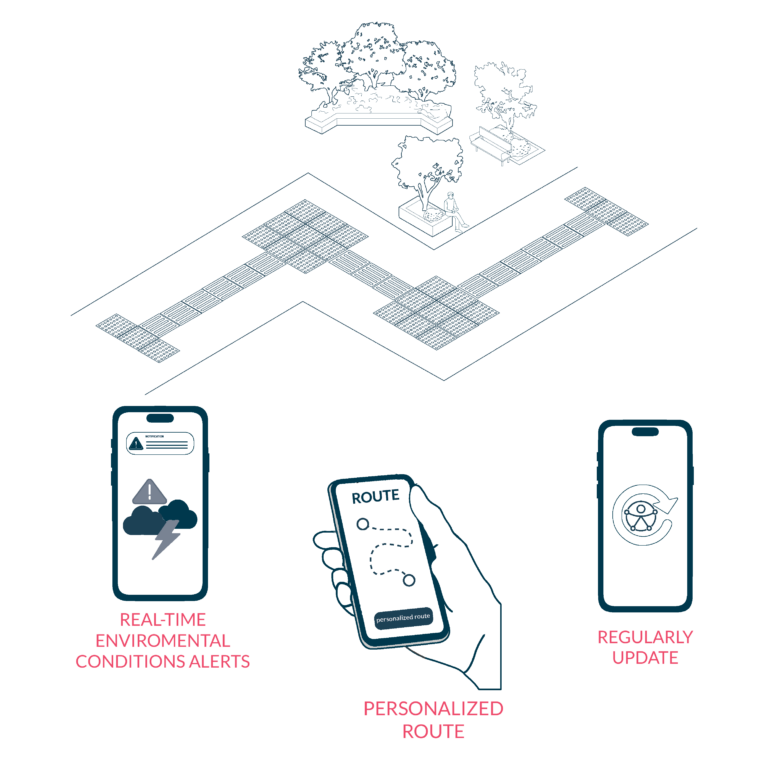
Comfort-Based Mobility Assistance

Commercial Activity Elements in Pedestrian Areas
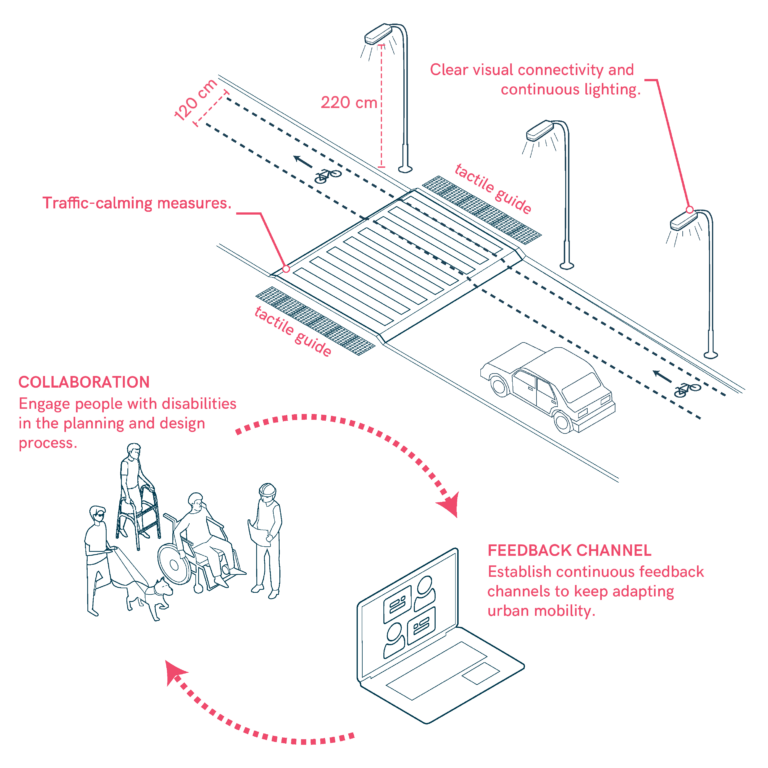
Community Engagement and Feedback
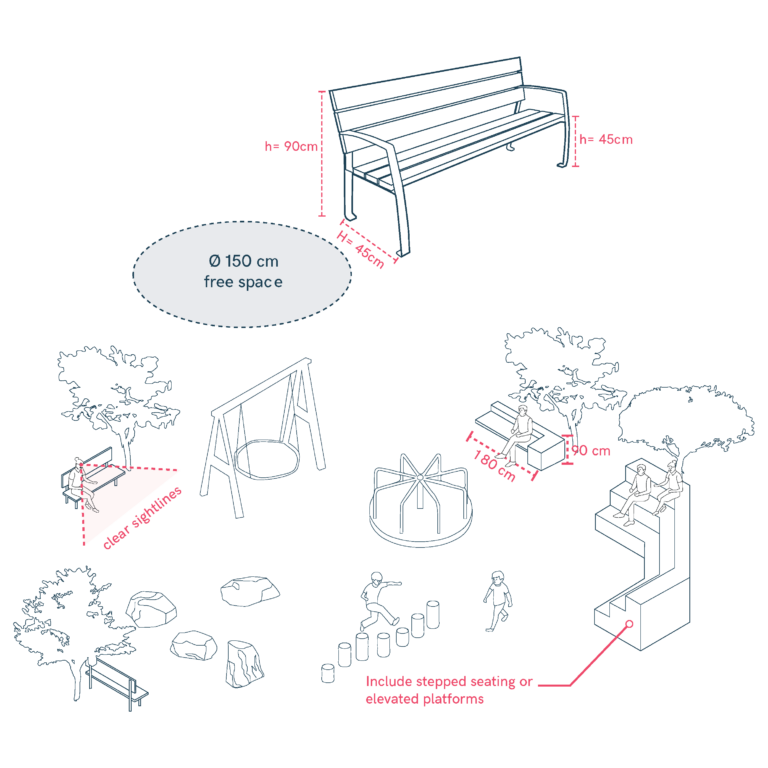
Create Comfortable Surveillance and Rest Areas
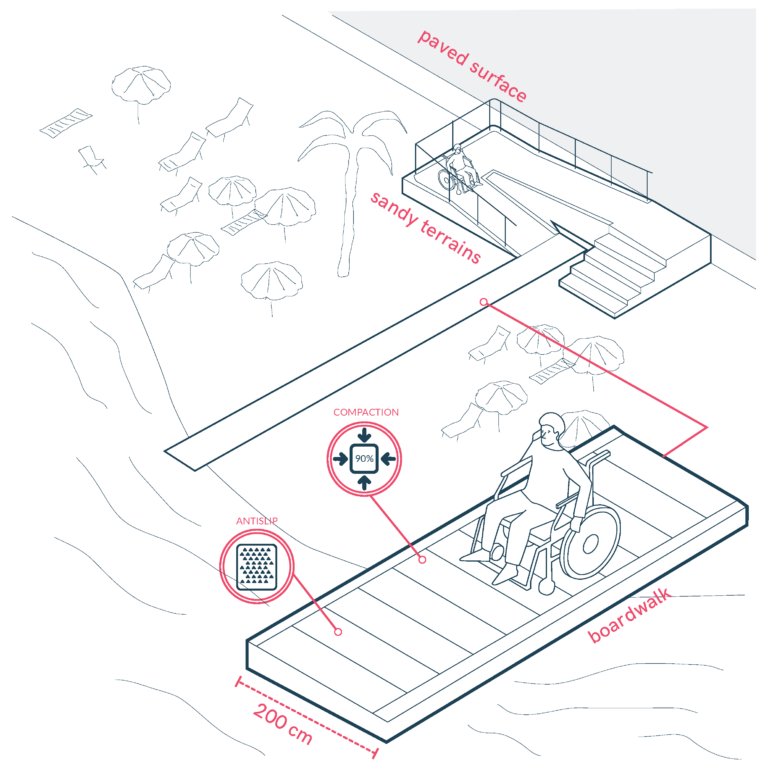
Create Safe Transitions Between Surfaces
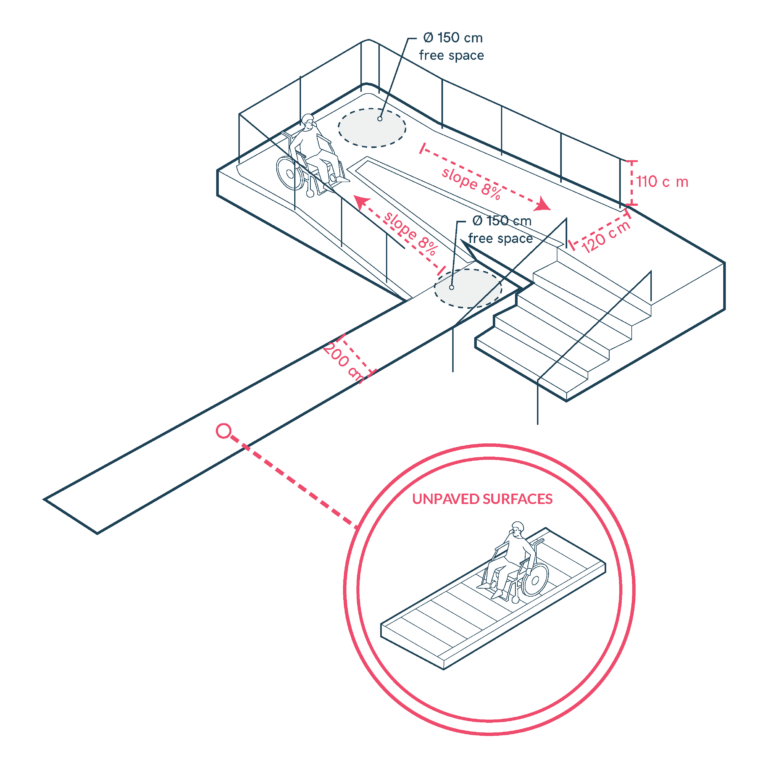
Design Accessible and Continuous Pathways
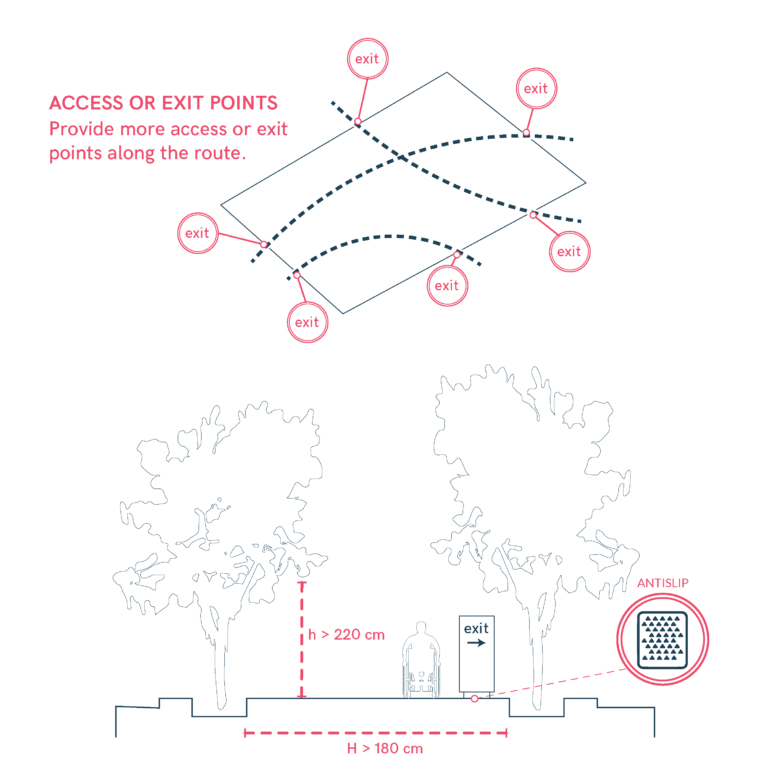
Design accessible pedestrian routes
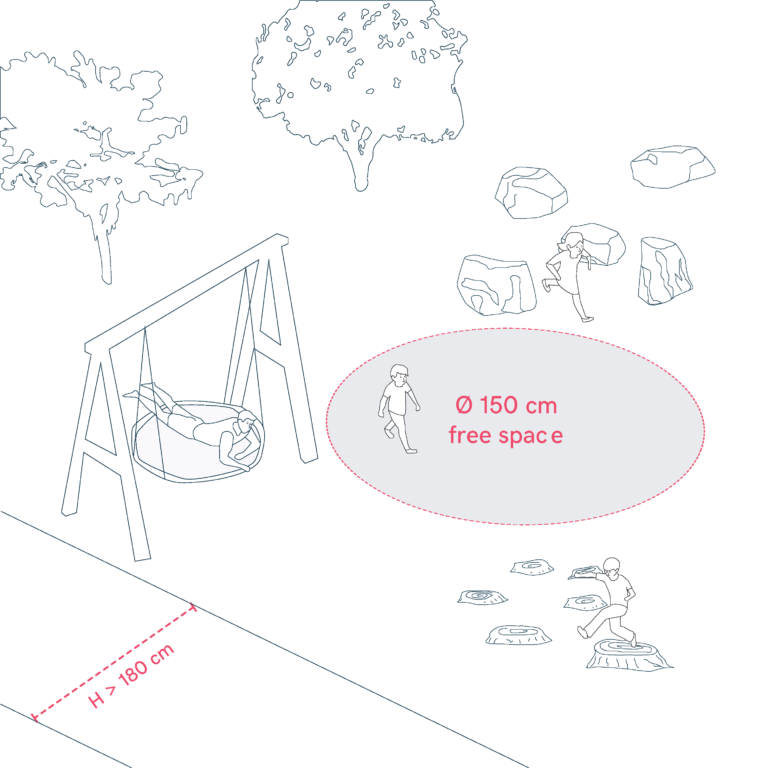
Design Accessible Play Areas
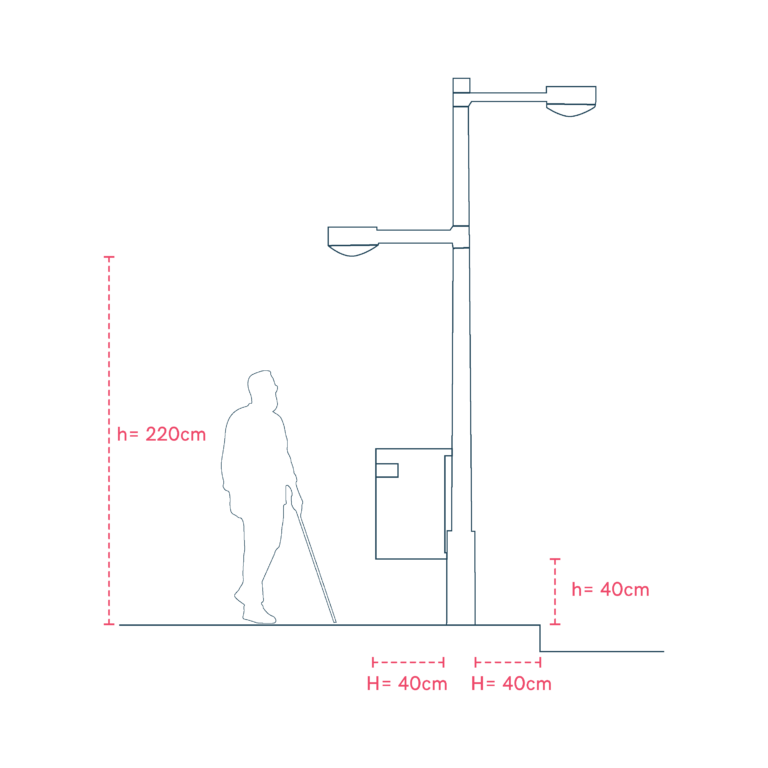
Design Accessible Rest Areas
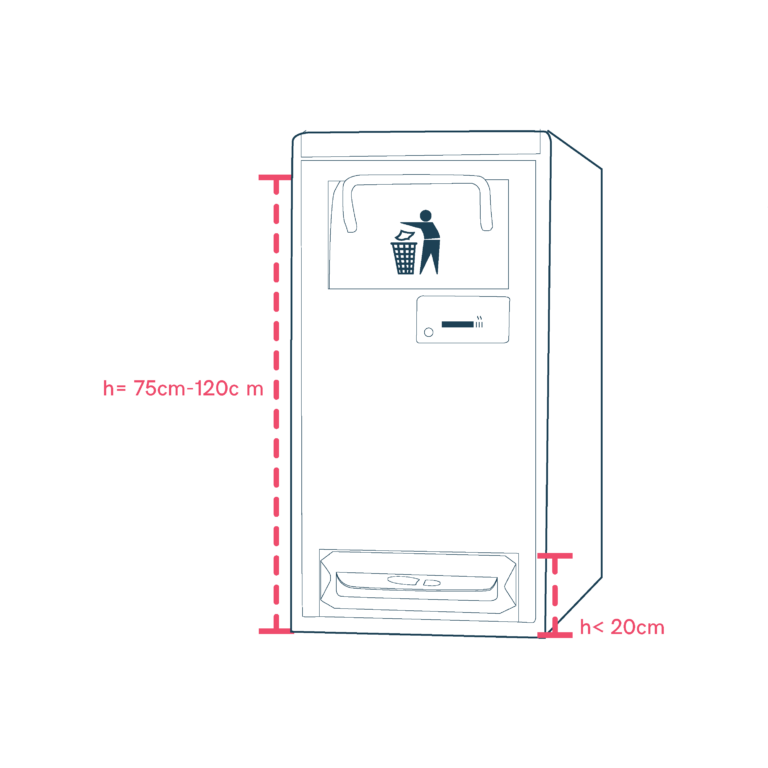
Design and Placement of Waste Bins and Containers
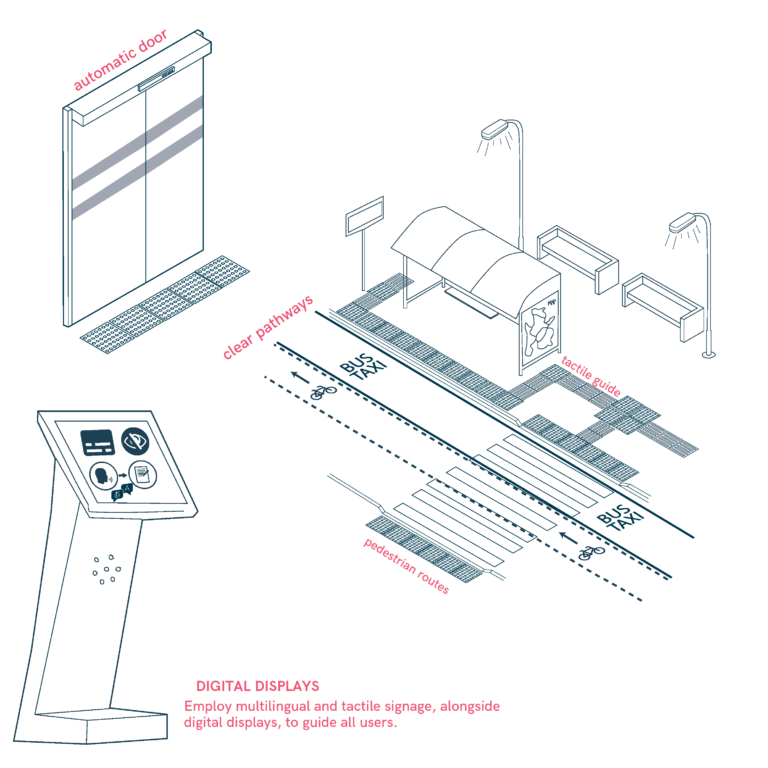
Design for Everyone’s Journey
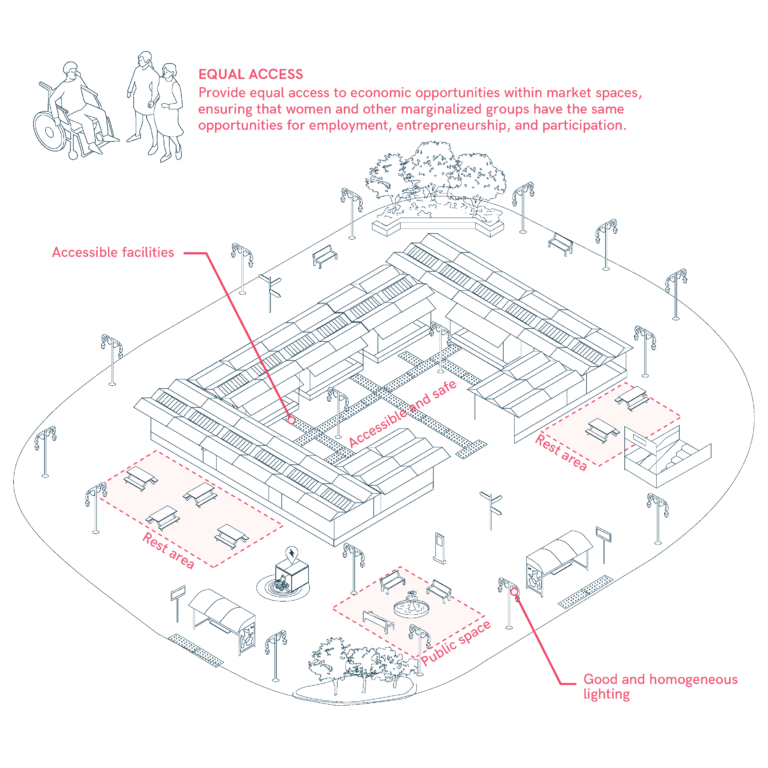
Design markets from a gender perspective

Designing areas that support interaction
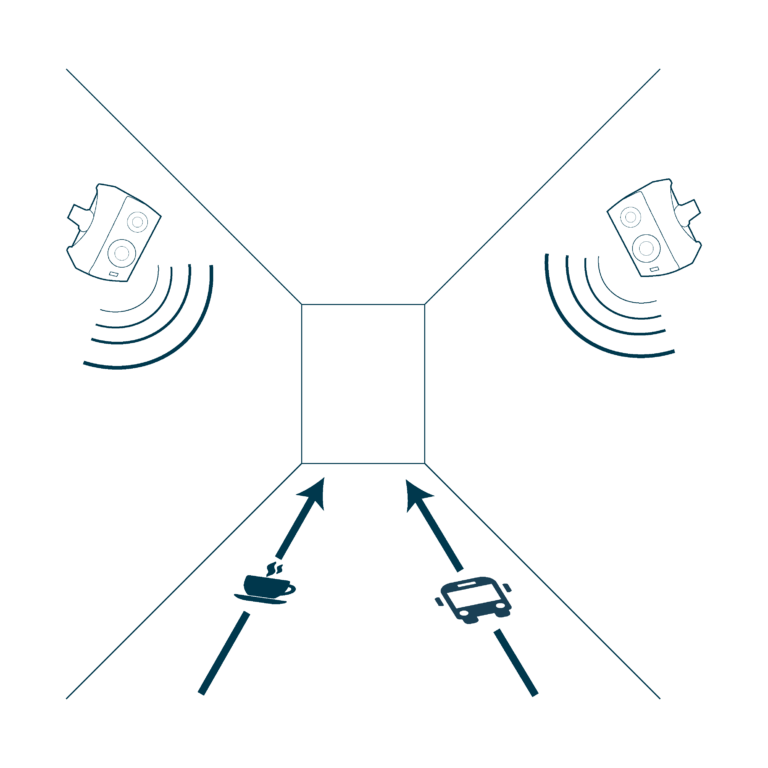
Designing Hallways on Passenger Vessels
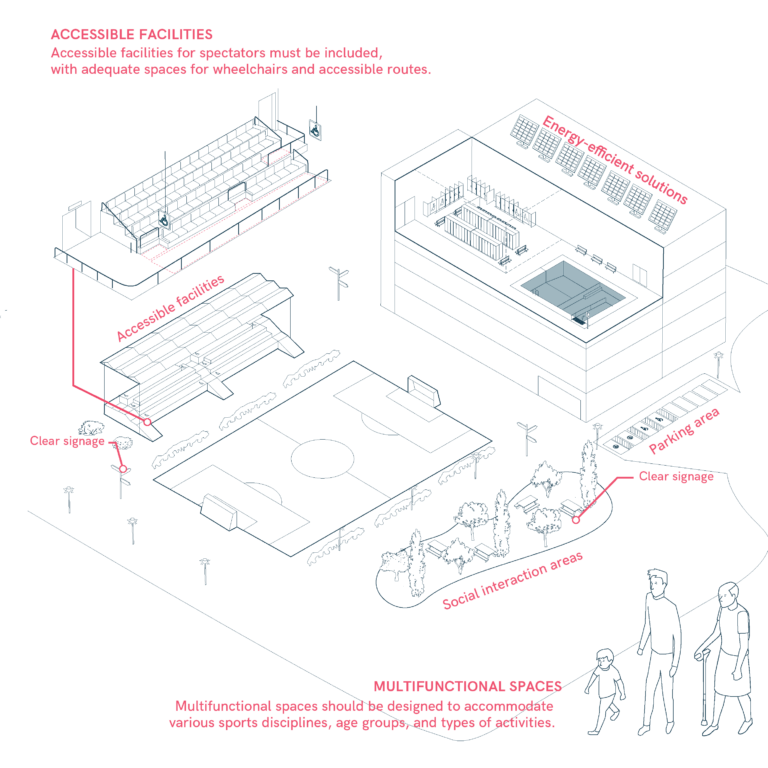
Designing Inclusive Sports Areas
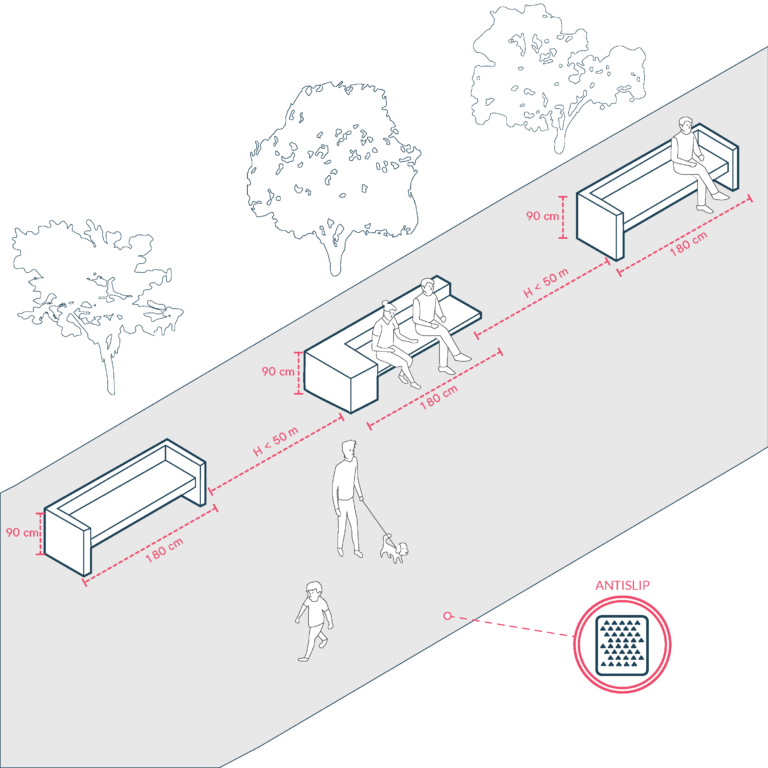
Dimensions of Public Plazas, Parks, and Gardens
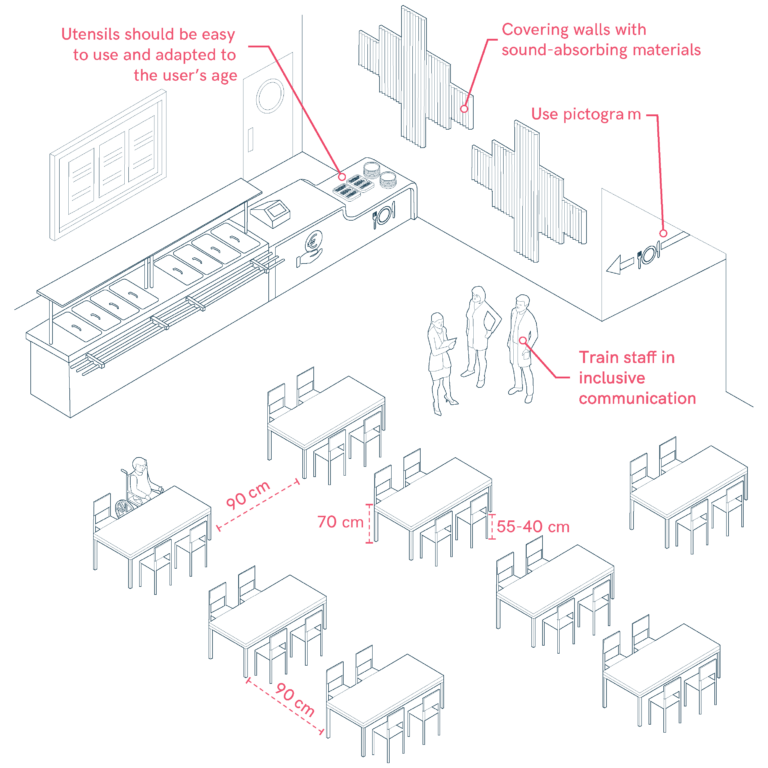
Dining Room in Schools

Diverse furniture and Market Stalls
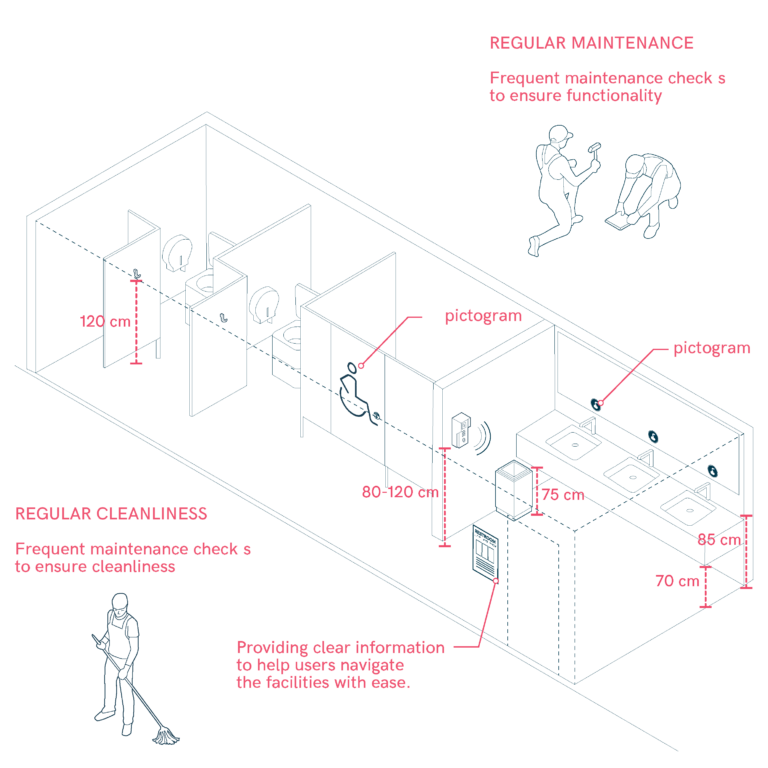
Diverse Needs and Genders: Maintenance, Staff Training and Feature-based signage
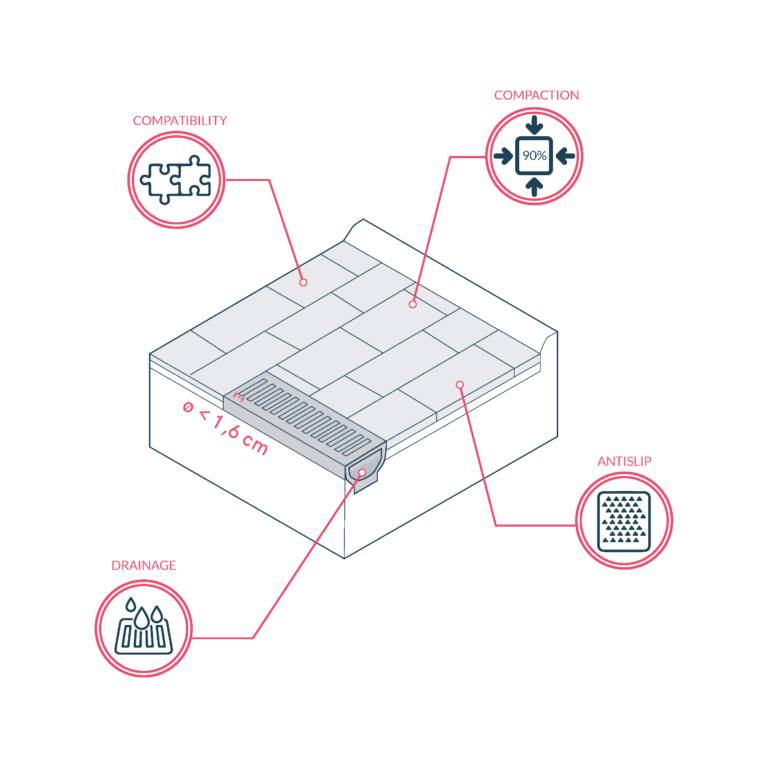
Durable Pavements
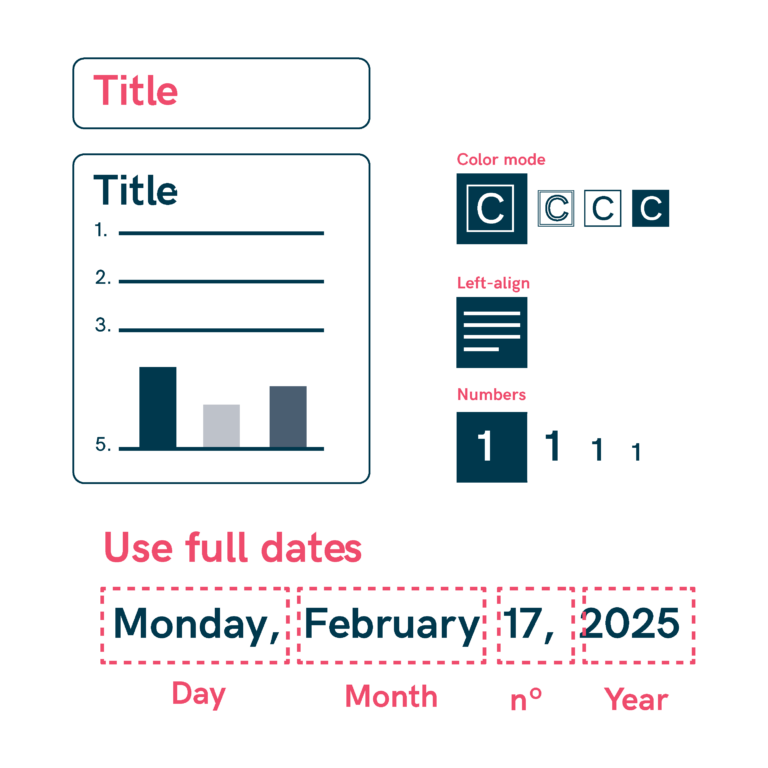
Easy-to-Read Text Format
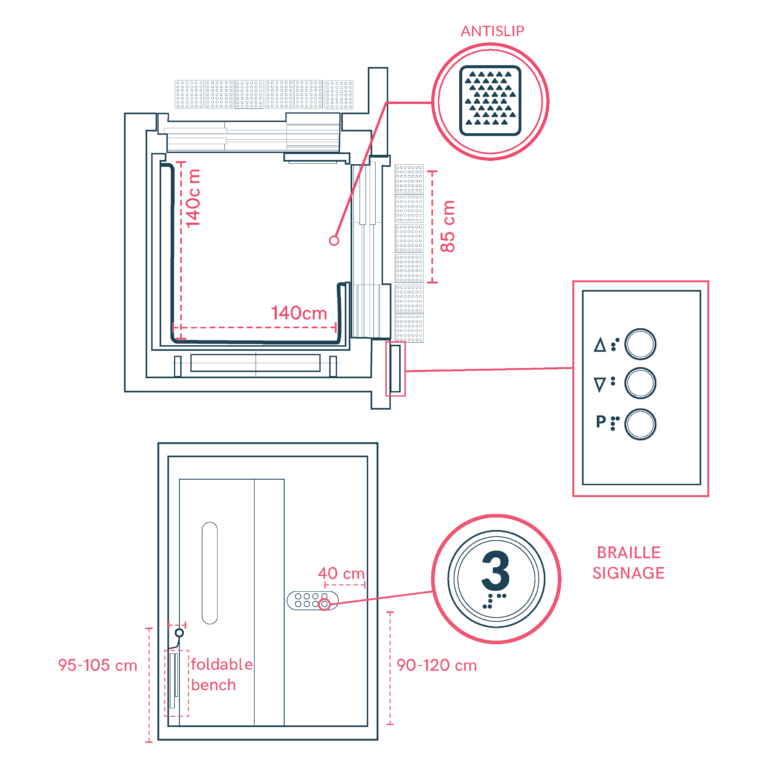
Elevator Cabin Design
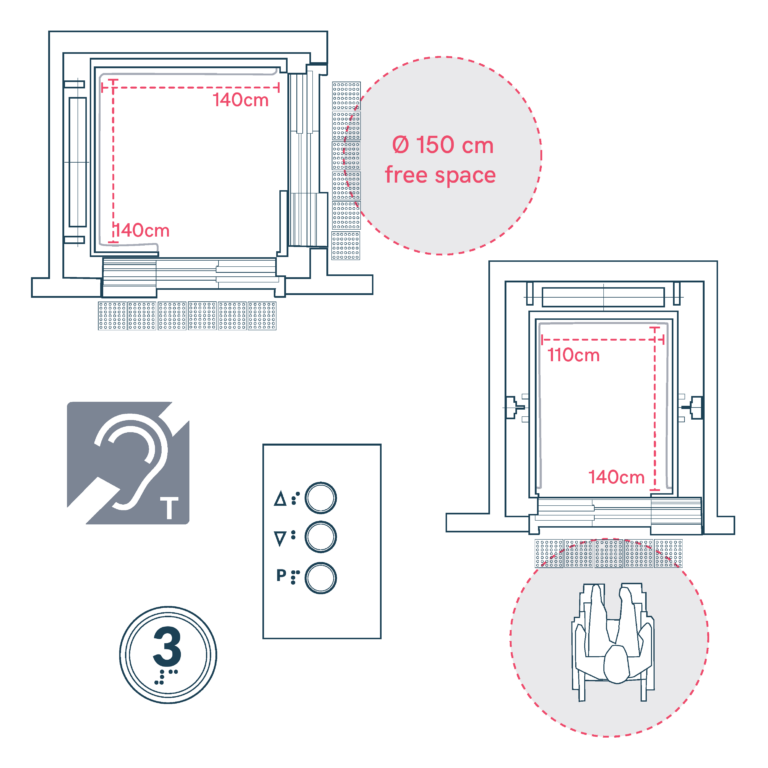
Elevator Design for Accessibility
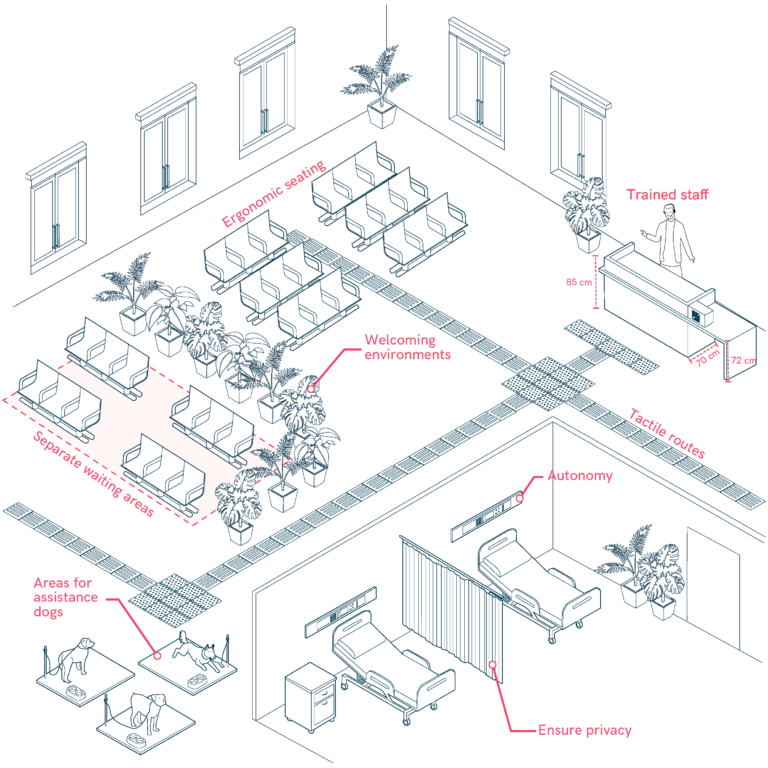
Emotional Accessibility
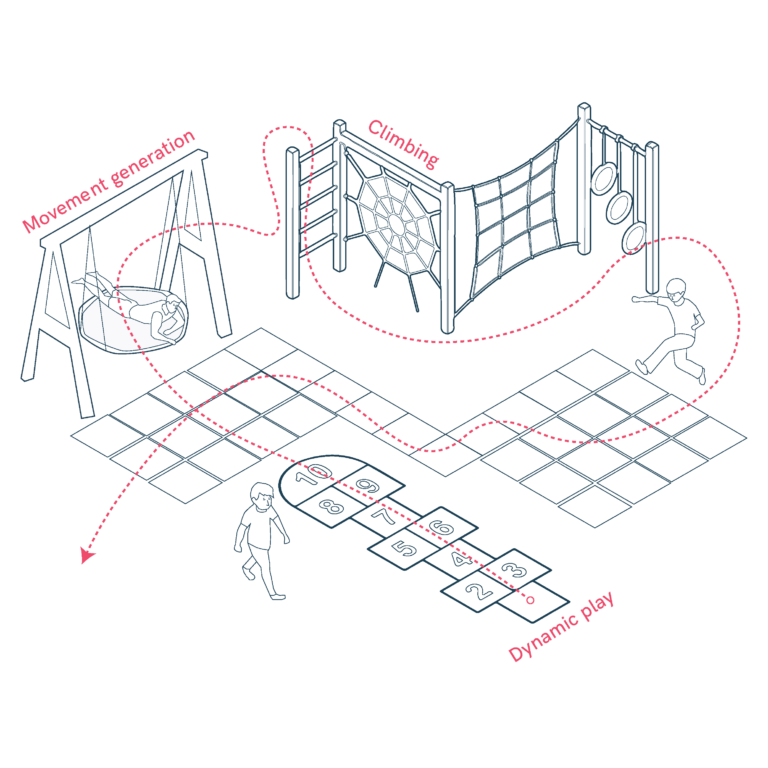
Encourage Mixed-Use Play Areas
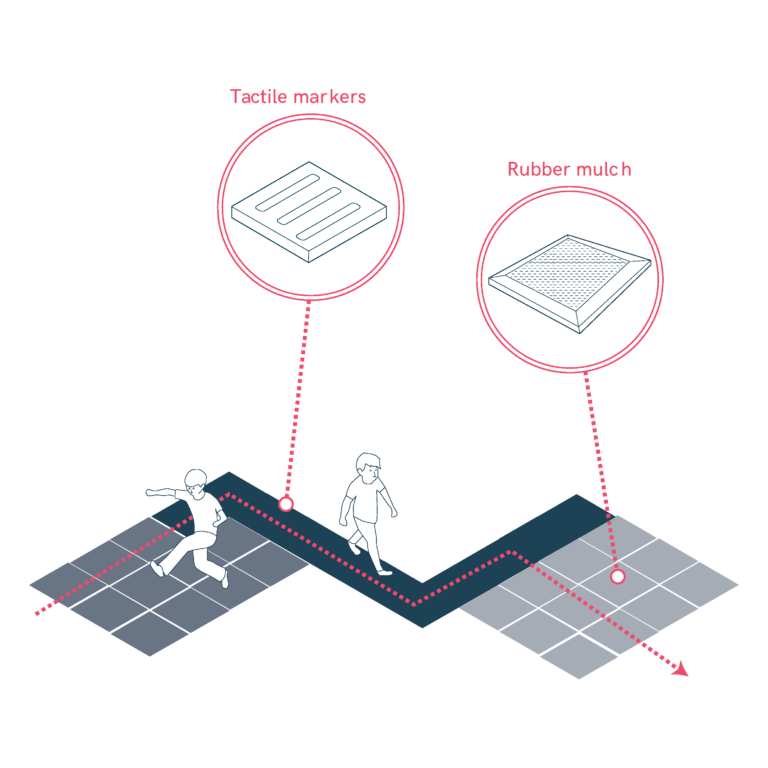
Ensure Accessible Ground Design

Ensuring Accessibility at Airports
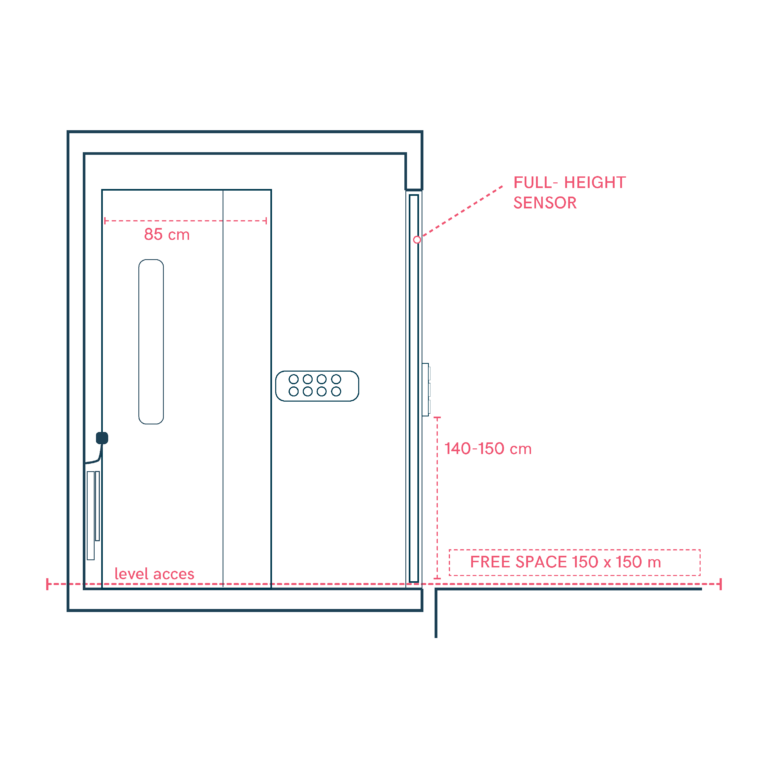
Entry, Door, and Safety Features in Elevators
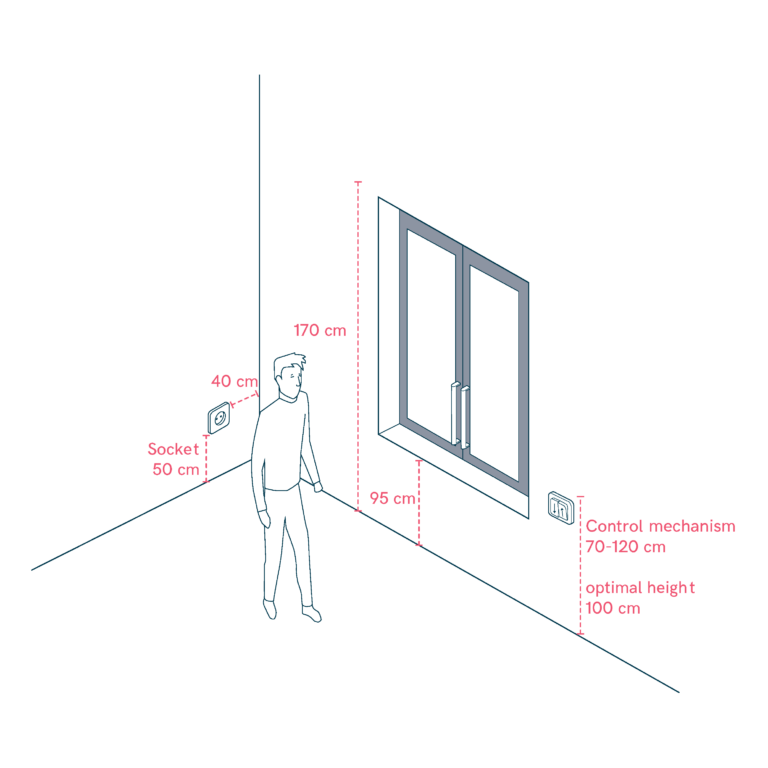
Environmental Control Mechanisms
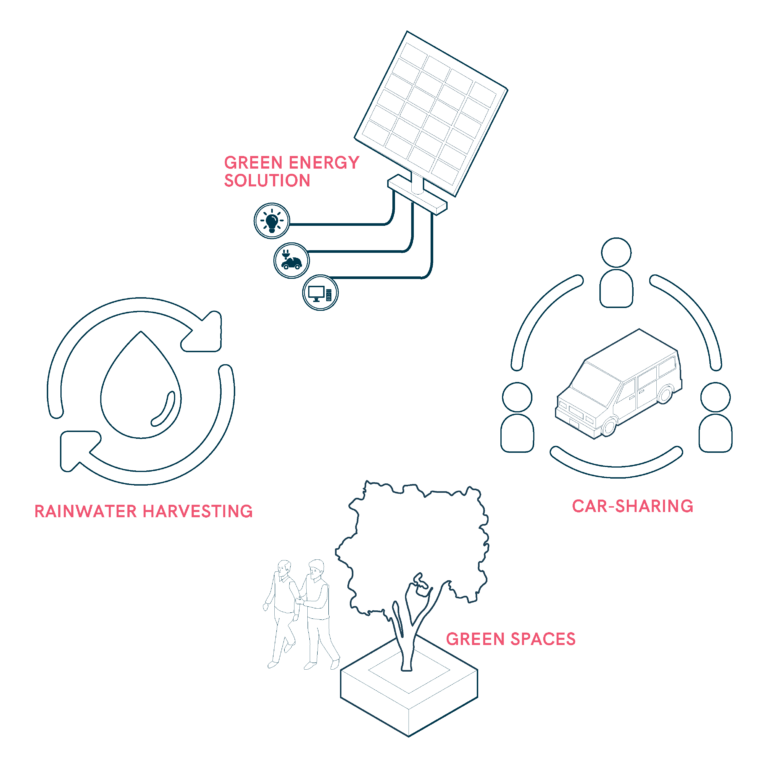
Environmental Sustainability at Mobility Hubs
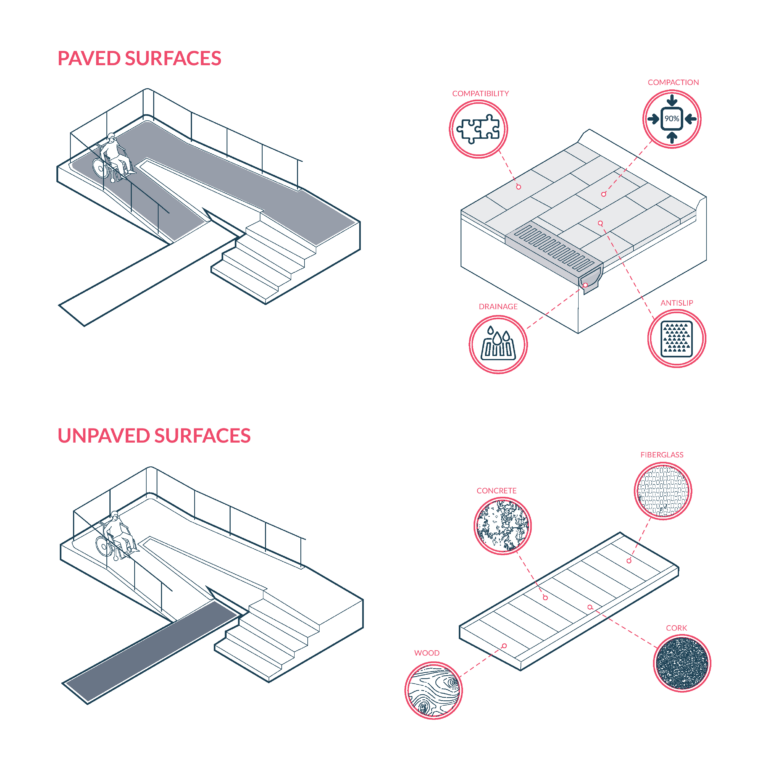
Equip Accessible Points with Essential Amenities
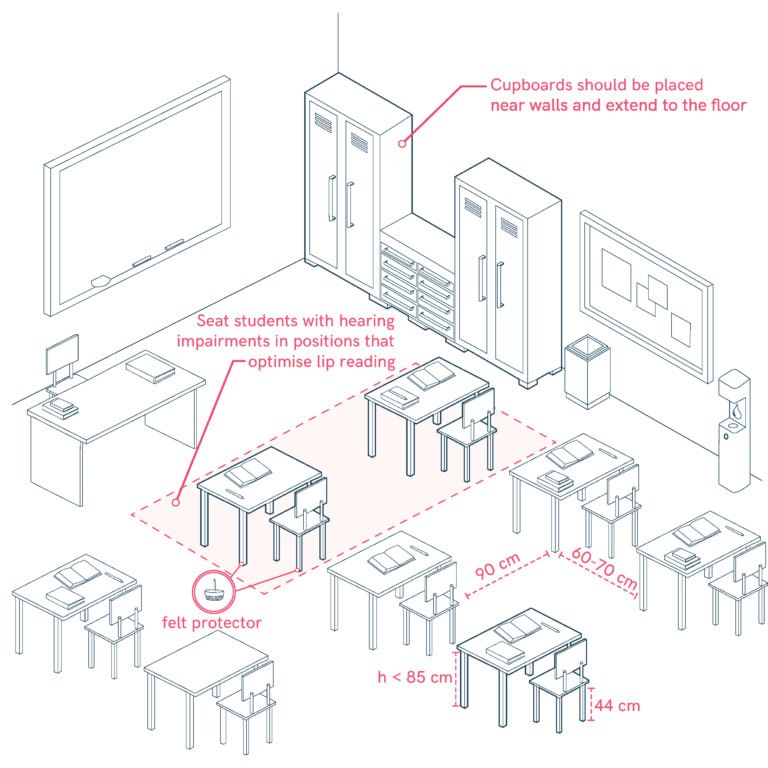
Ergonomic Furniture for classrooms
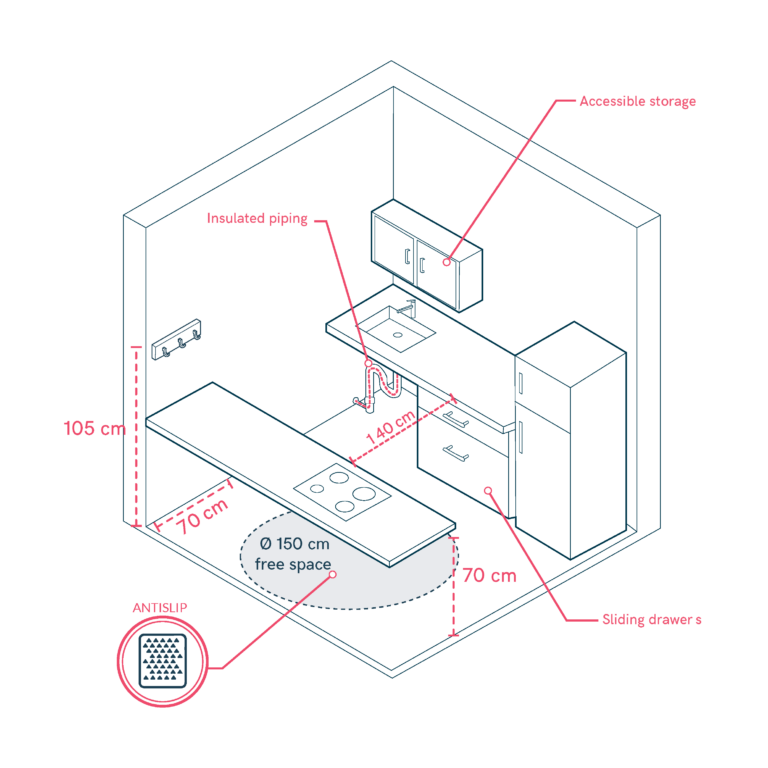
Ergonomic Kitchen
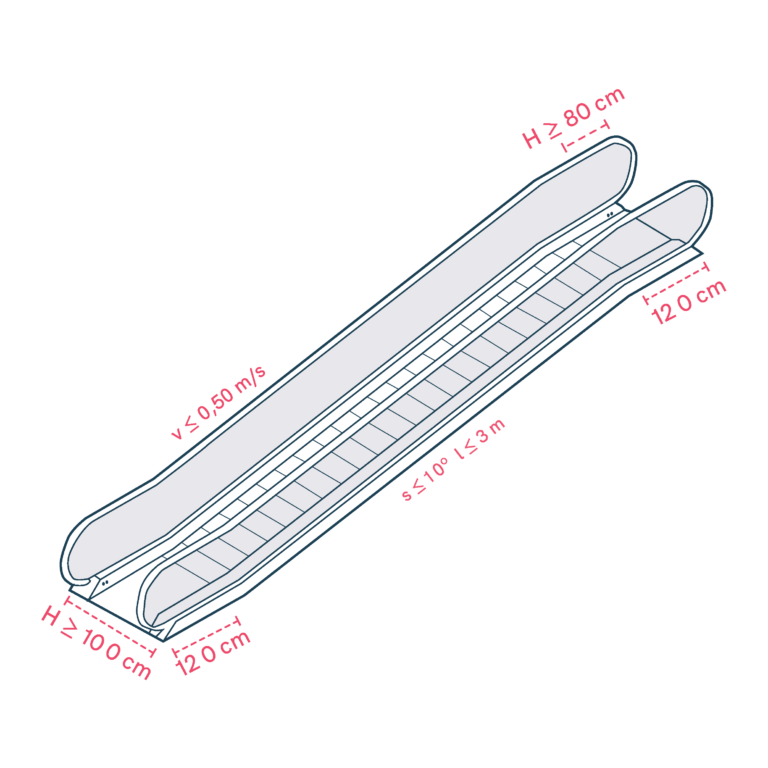
Escalators and Moving Walkways
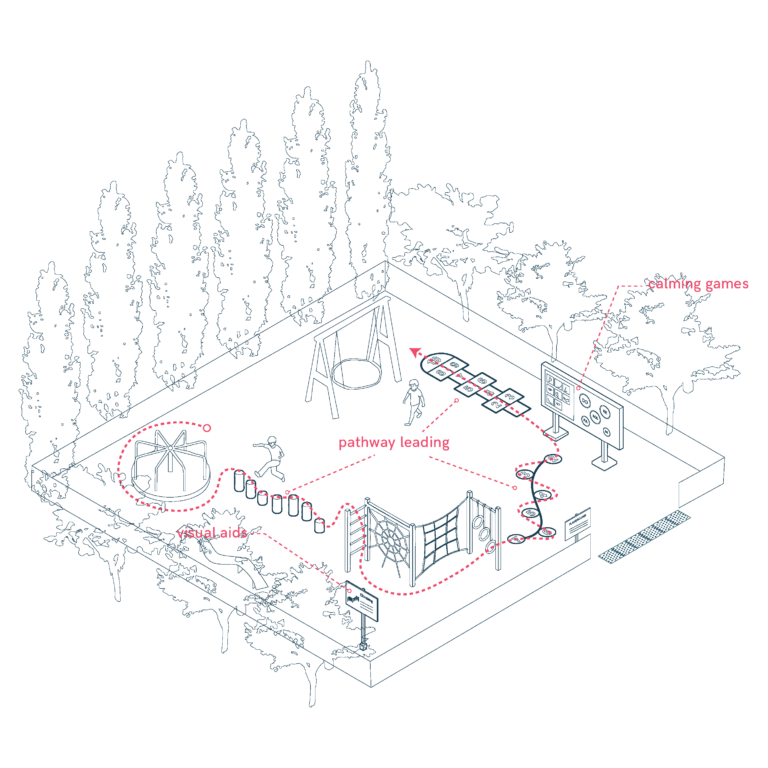
Facilitate Transitions and Waiting Times
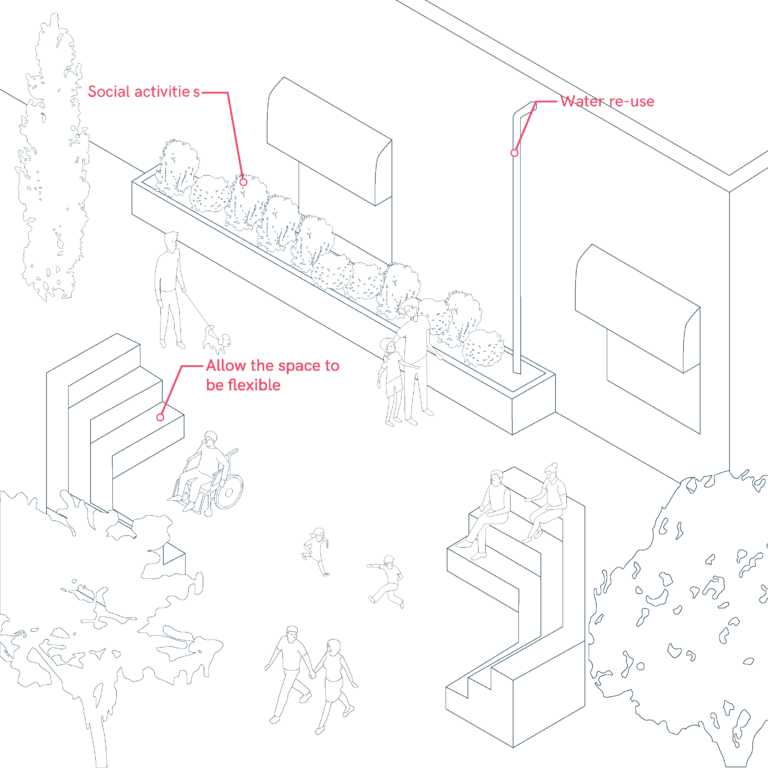
Flexible Use and Community Engagement

Foster Sensory Play Opportunities
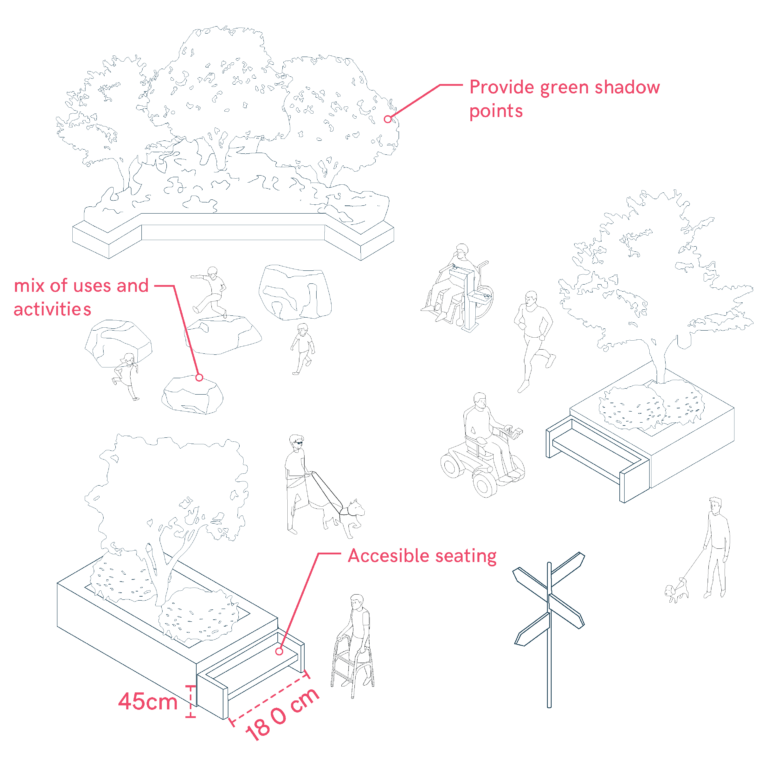
Foster Vitality and Social Interaction
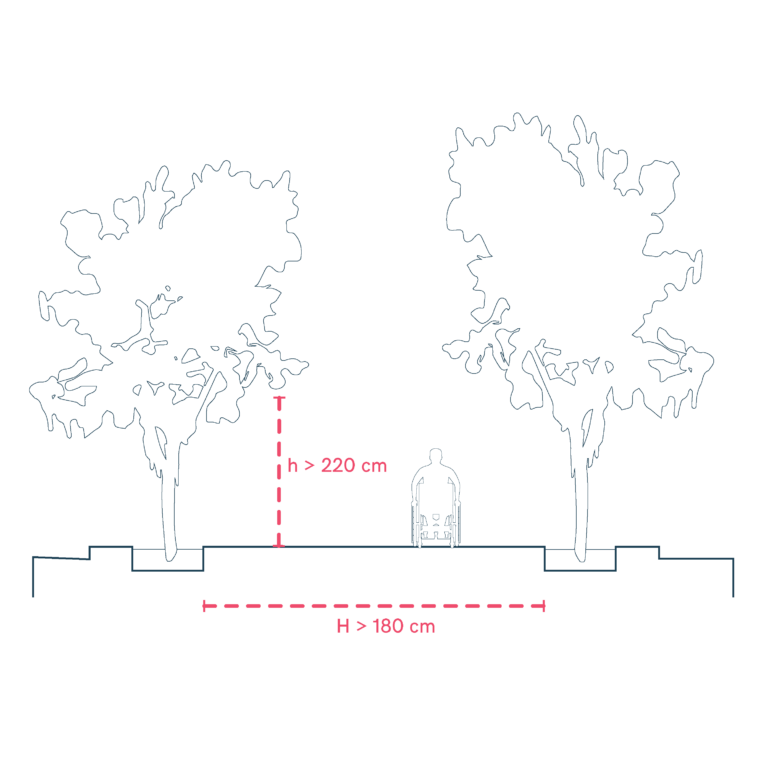
General Conditions for Urban Furniture
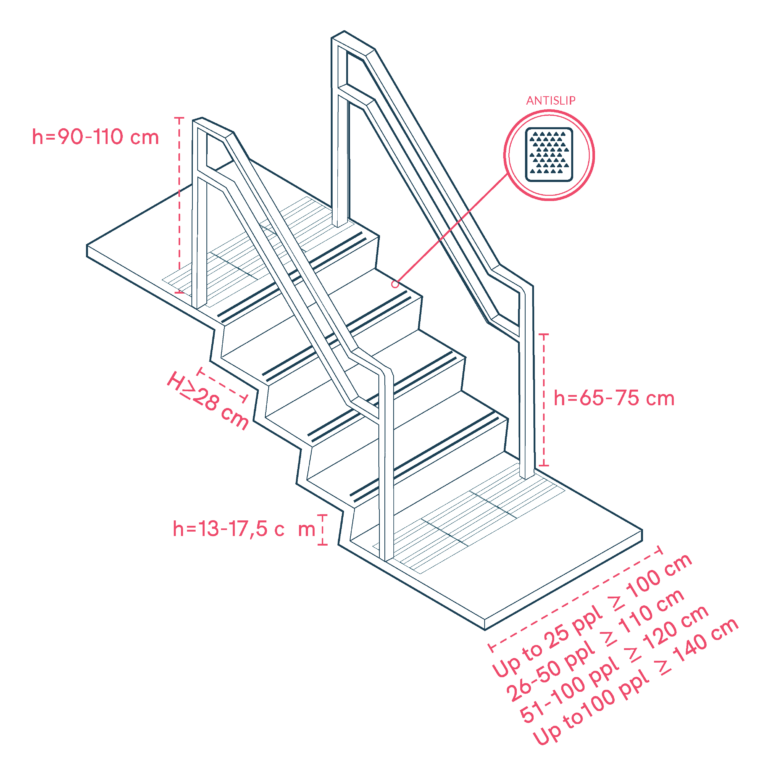
General-Use Stairs
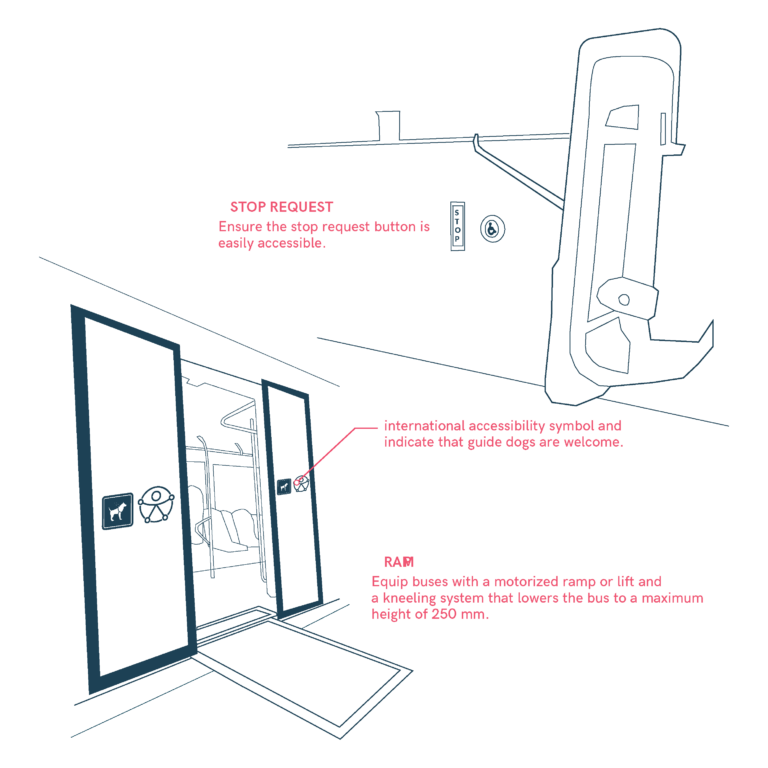
Getting On and Off the Bus

Handles, Pulls, and Latches for Inclusive Design
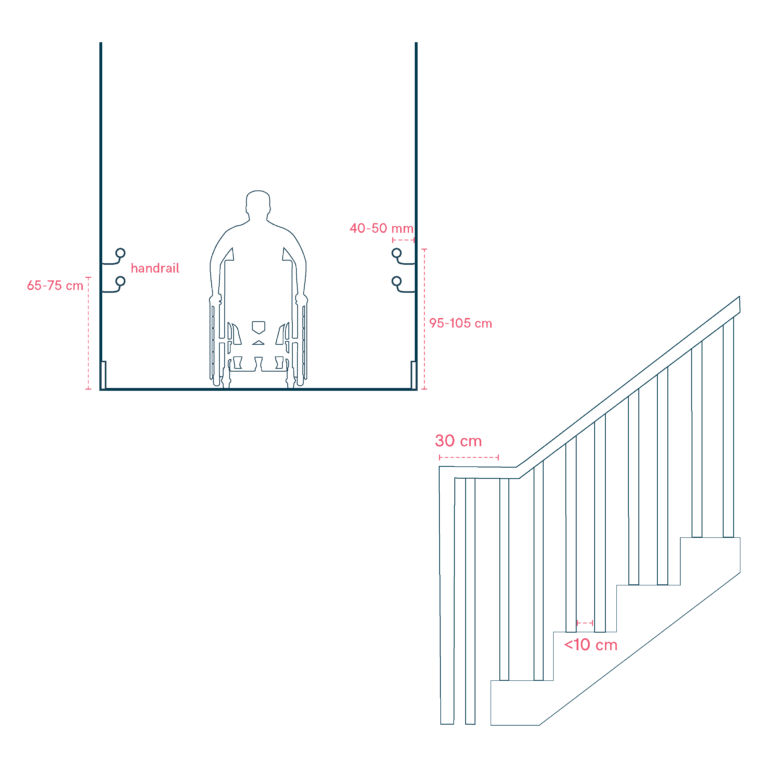
Handrails
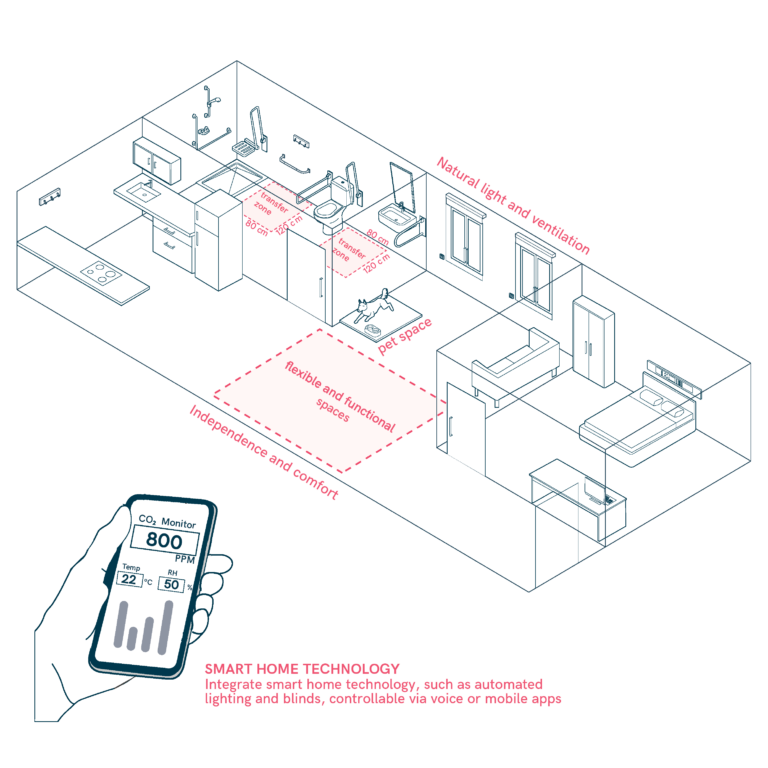
Home

Hospital Bathrooms

Humanised Patient Rooms
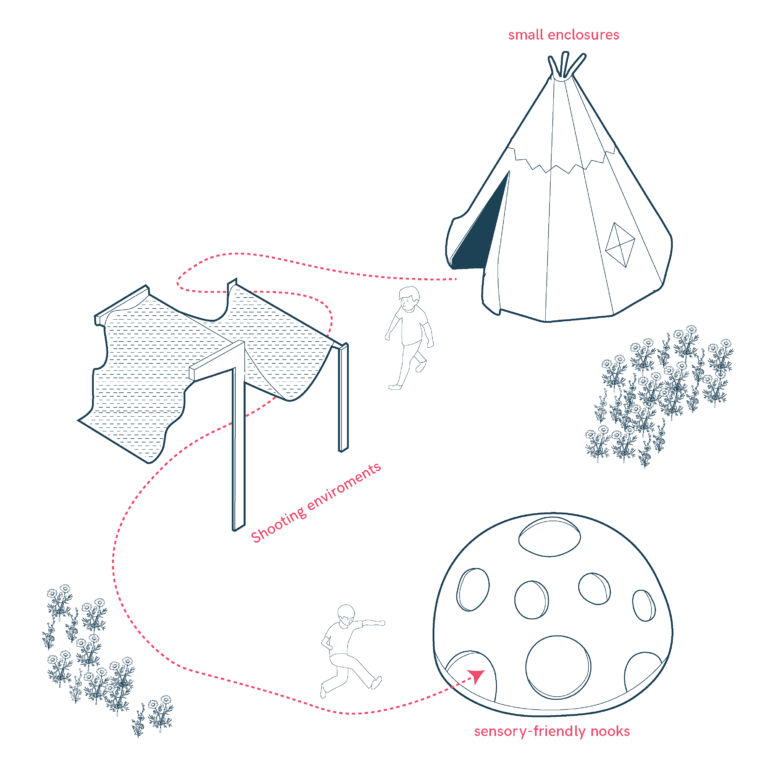
Include Calm/Haven Spaces
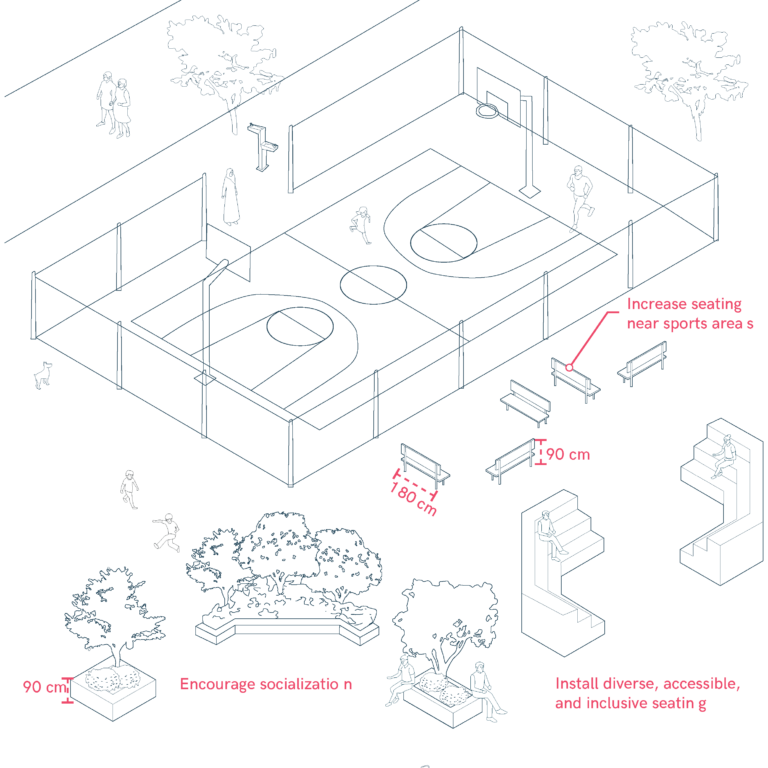
Inclusive and Comfortable Seating

Inclusive Beach Access for All
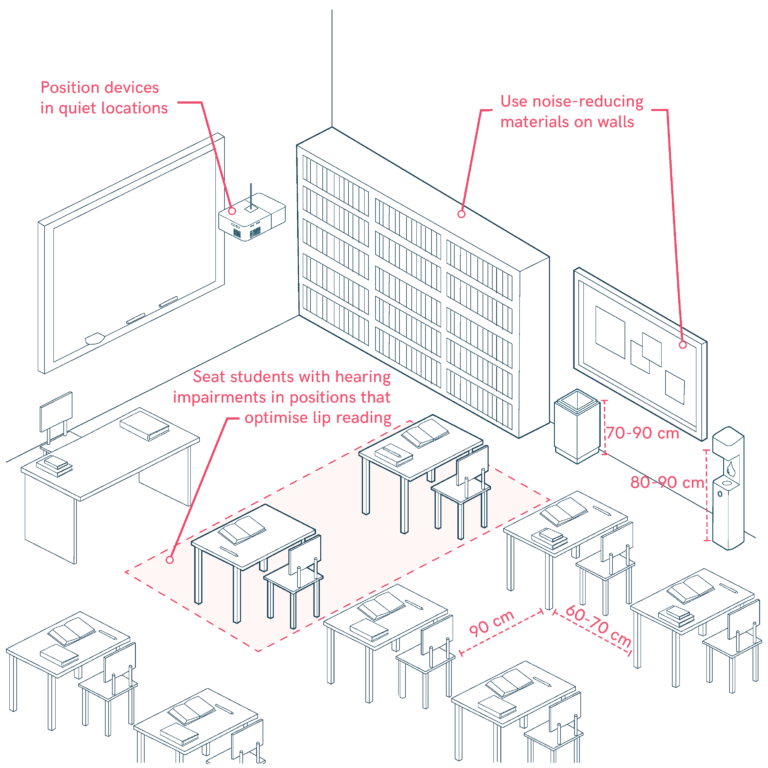
Inclusive Classroom Design
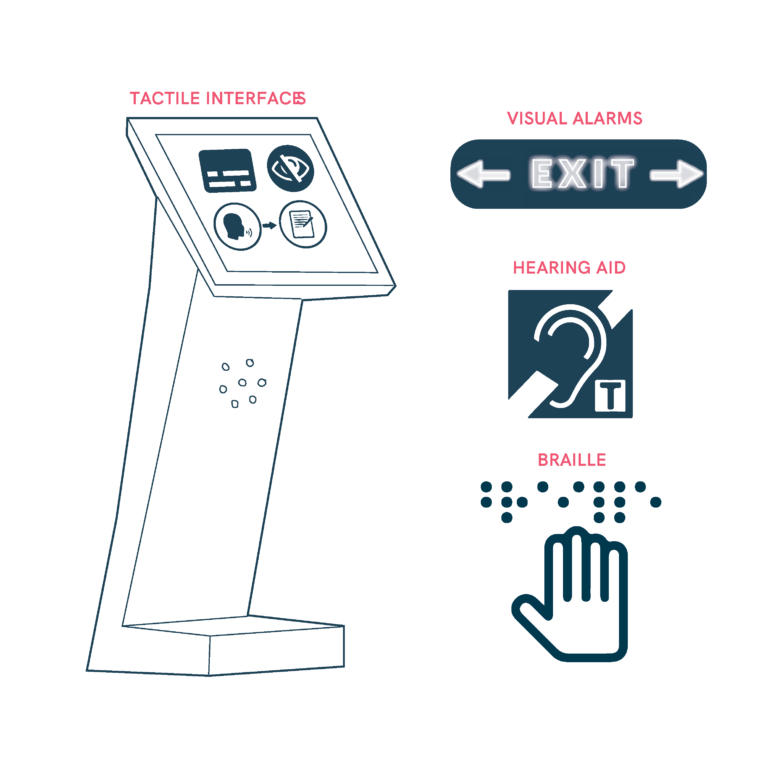
Inclusive Ticketing and Fare Systems at Mobility Hubs
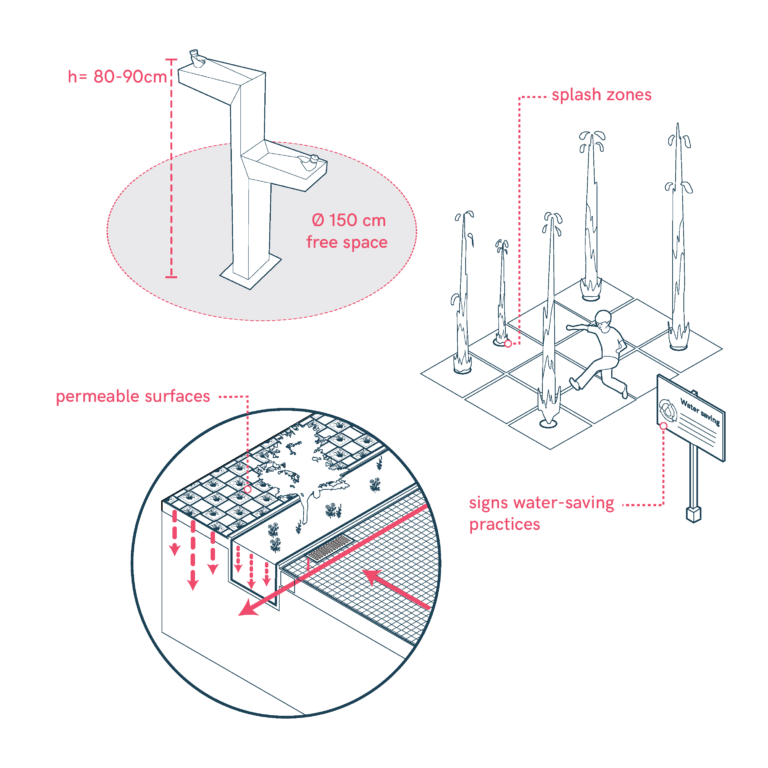
Incorporate Fountains and Water Features
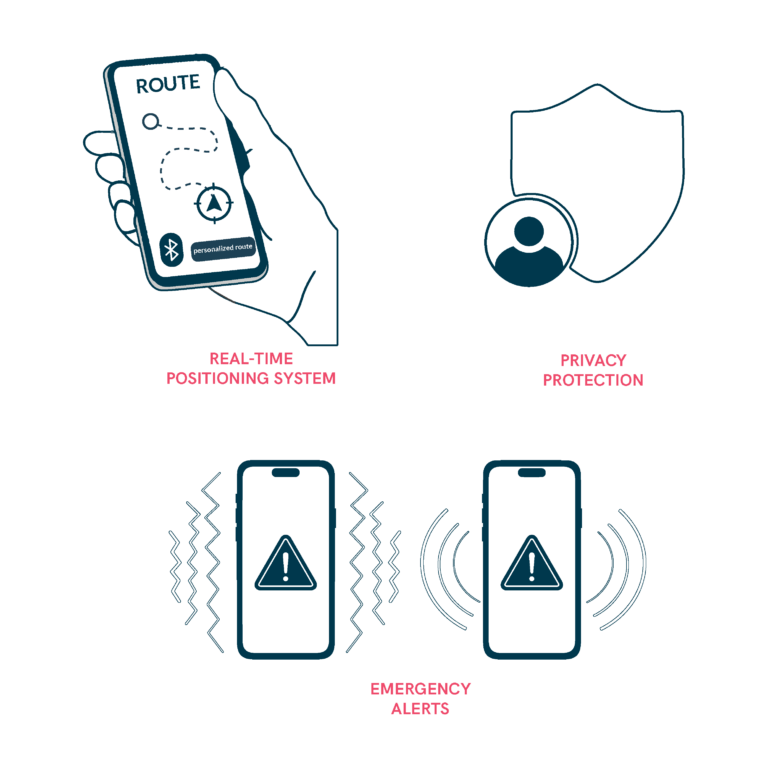
Indoor Assistive Technologies
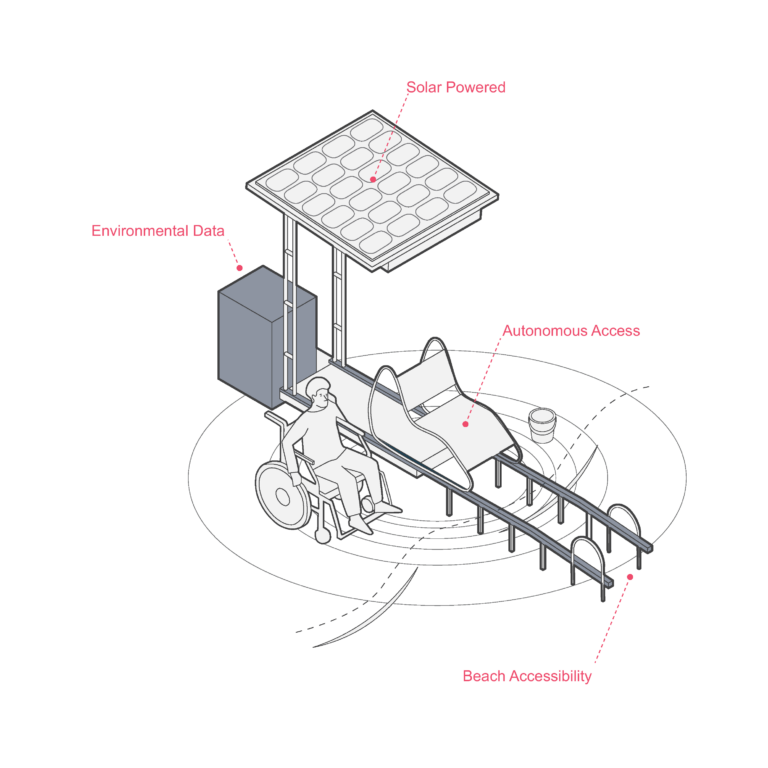
Innovative Beach Access Solutions (e.g., iSEATRAC)
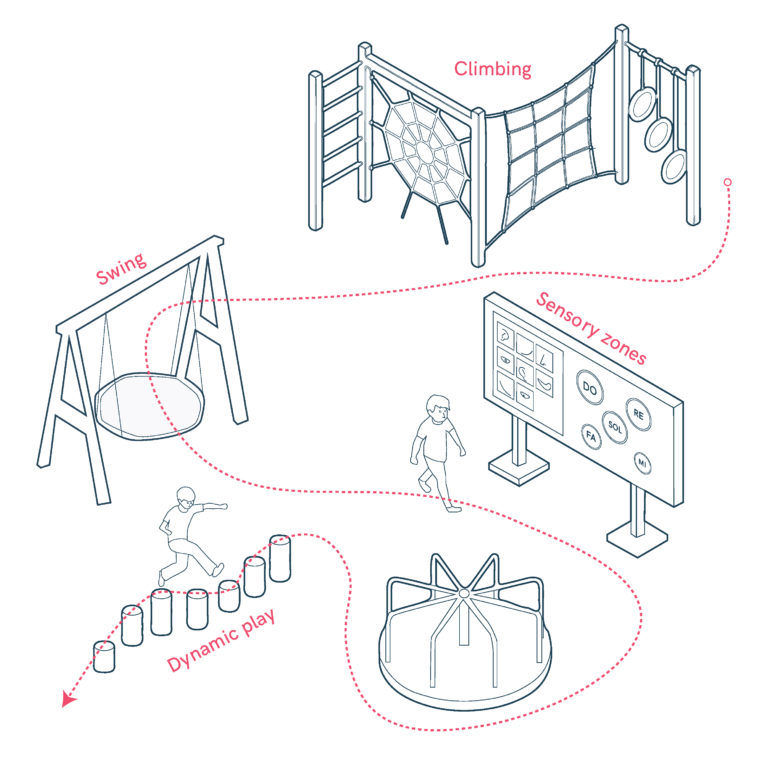
Install Diverse and Inclusive Play Equipment
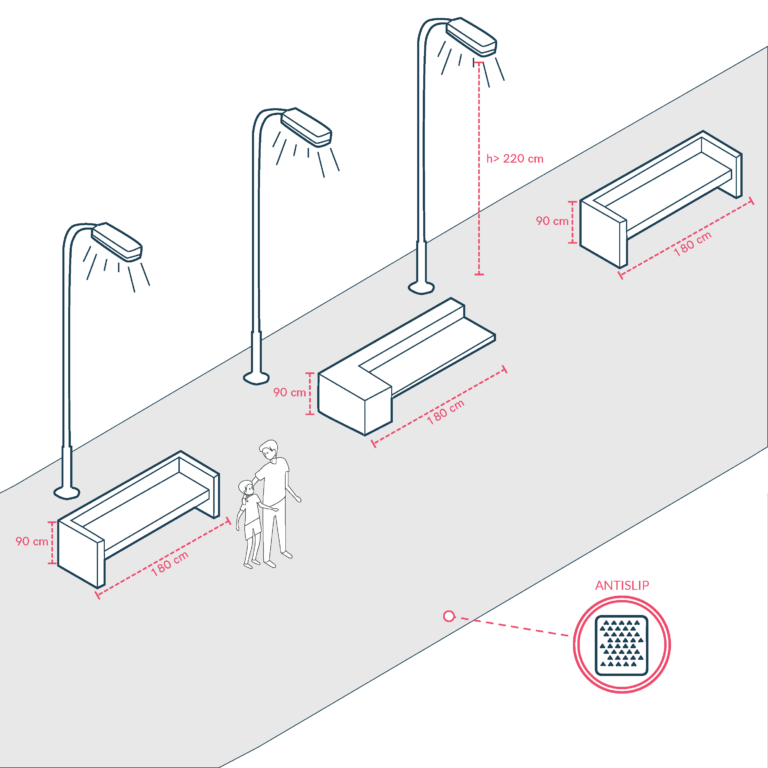
Integration of pathways and seating in Plazas, Rest Areas, and Squares
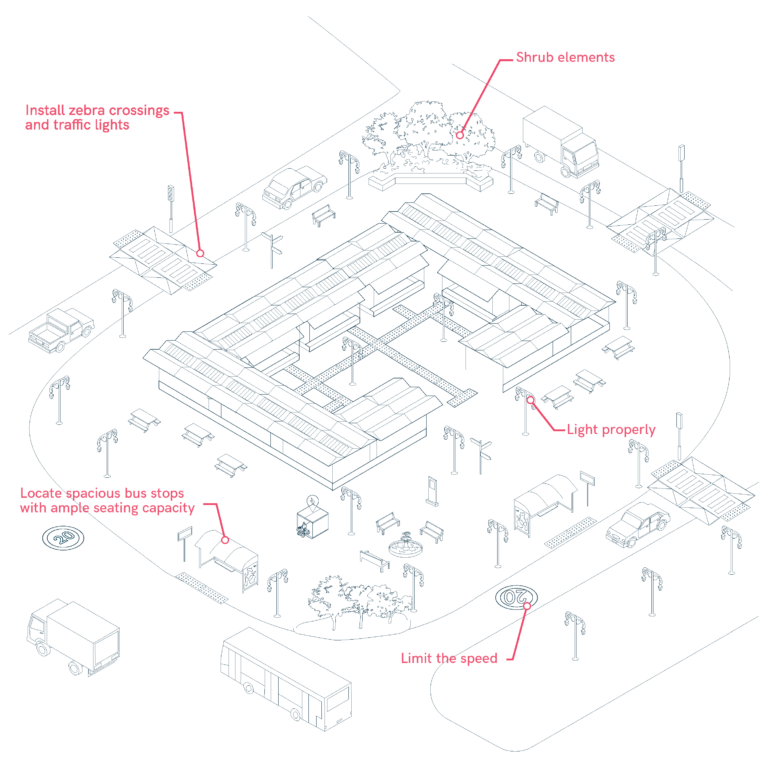
Intensify neighborhood circulation near markets

Interdisciplinary and Collaborative Urban Design

Legislative Buildings
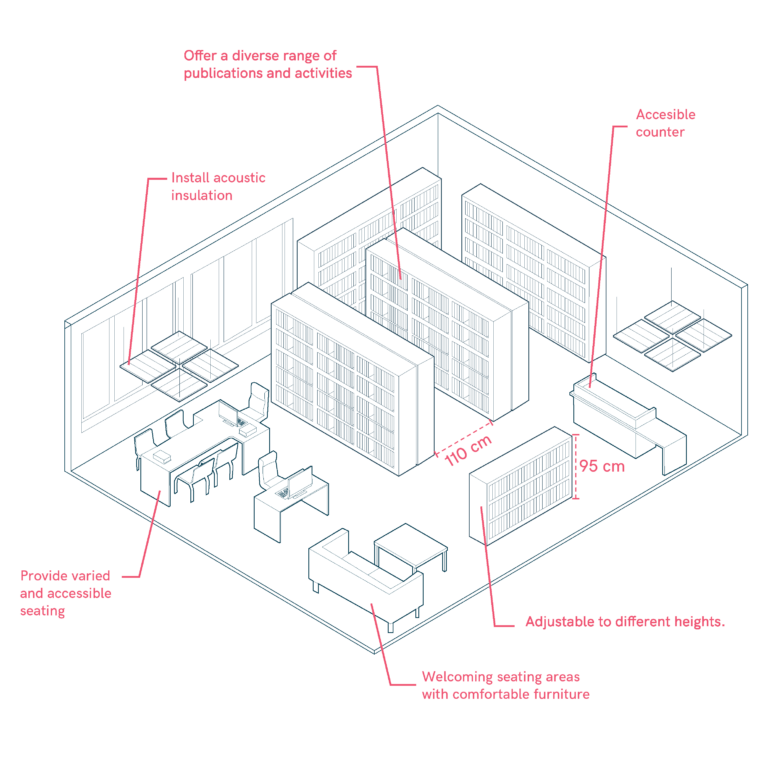
Libraries

Lighting and Visibility Enhancements
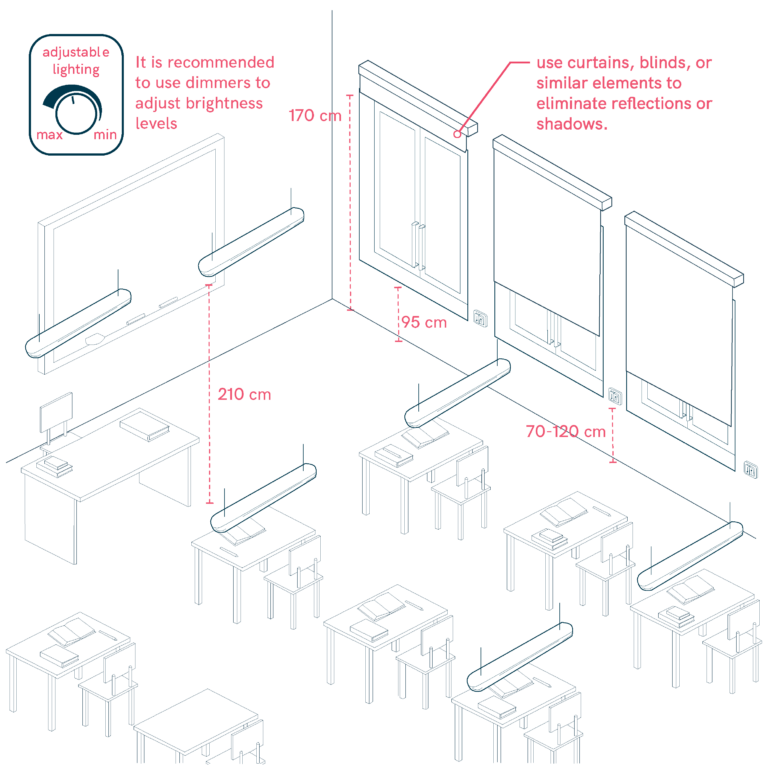
Lighting Considerations in Educative Centers

Medical Consultations
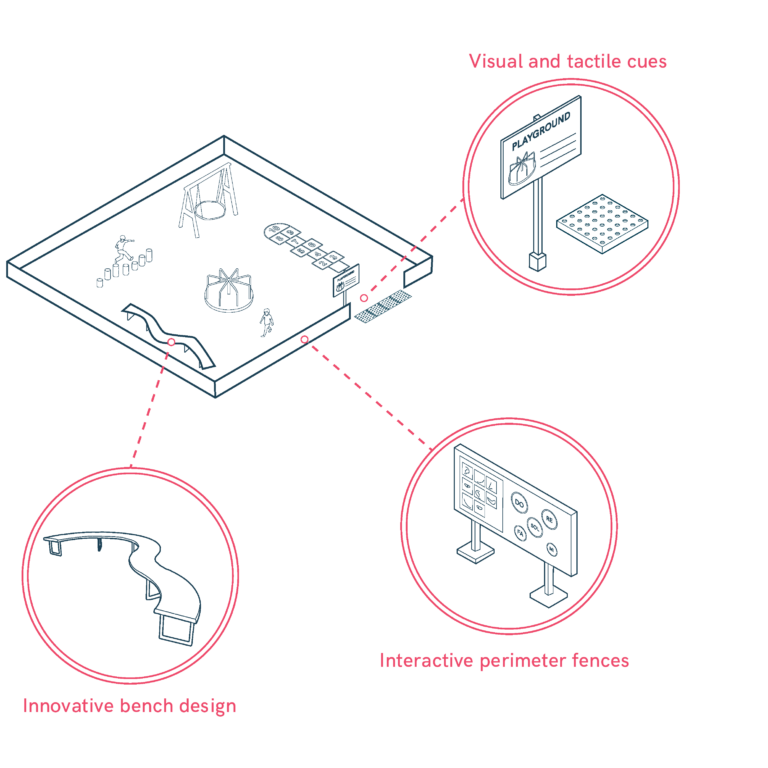
Mitigate Spontaneous Escapes
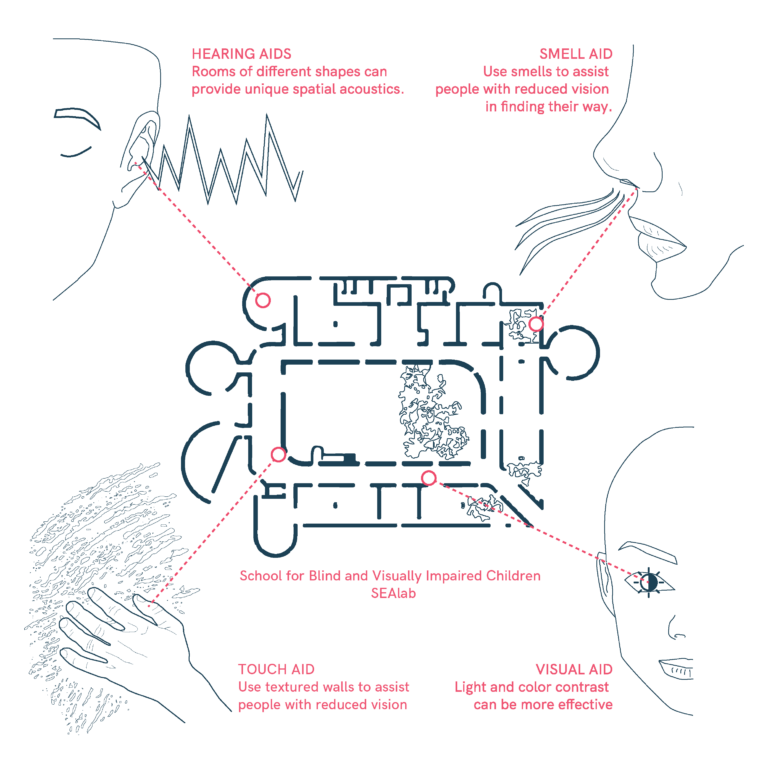
Multisensory Navigation and Spatial Orientation

Multisensory Wayfinding
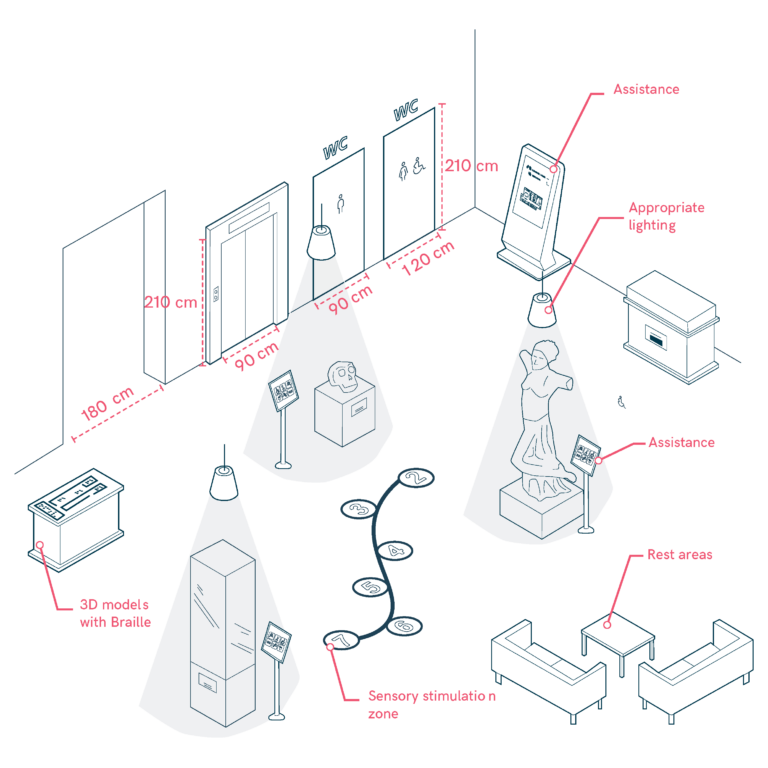
Museums and Heritage Sites
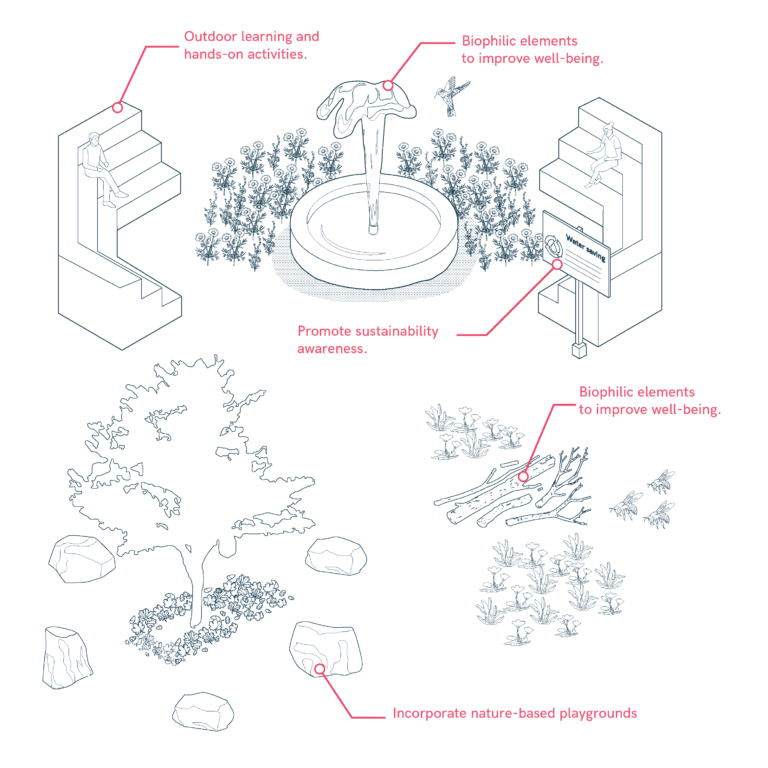
Natural Elements and Outdoor Learning
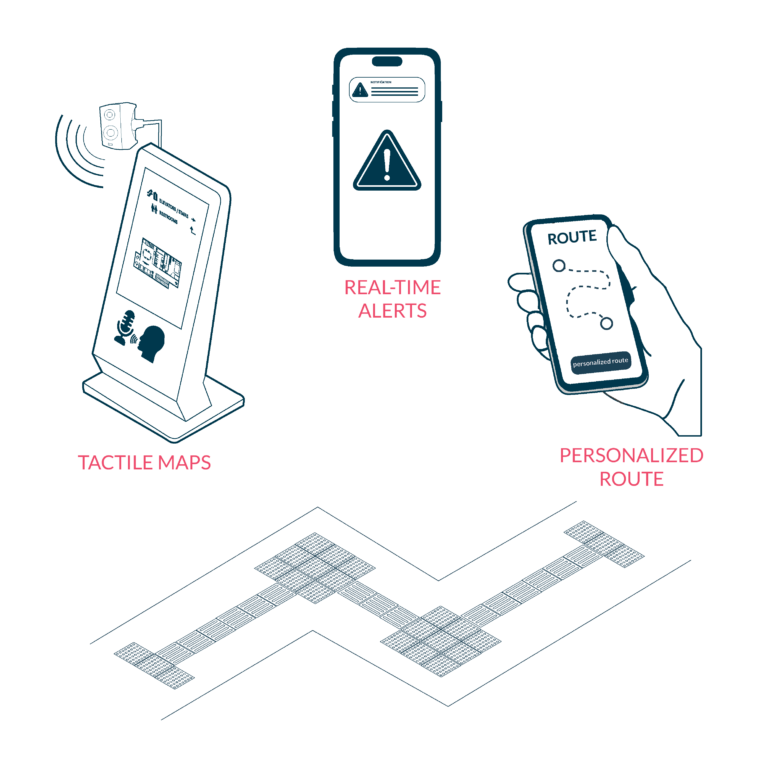
Navigation Assistance
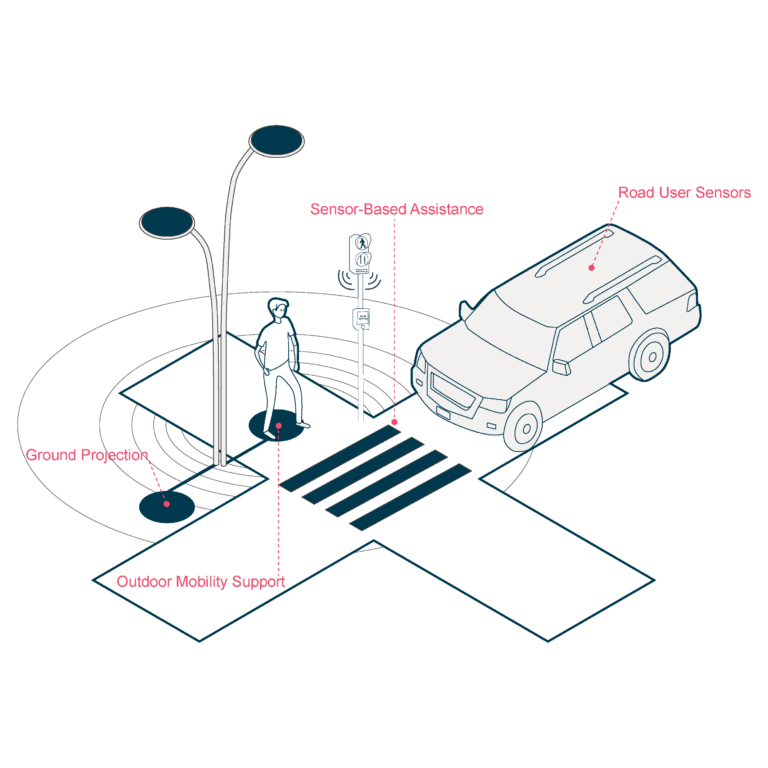
Outdoor Assistive Technologies
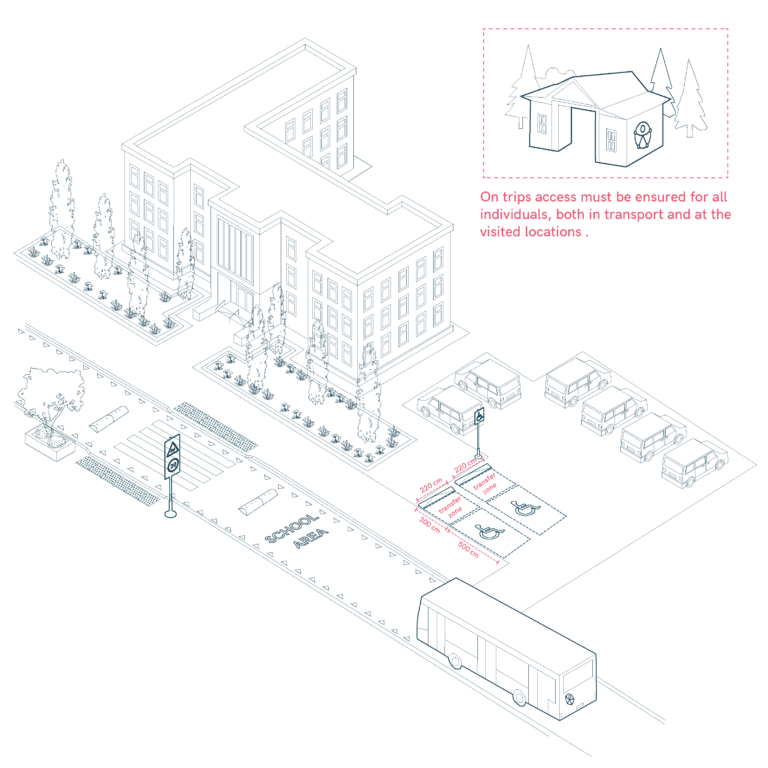
Parking and School Bus Accessibility

Parking Lot Design for Promoting Public Transport Use
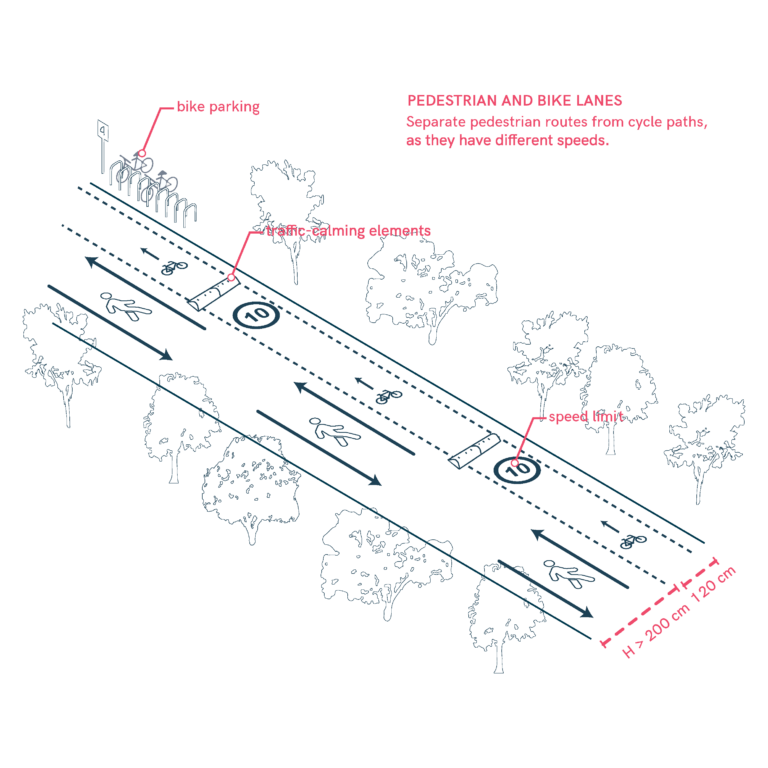
Pedestrian and Bicycle Paths
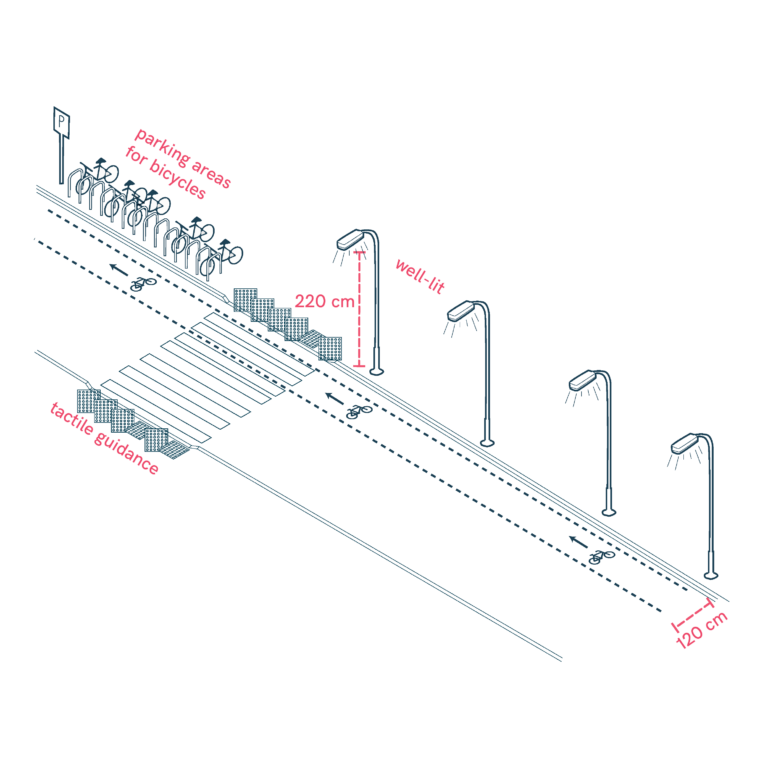
Pedestrian and Mobility-Friendly Spaces
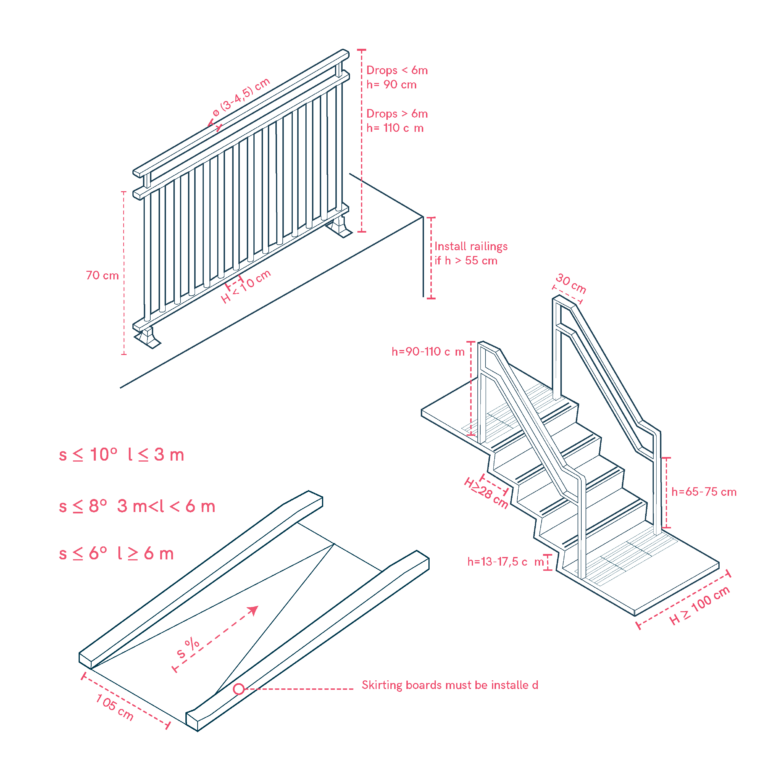
Pedestrian Protection Elements in Public Spaces

Pedestrian Routes
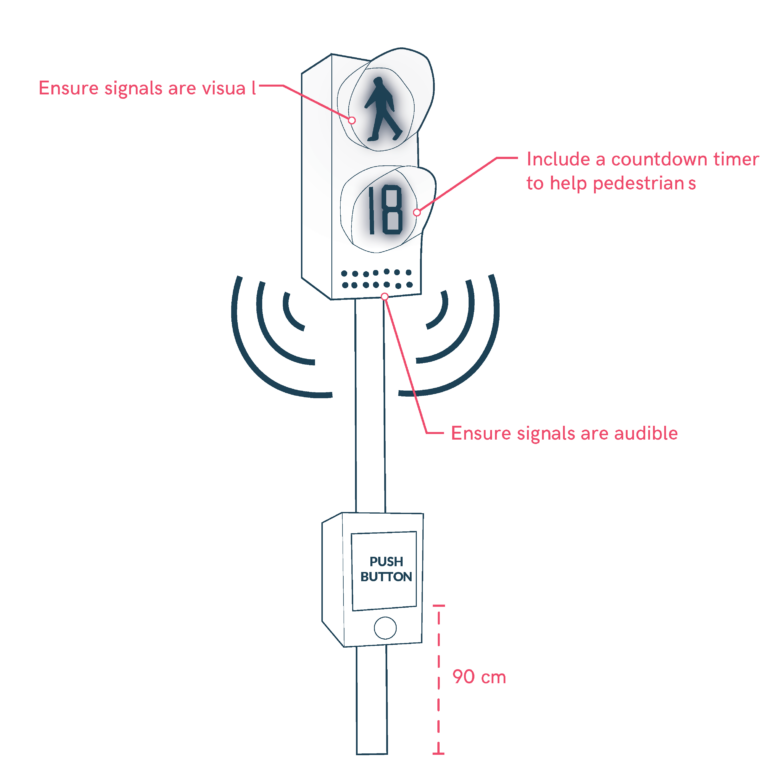
Pedestrian Traffic Signals

Picnic and Rest Areas
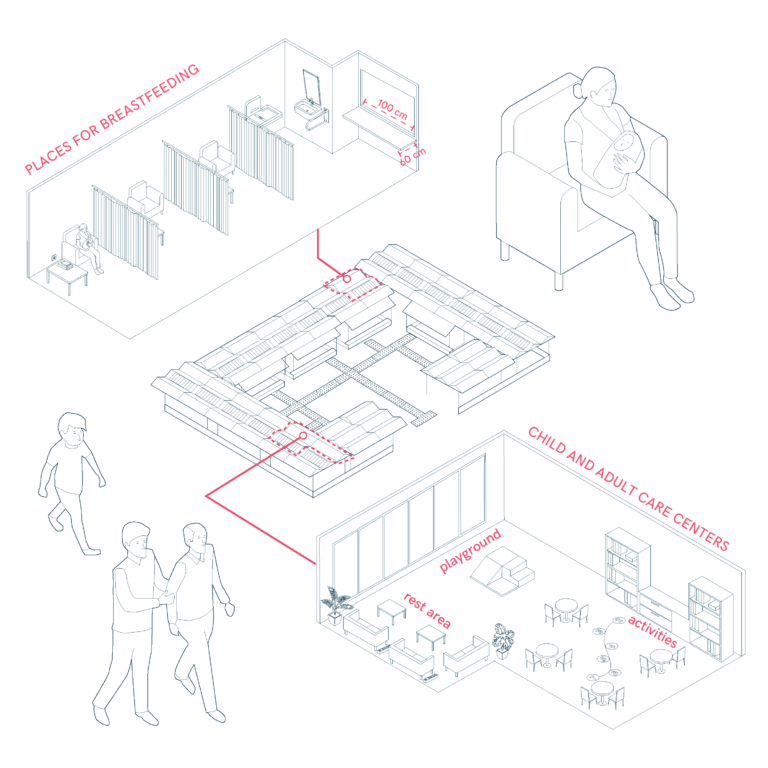
Places for caretaker users
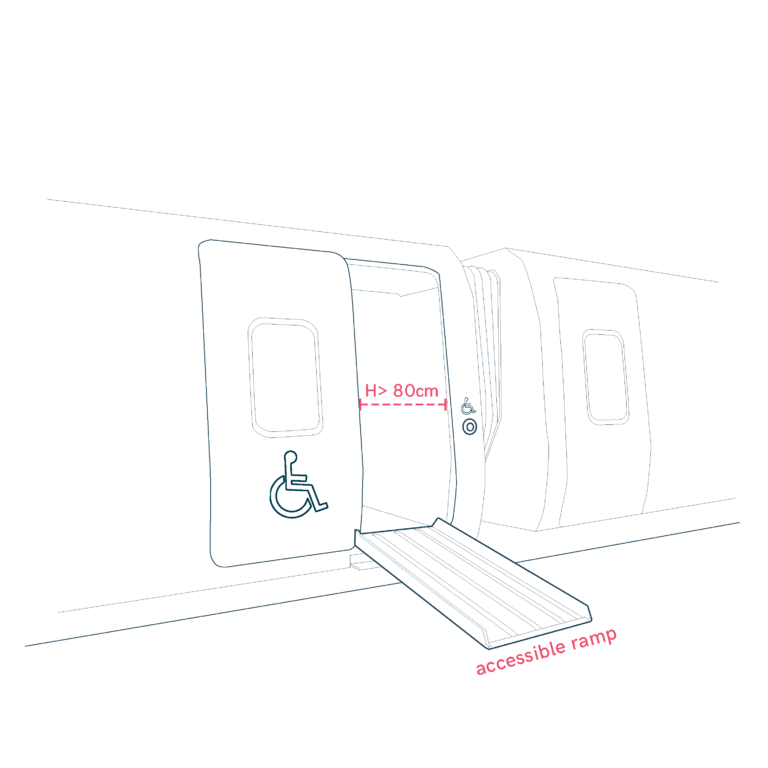
Platform and Train Access Features
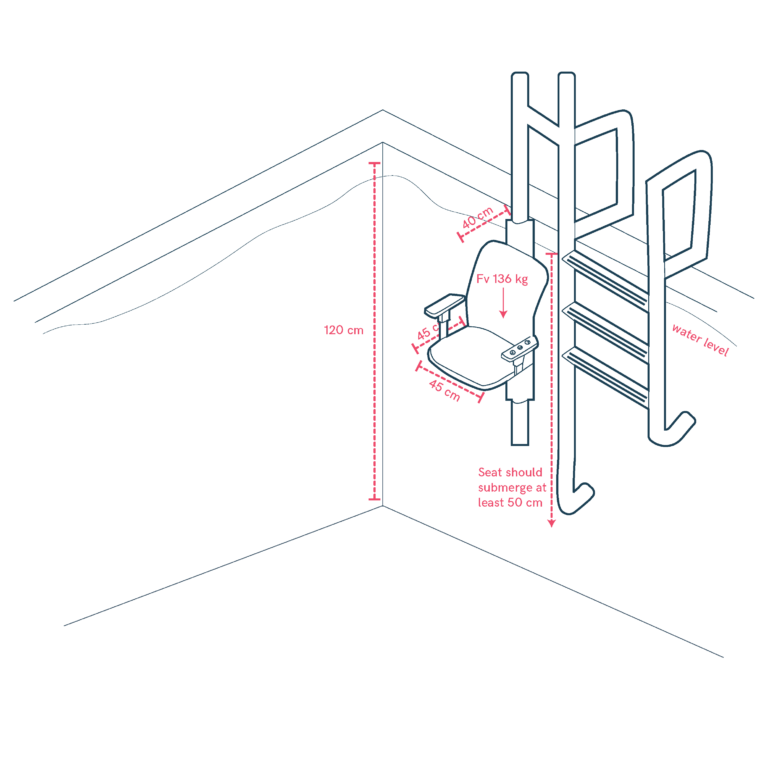
Pool Lifts

Privacy and Safety in Shared Spaces
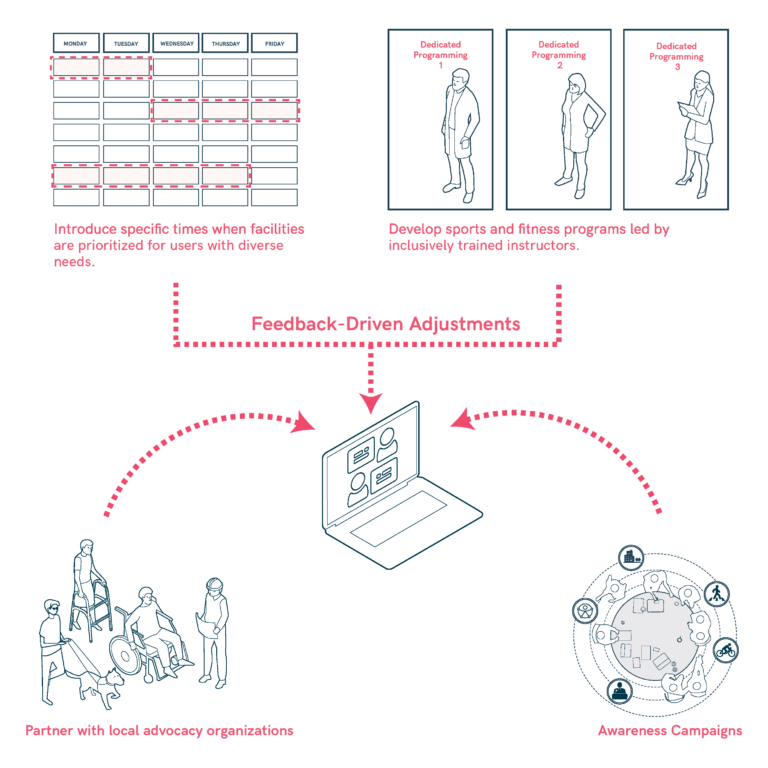
Programming and Pilot Initiatives
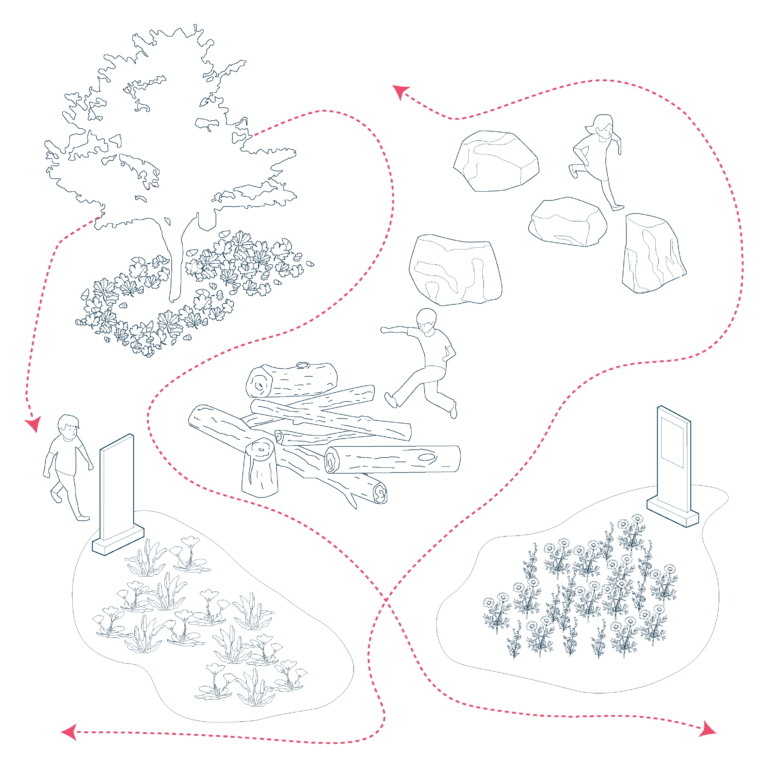
Promote Biophilic and Sustainable Design
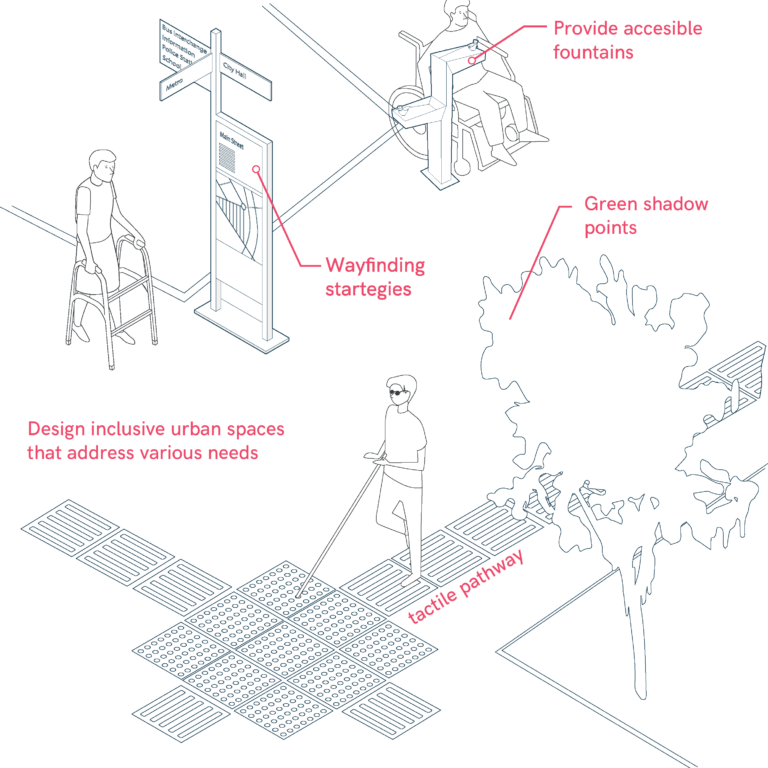
Promote Diversity, Autonomy, and Proximity
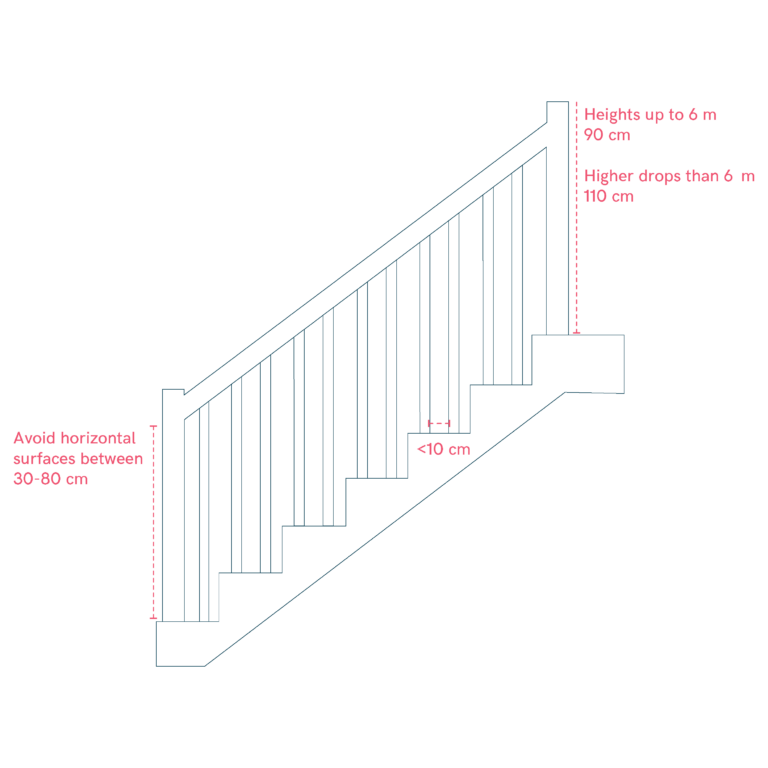
Protection Barriers
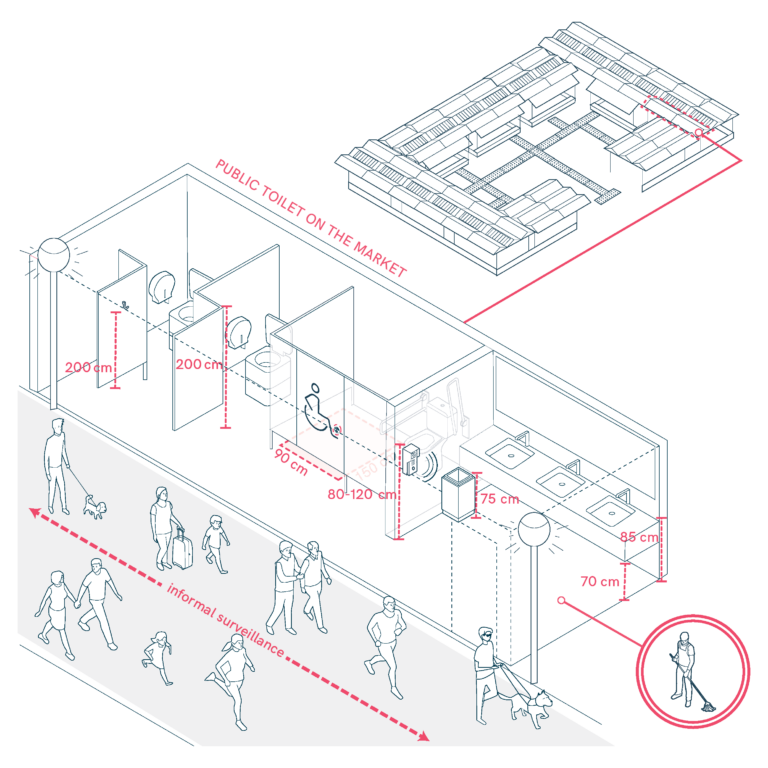
Public toilets on the market
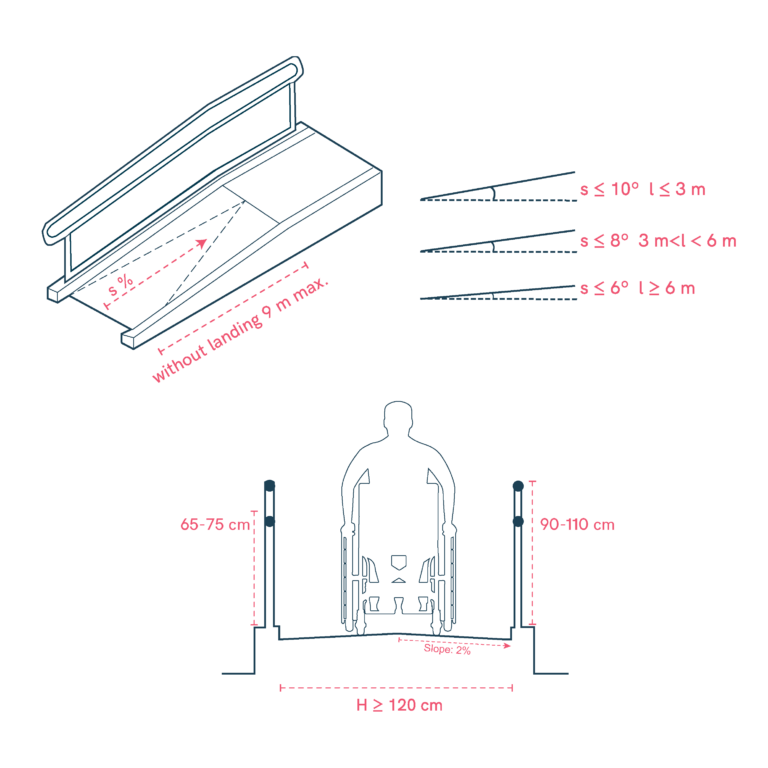
Ramp Design and Specifications

Ramp Requirements

Readable Typography
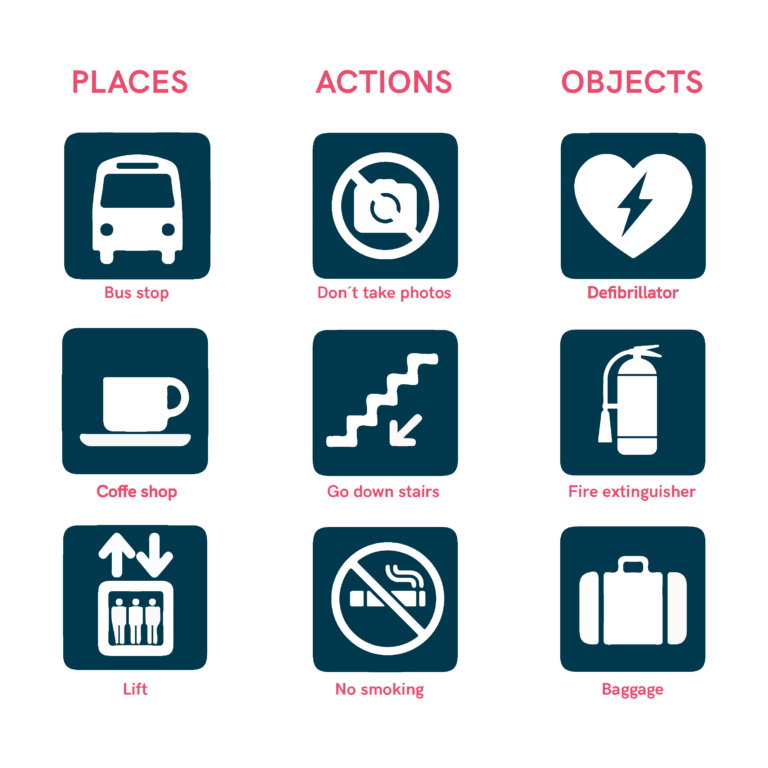
Recognizable Symbols
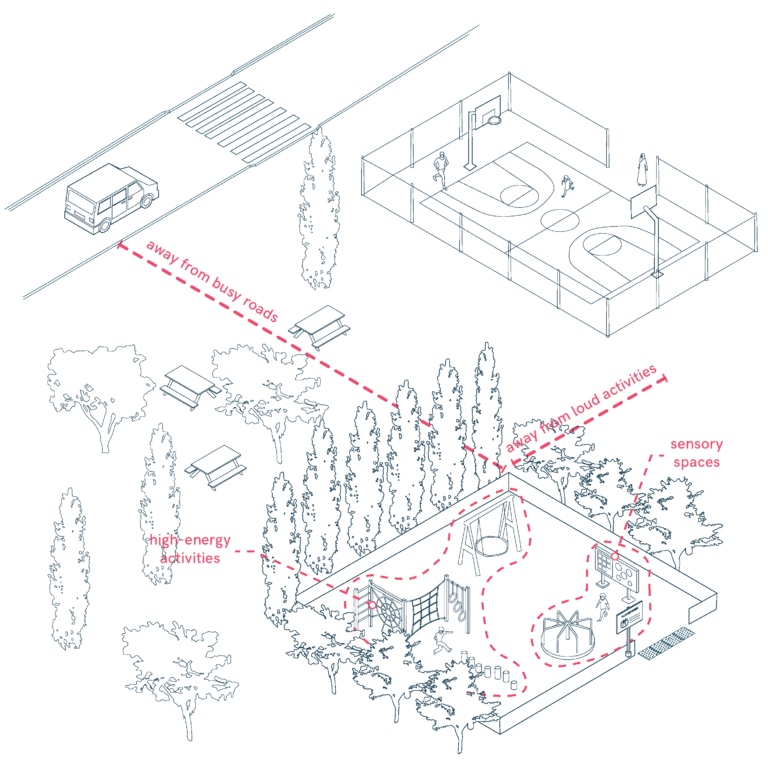
Reduce Stimuli in Overwhelming Environments
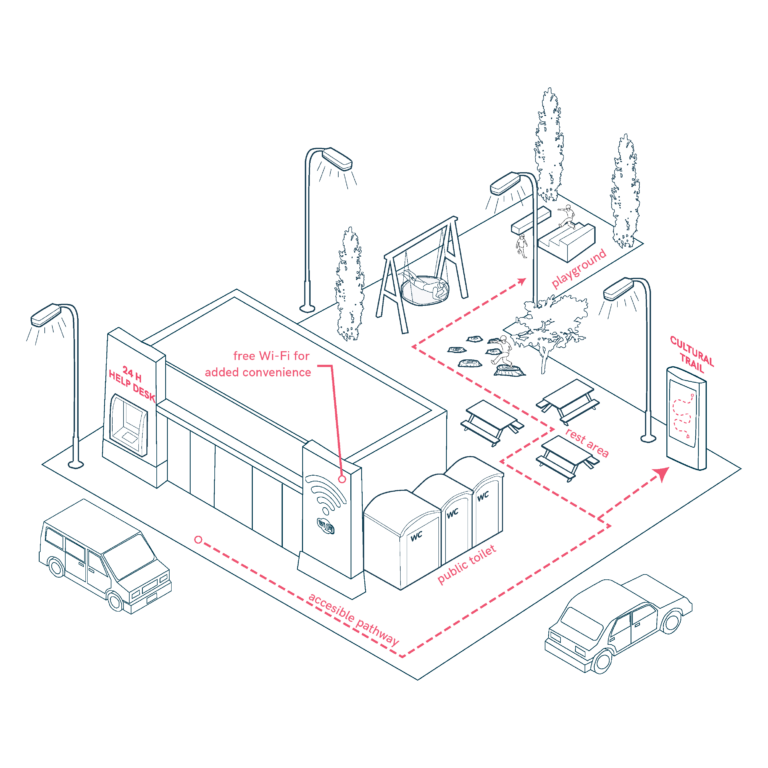
Rest and Service Areas
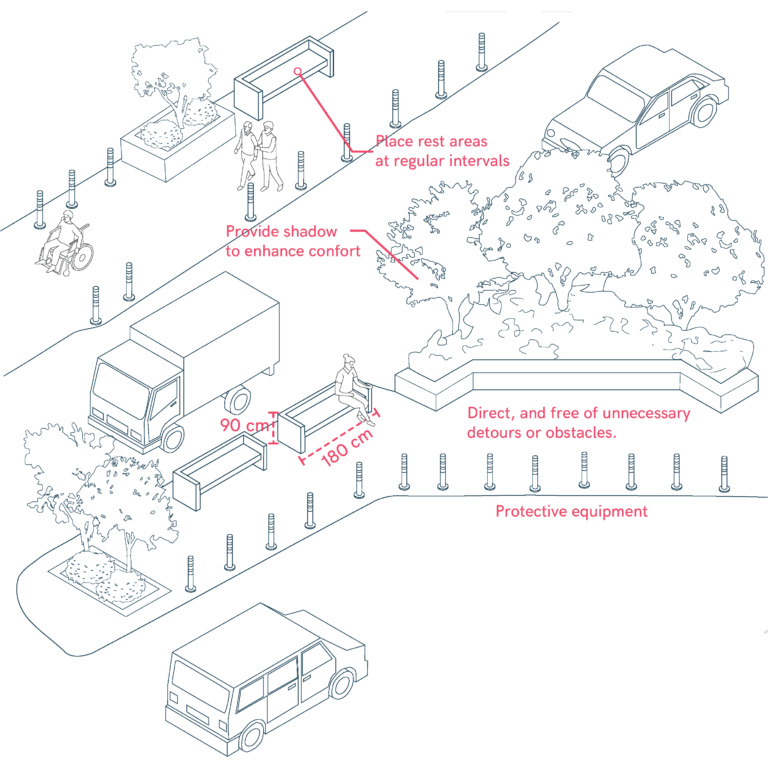
Rest Areas with Clear Access and Comfort
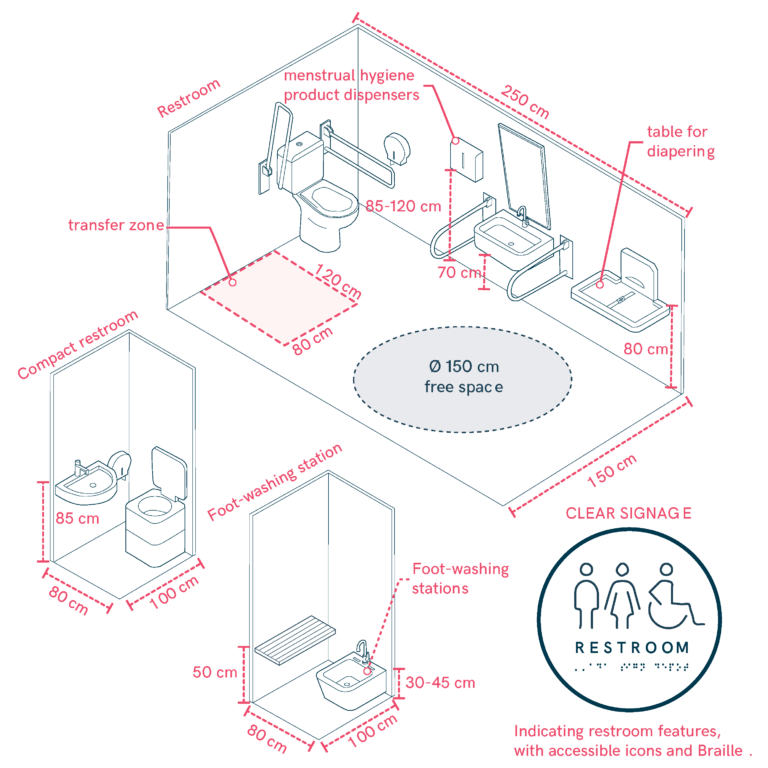
Restroom Design Based on Specific Needs
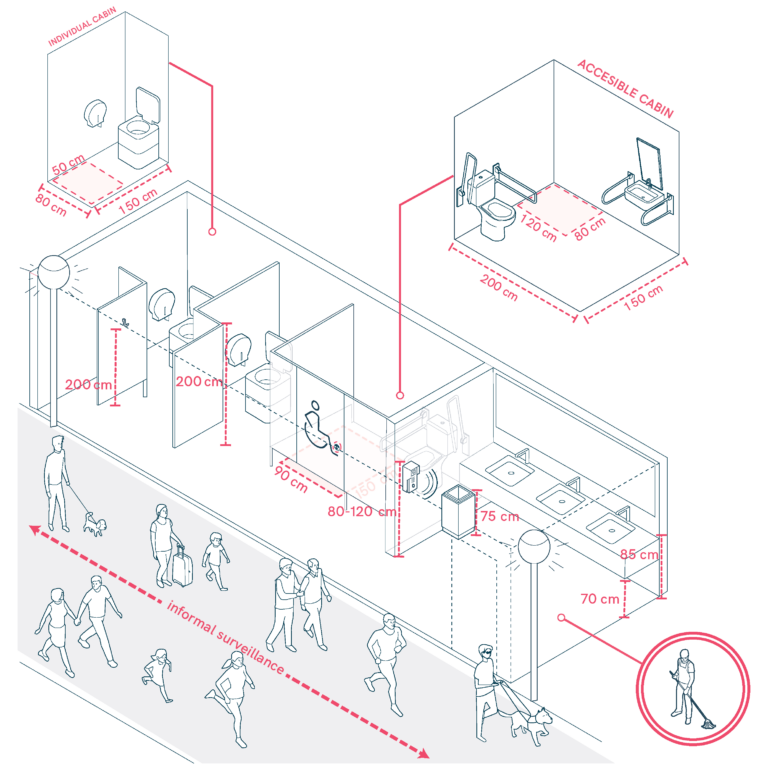
Restrooms in Mobility Hubs
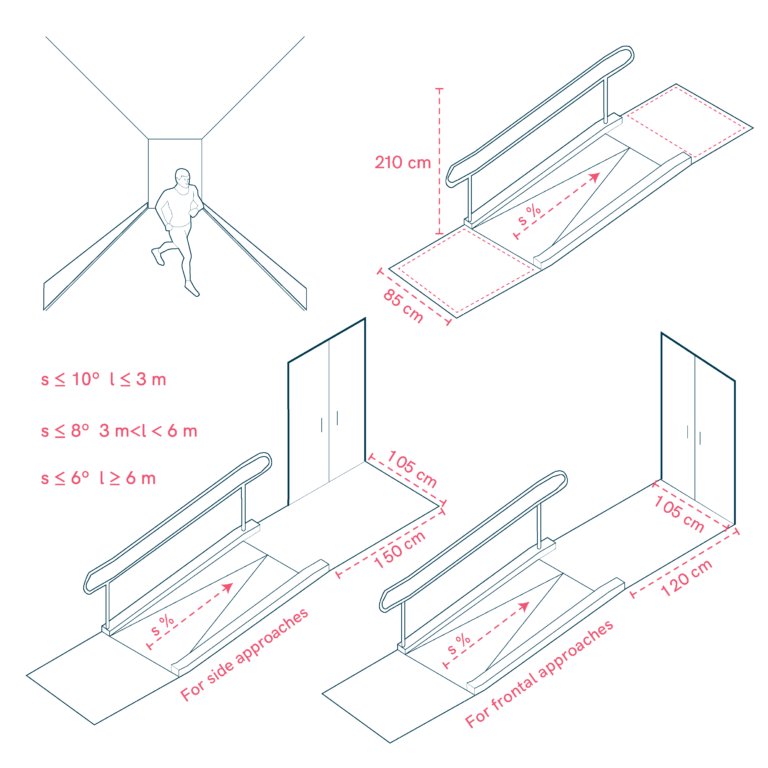
Safe and Accessible Passageways
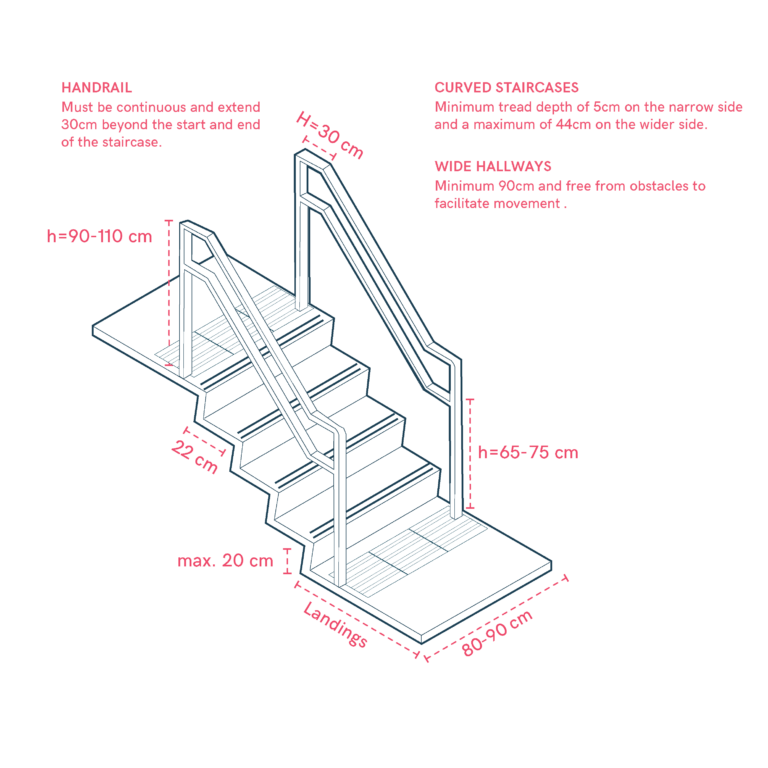
Safe and Accessible Stairs and Hallways
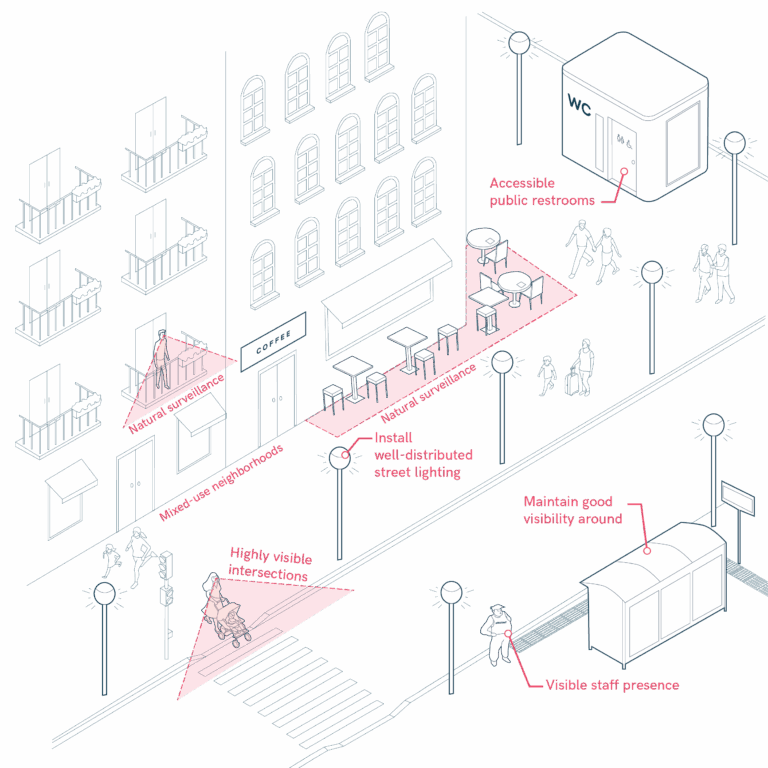
Safe and Comfortable Streets for All
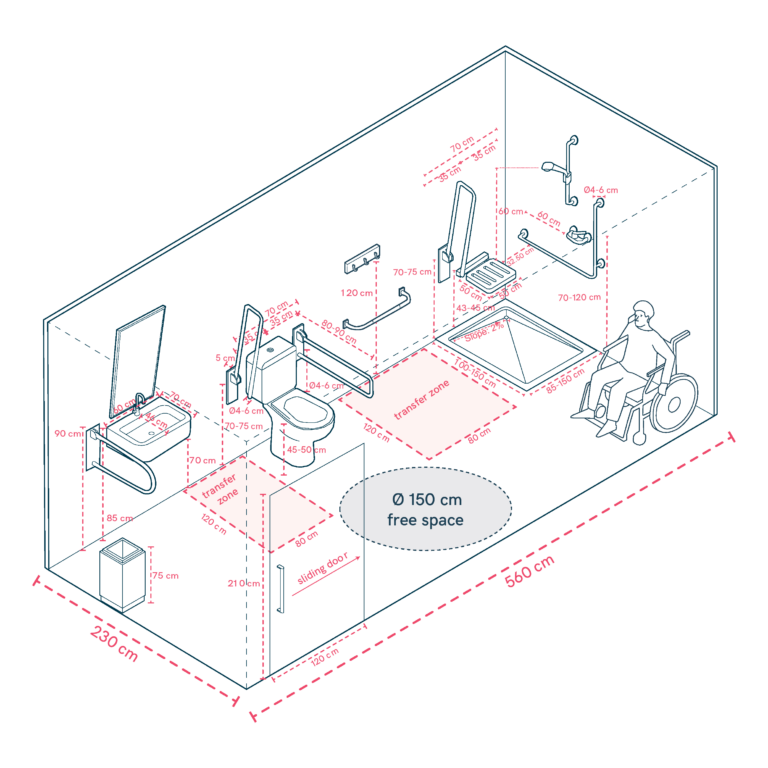
Safe and Functional Bathrooms
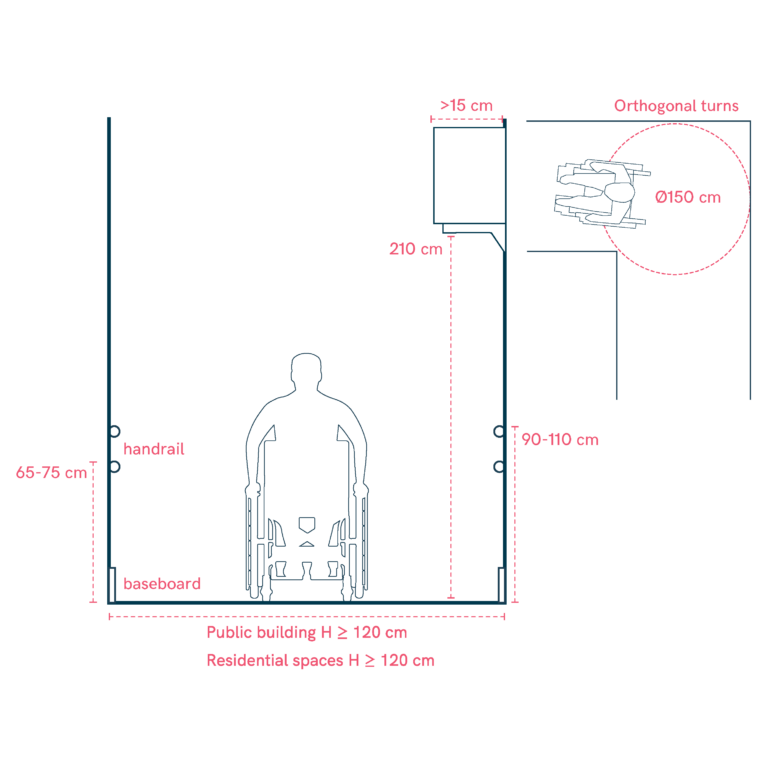
Safe and Intuitive Corridors
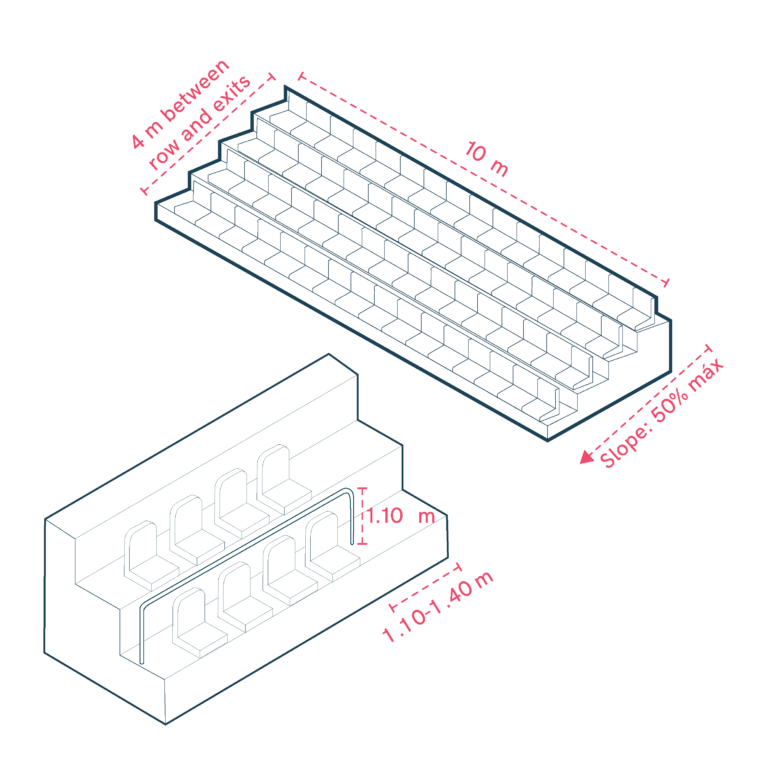
Safe grandstands
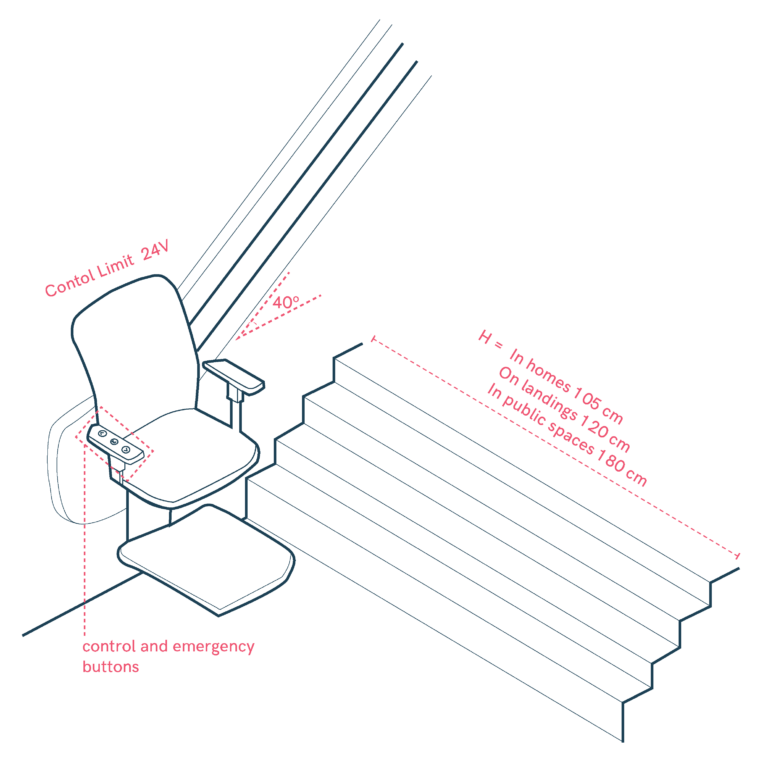
Safe Stair Mobility

Safety on stairs
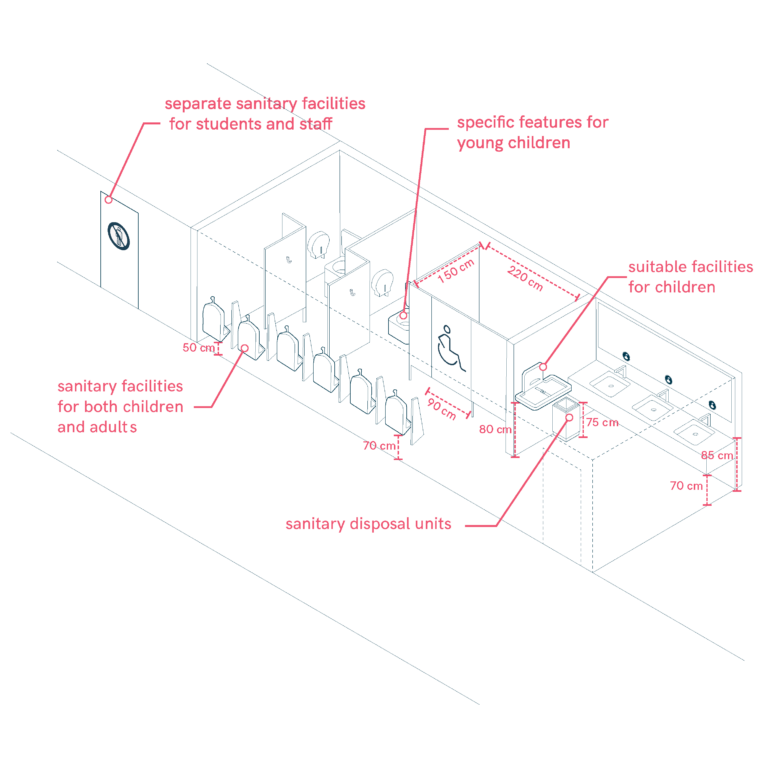
Sanitary Facilities and Restrooms
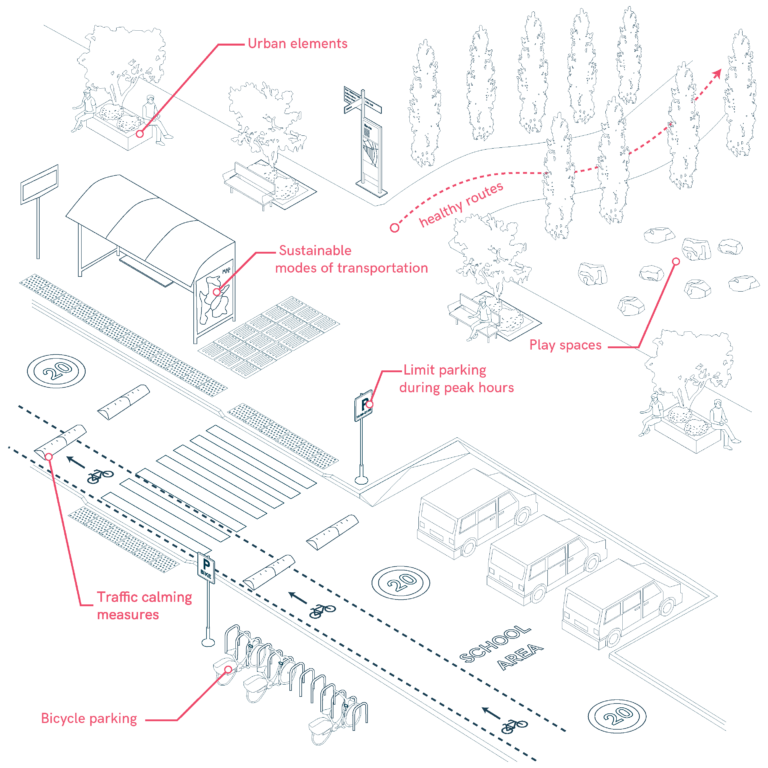
School Pathways
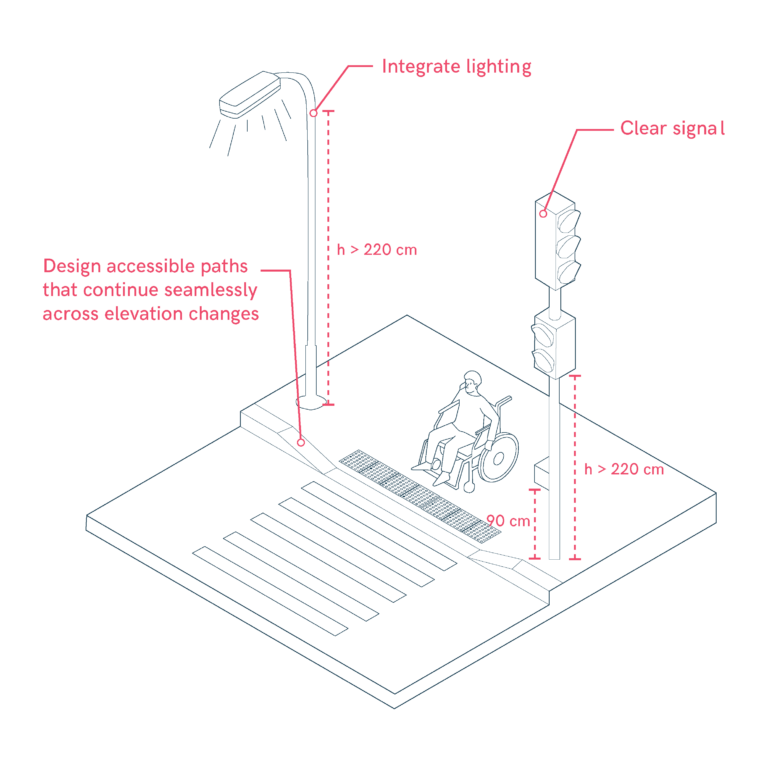
Seamless Continuity
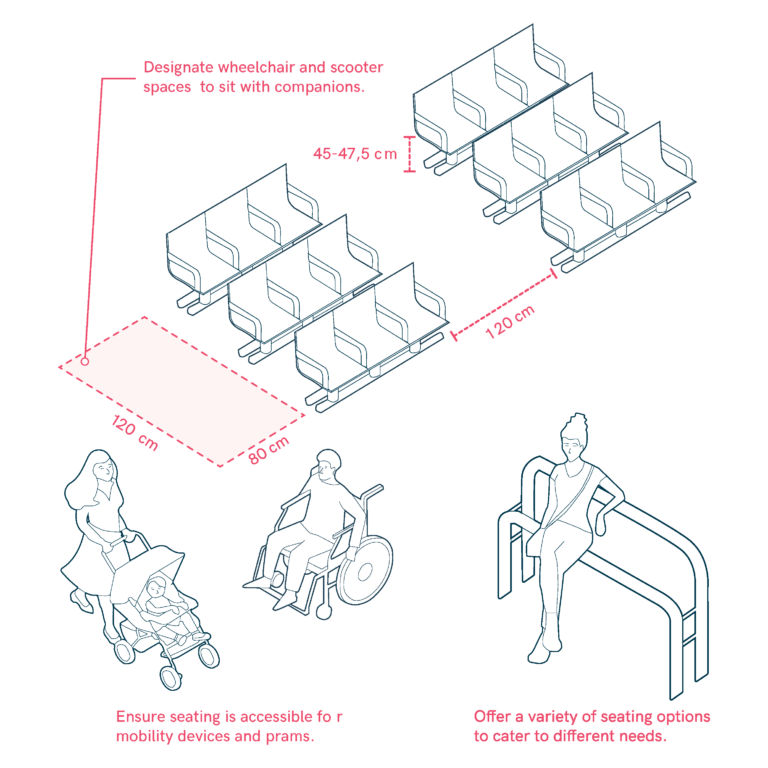
Seating Areas
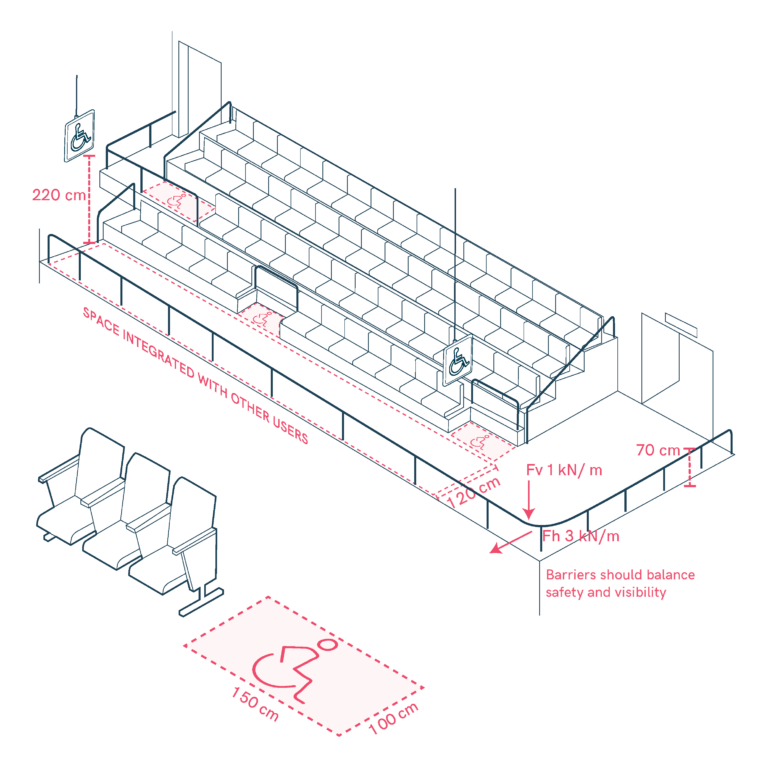
Seating in Public Event Spaces
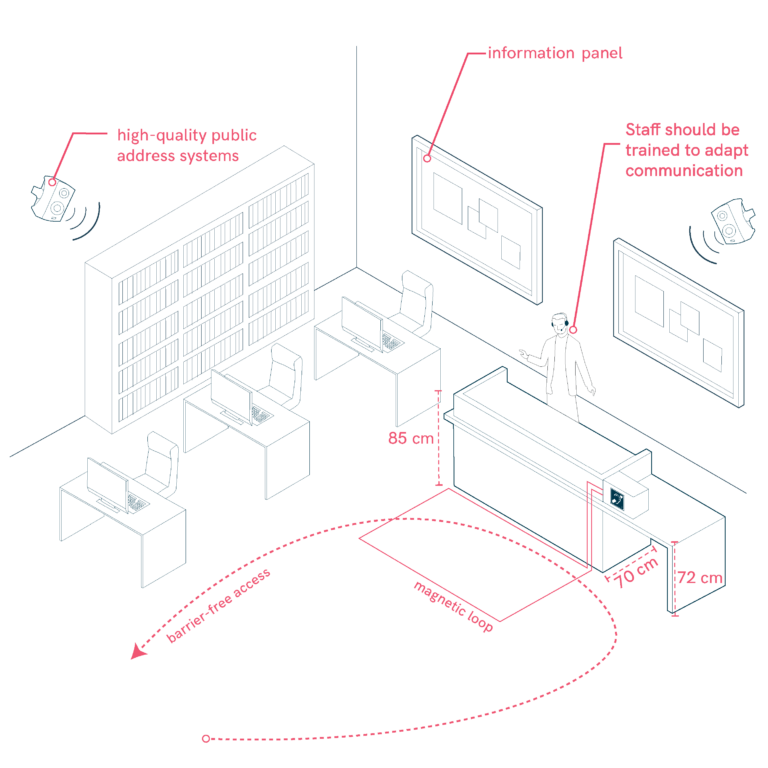
Secretary’s Office Accessibility

Shops and Retail Spaces

Showers Designed for Accessibility and Comfort
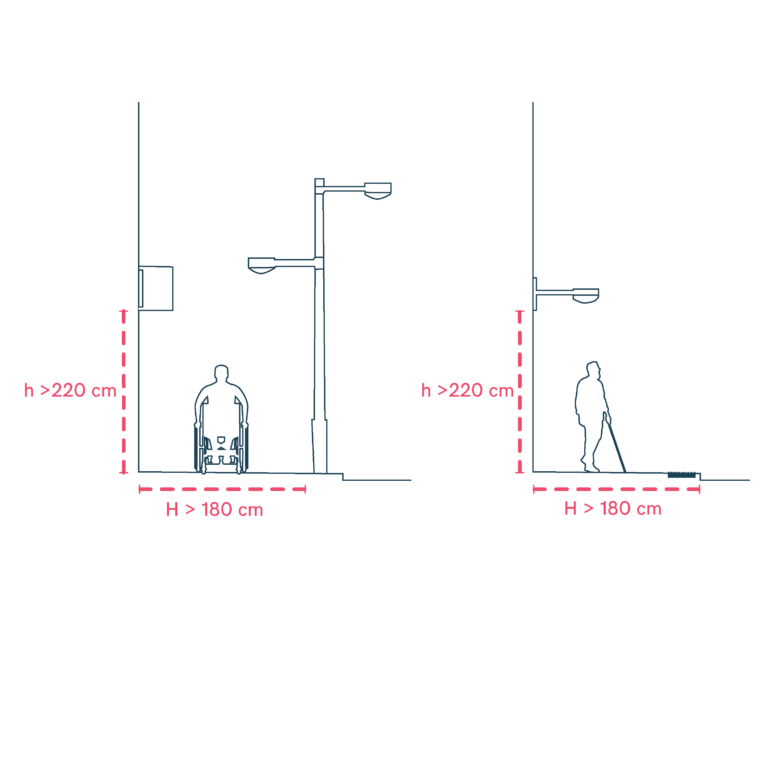
Signage and Lighting Elements
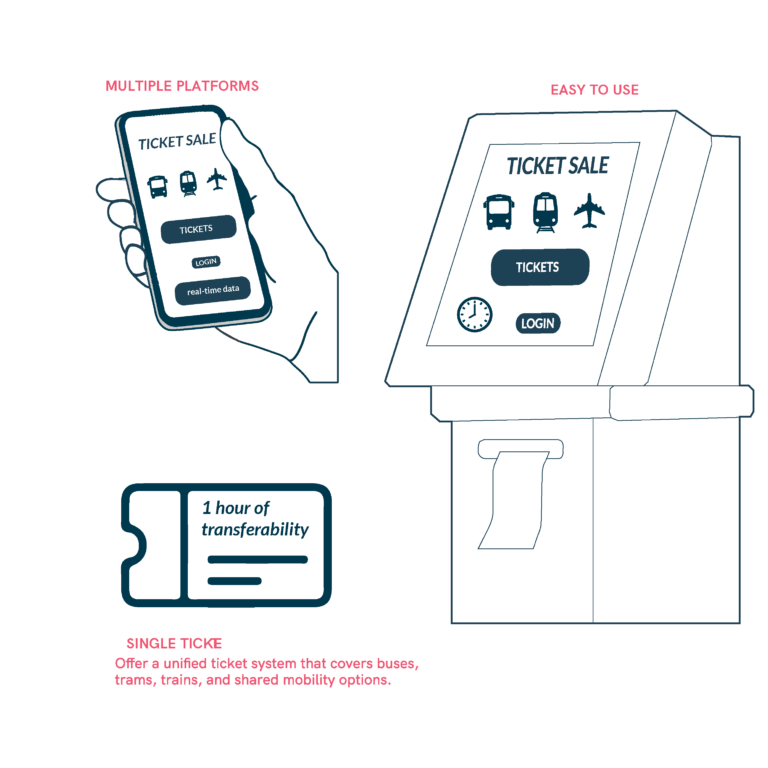
Single Ticket for Multimodal Public Transport
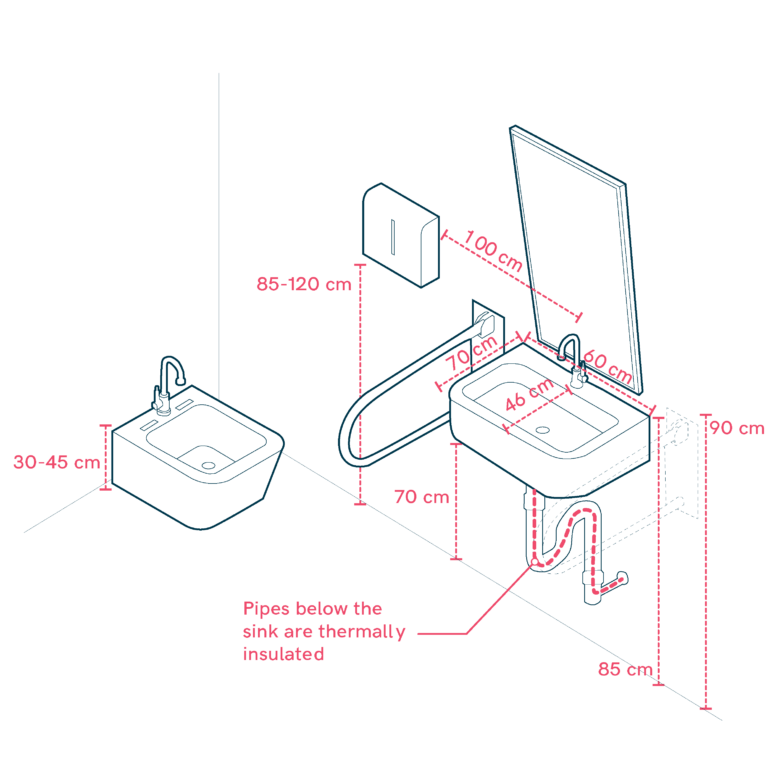
Sinks for Different User Needs
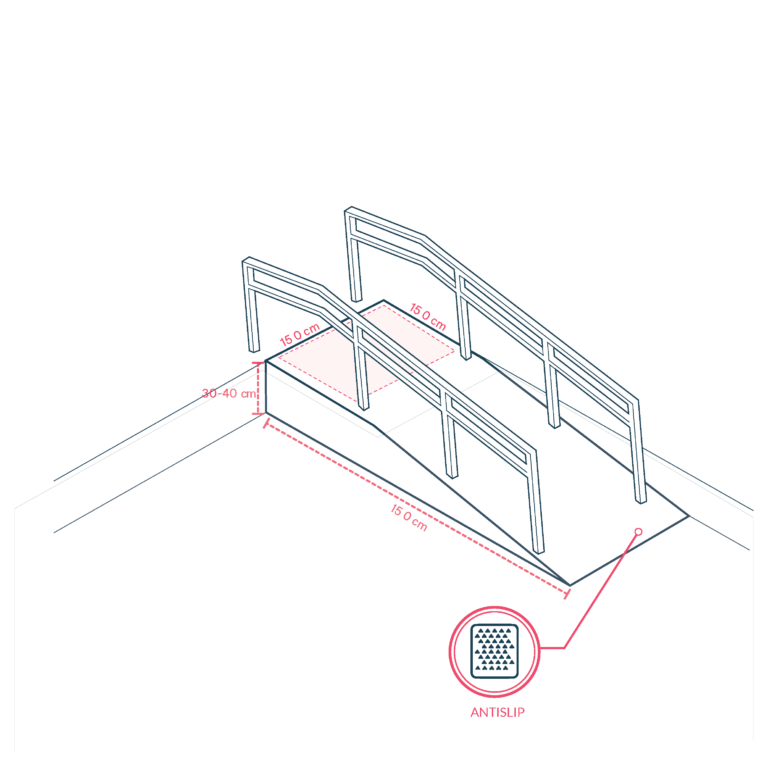
Slopes in swimming pools
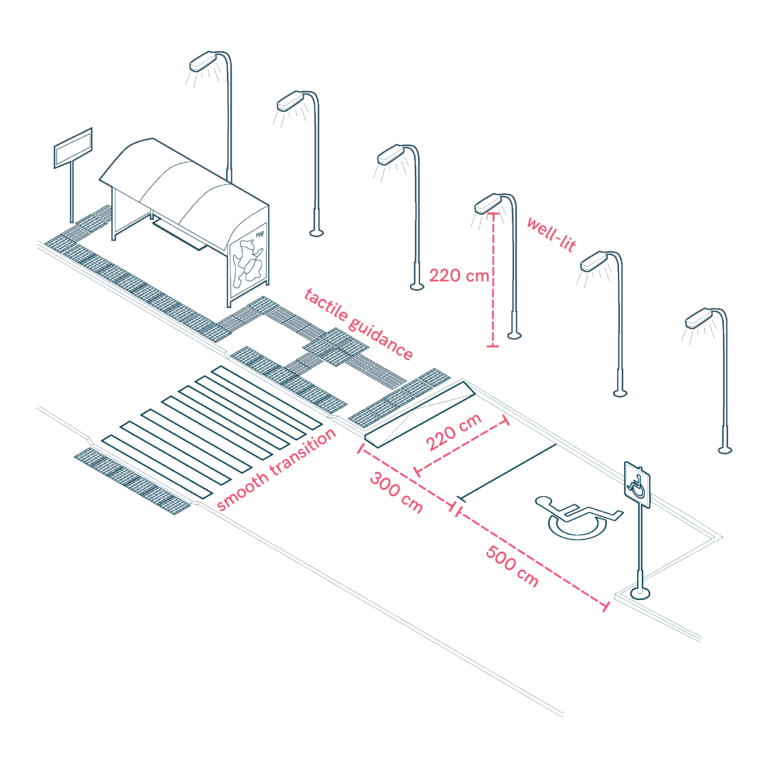
Smooth Transit Connections

Social and Community Housing

Space in front of doors
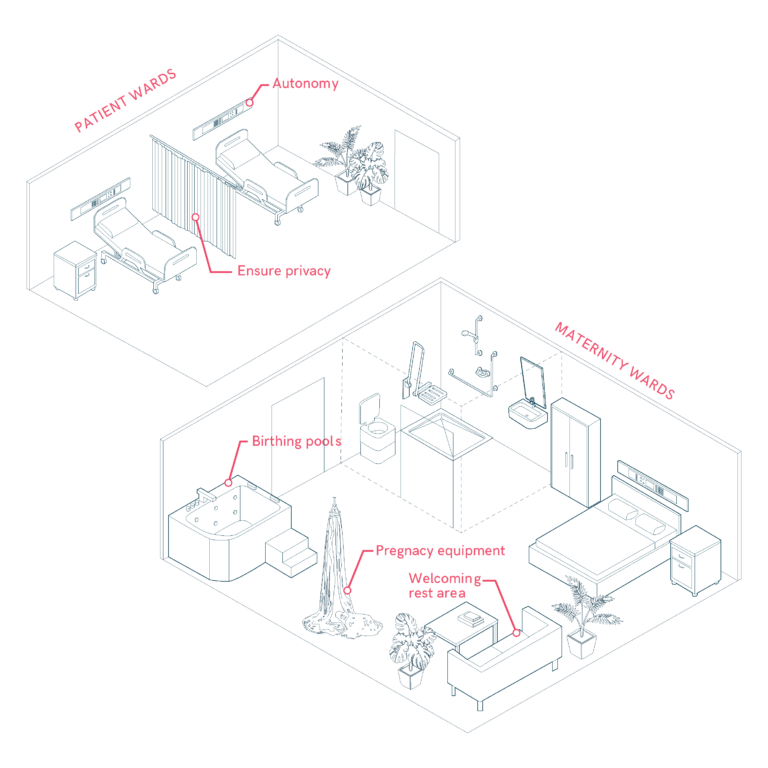
Specialist Areas and Medical Equipment

Specific toilets

Sporting and Recreational Facilities
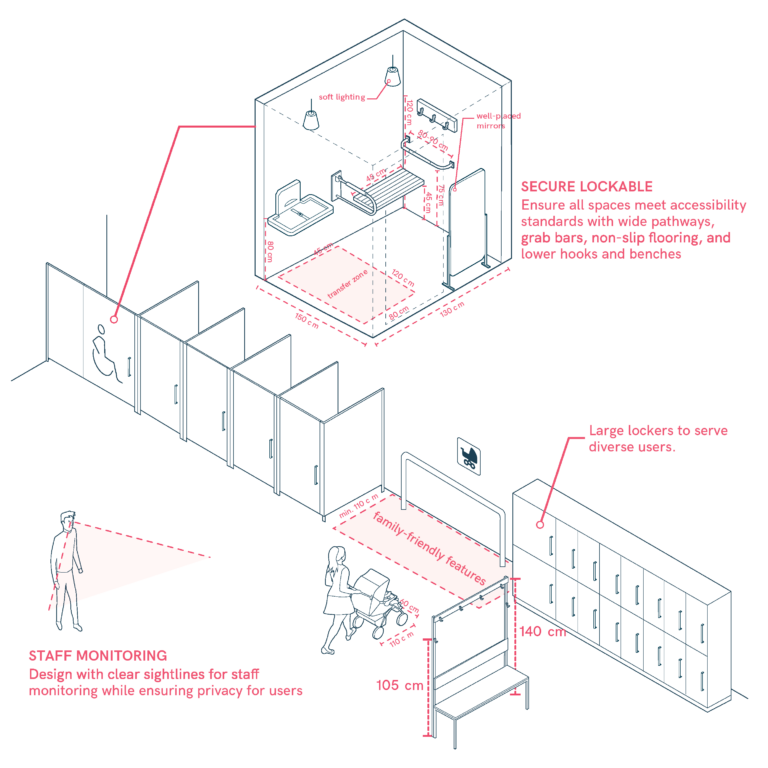
Sports Centre Changing Rooms

Stair Lift Platform
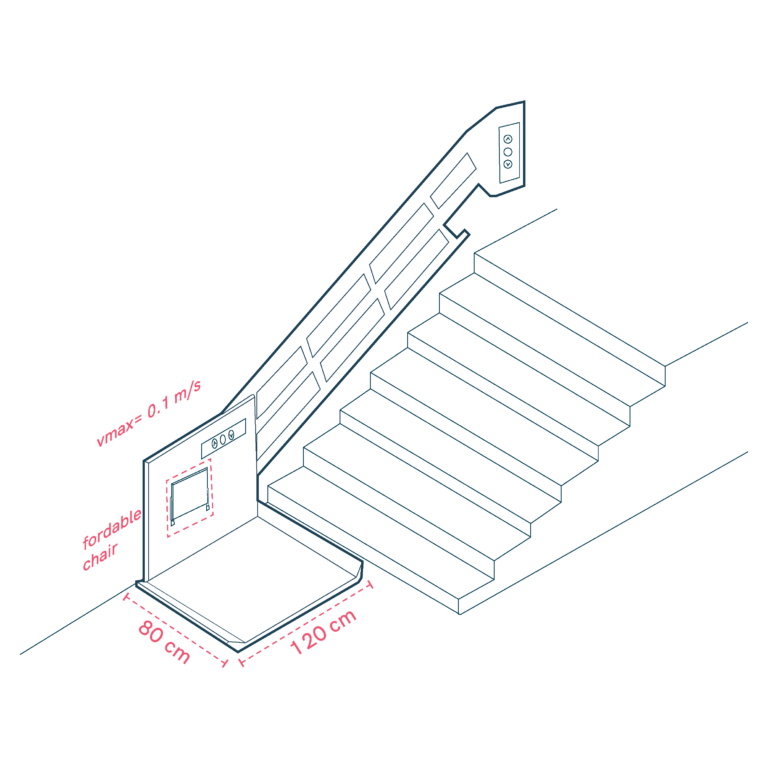
Stair Lift Platform
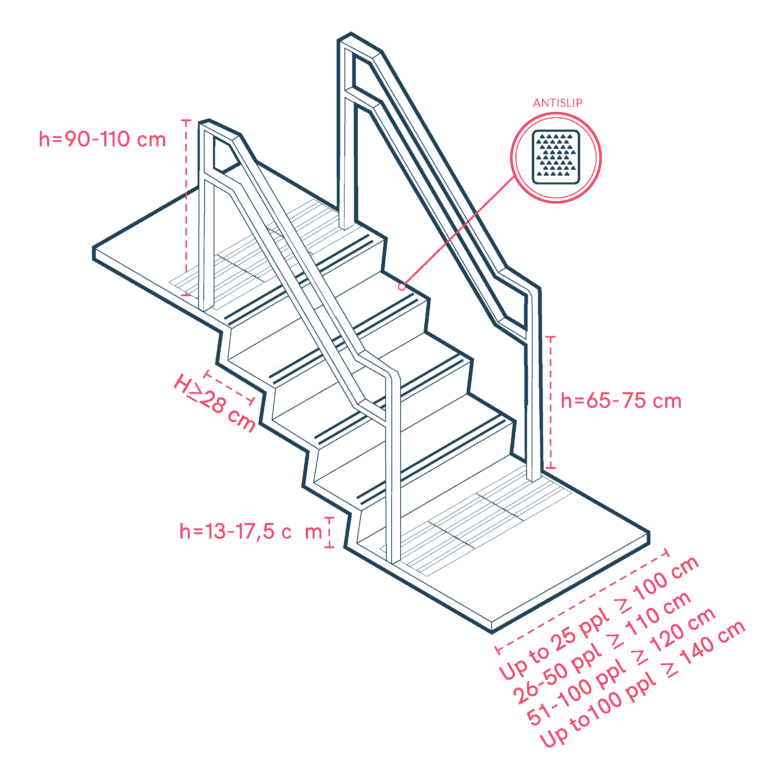
Staircase Design for Accessibility
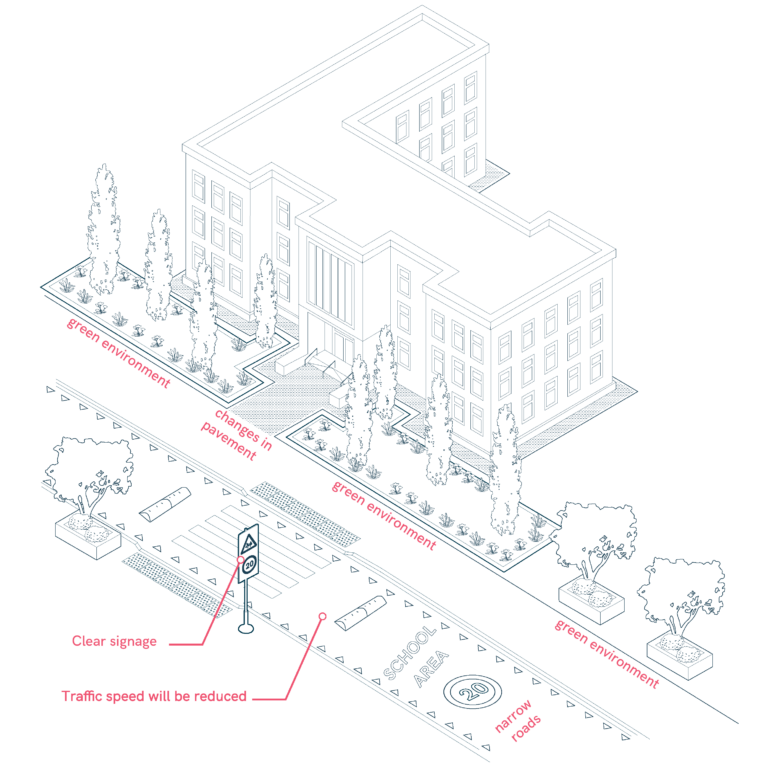
Sustainable and Resilient School Streets
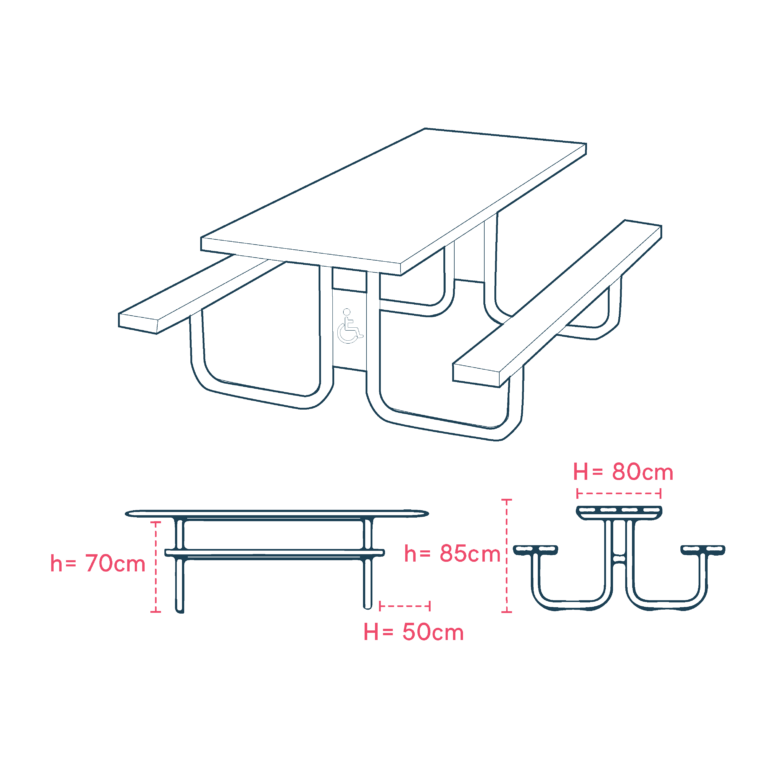
Tables and Picnic Areas
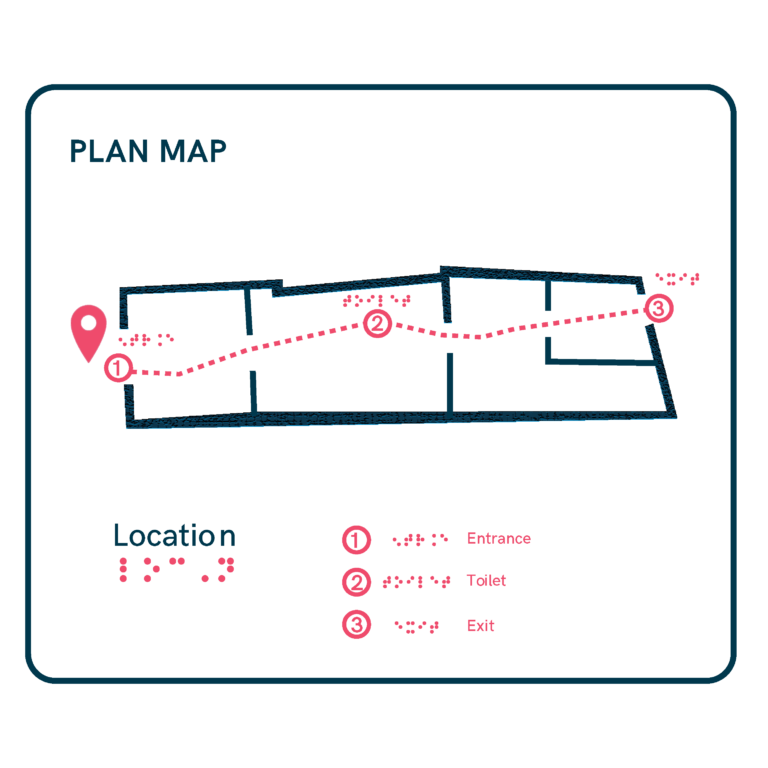
Tactile Design

Taxi Accessibility
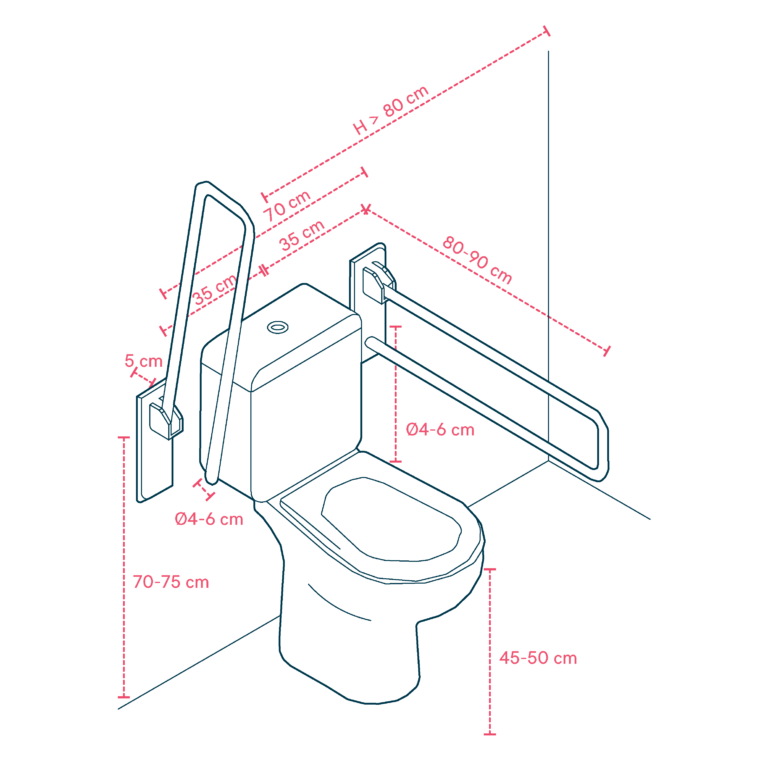
Toilets for Functional Accessibility
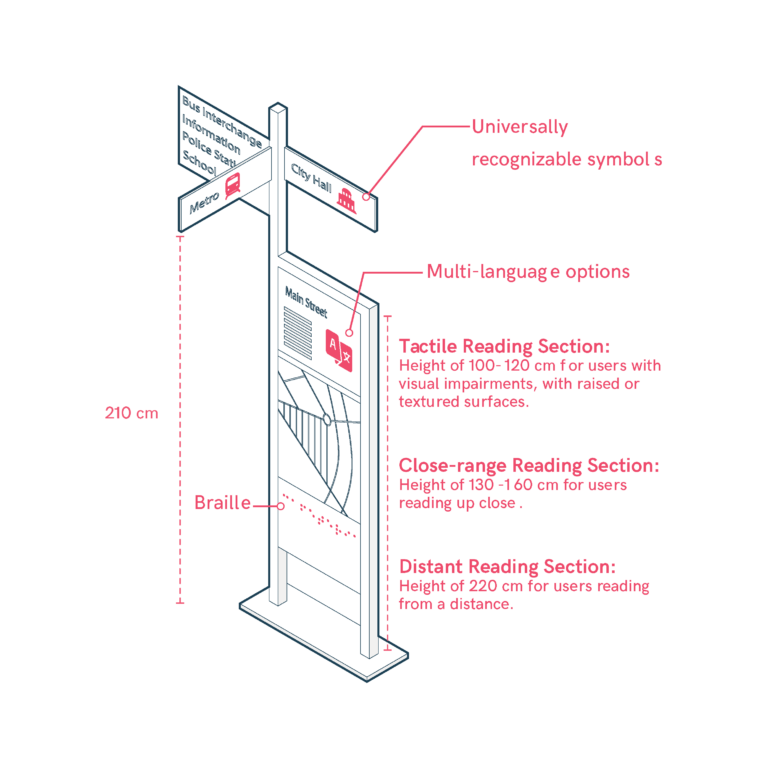
Totems in Wayfinding Systems
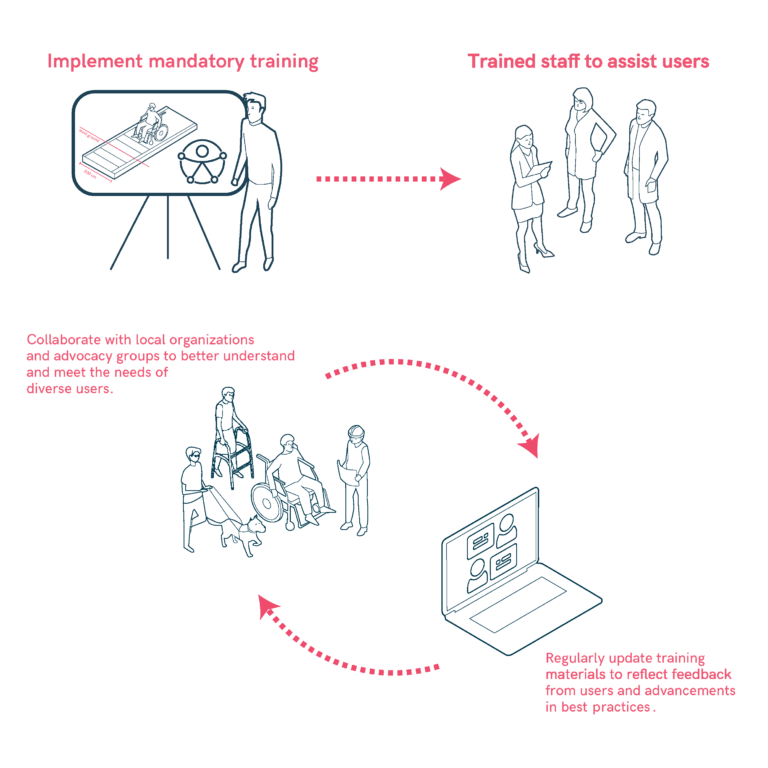
Training and Education

Transport Data Collection
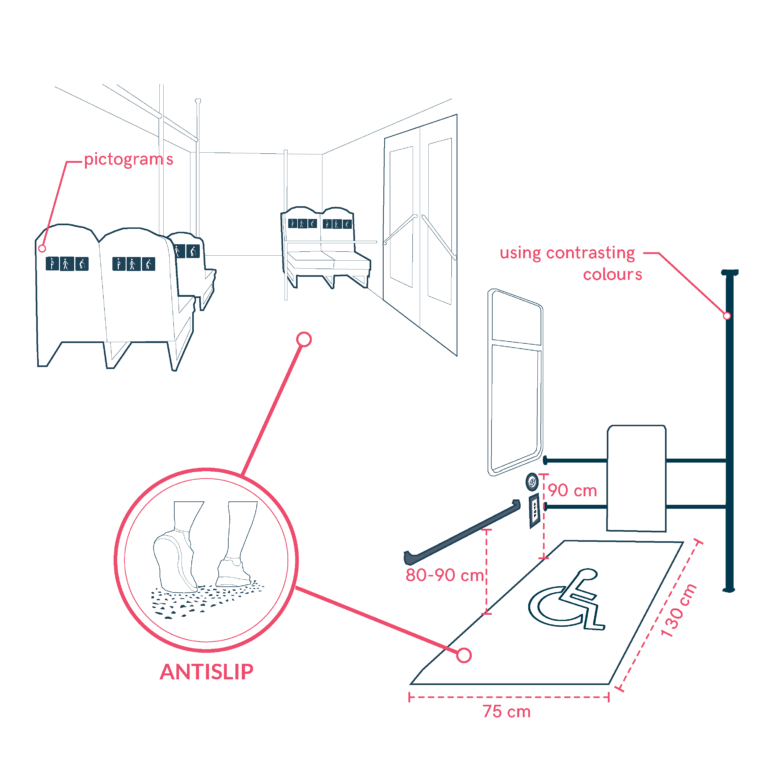
Travelling by Bus
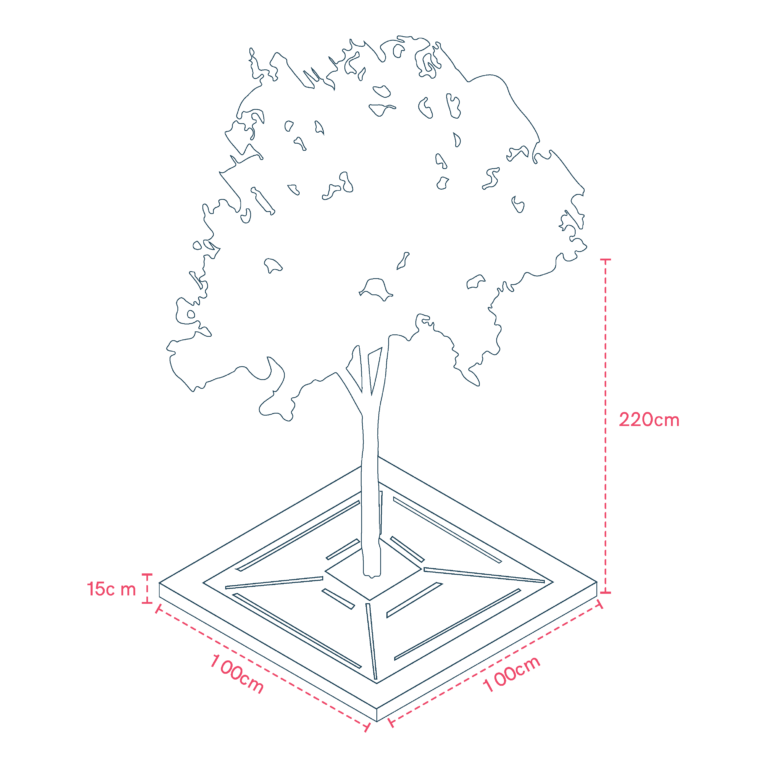
Tree Pit Safety and Accessibility
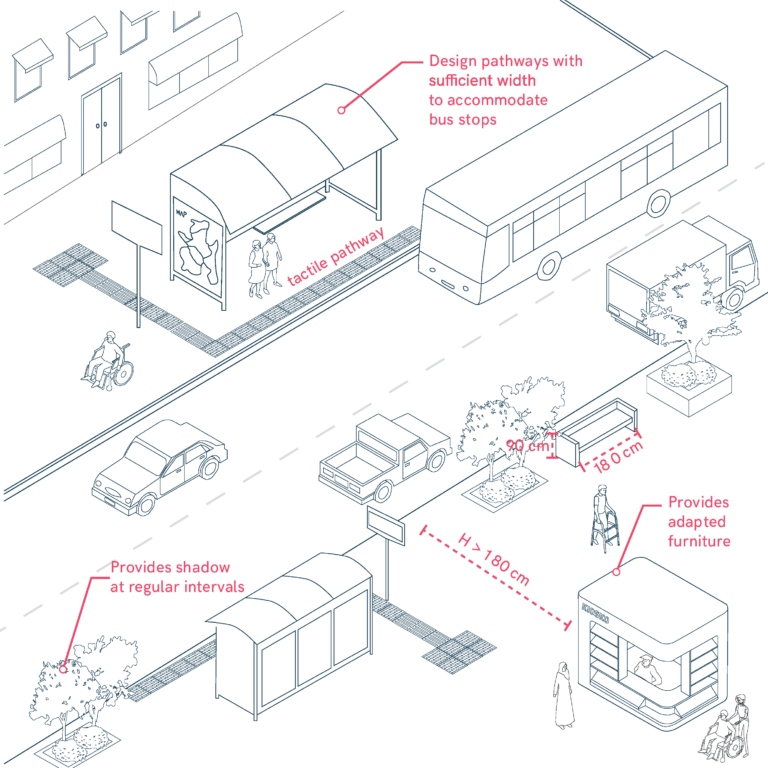
Urban Furniture and Amenities
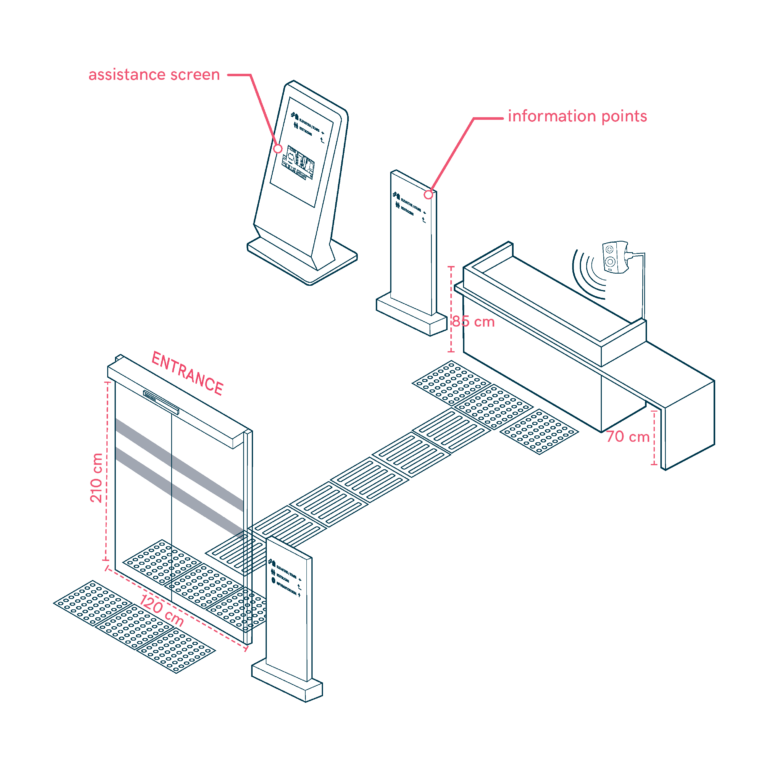
User-Friendly Lobby
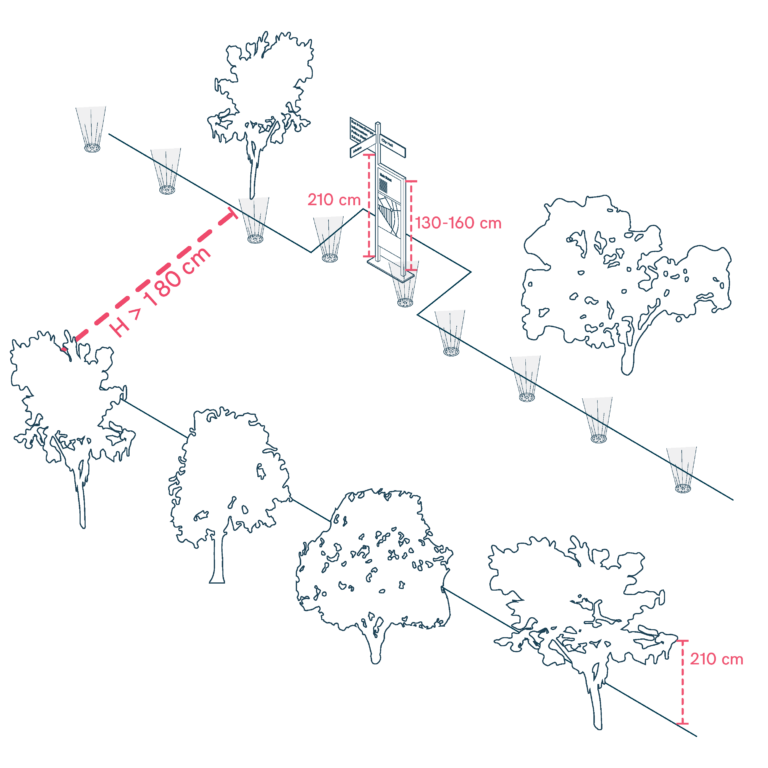
Vegetation and Landscape Design
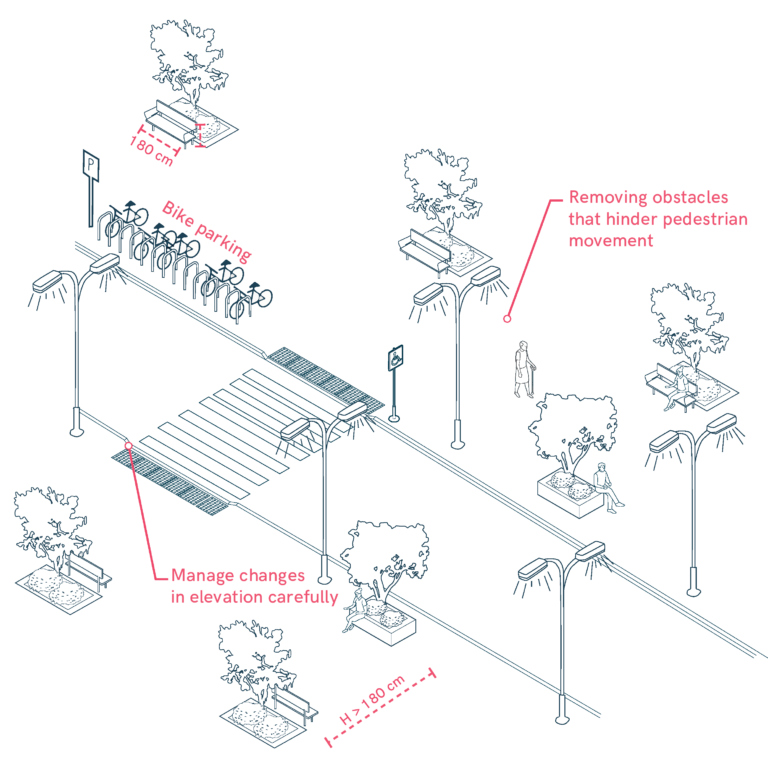
Vehicular Ramps and Pedestrian Pathways
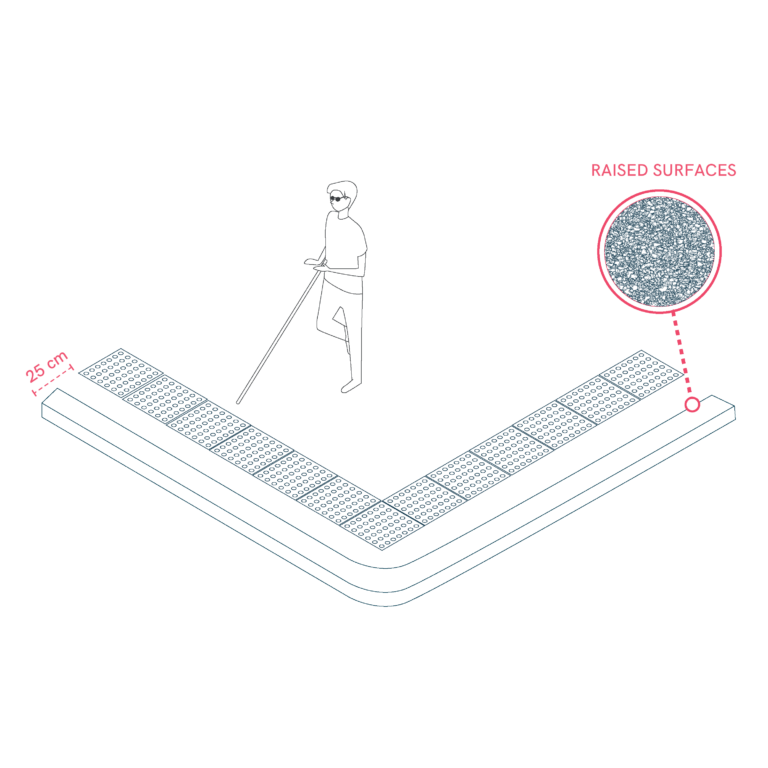
Visual and Tactile Differentiation
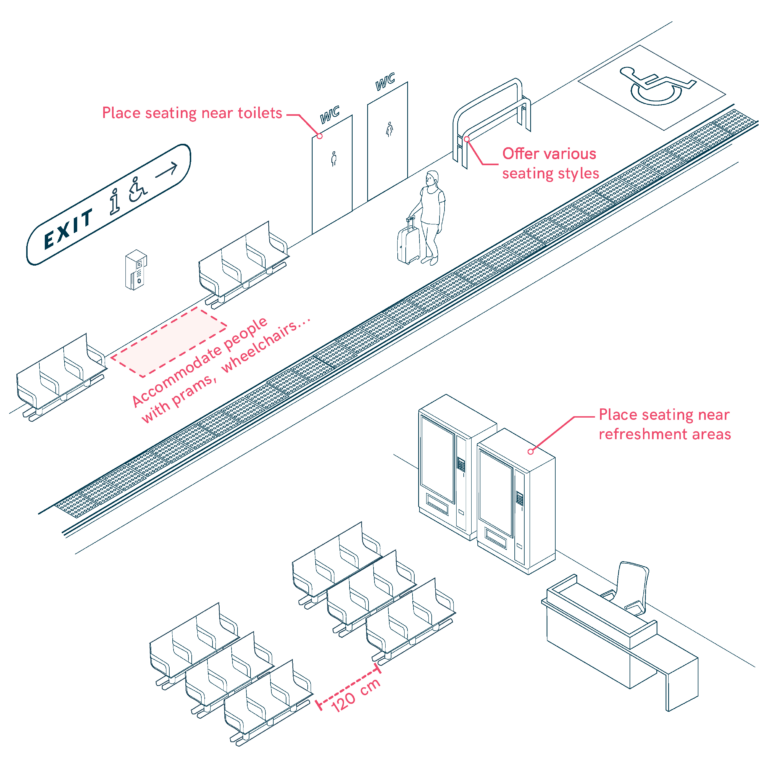
Waiting Areas
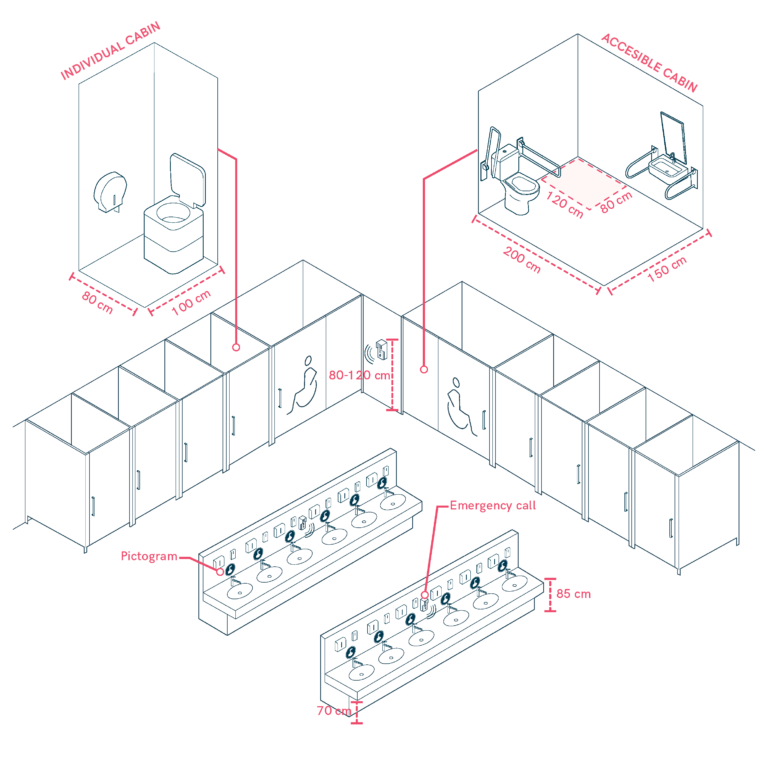
Washrooms for Sports Centers
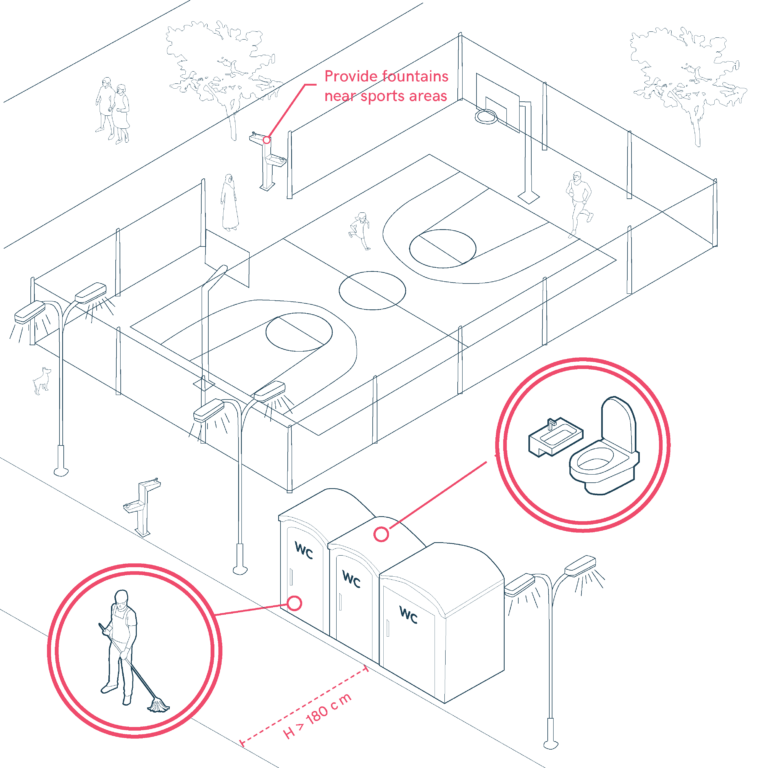
Water and Hygiene Facilities
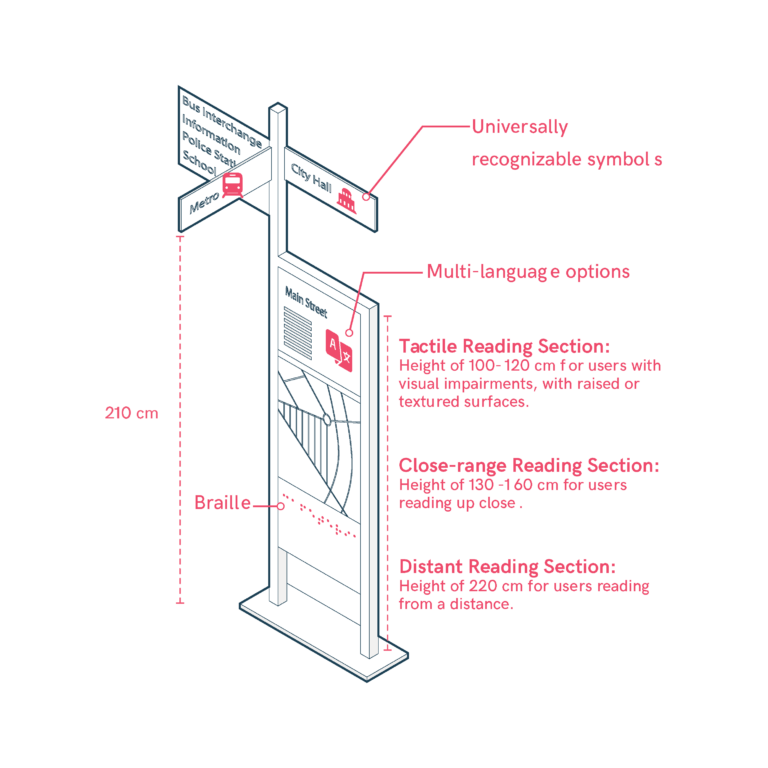
Wayfinding Strategies
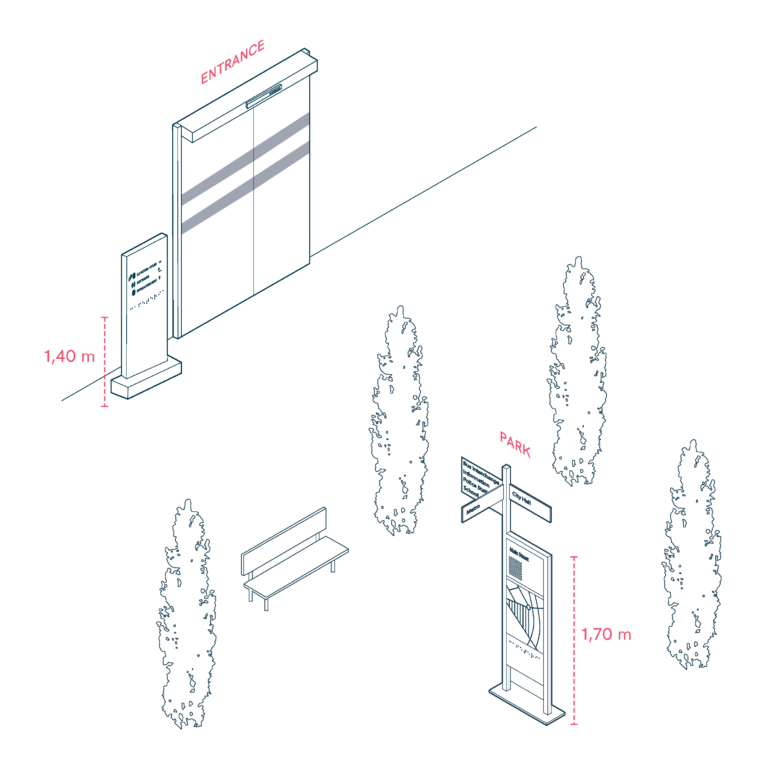
Well-Placed Signs
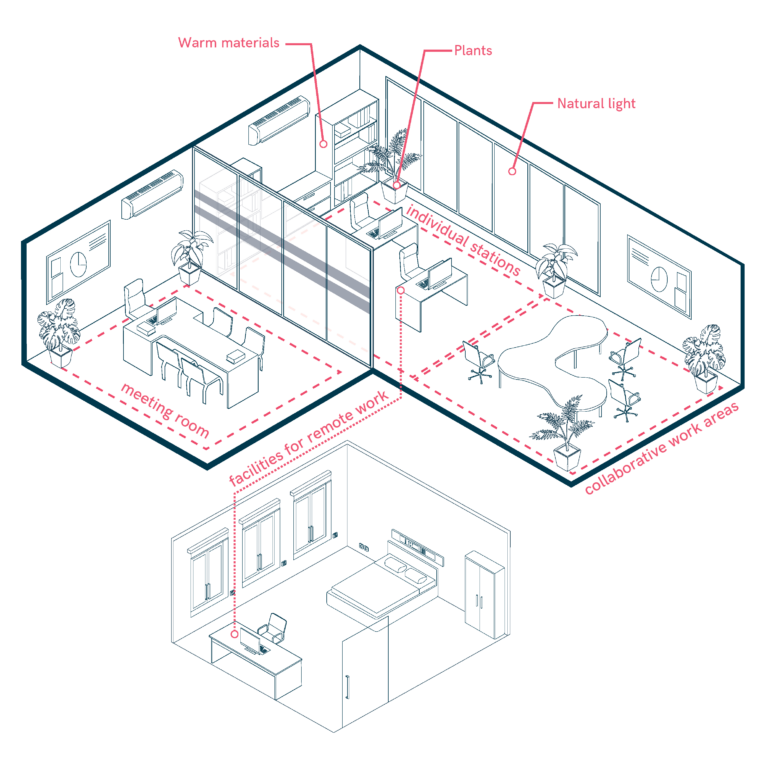
Wellbeing and Flexibility
